|
|

|
Day 17, Monday 4 December
Meethip Hotel……..Locating Meethip Hotel after dark last night was very much a bonus under the circumstances. However, this three-story hotel is tired, lacking investment in recent years. It’s certainly not a new built. The rooms are reasonably large but rather austere, while the bathroom is basic to say the least and rather smelly: Surprising then that I get a better night’s sleep. By 9pm my notes are up to date and I can start packing. Not long after 10am we’re ready to depart with the initial sites of the day set up on the GPS locator.
Strawberry Fields Forever……..Strawberry fields in Thailand are not uncommon but require cooler temperatures found at altitude. It wasn't in the script that we should go picking strawberries but Katoon decides to overide the GPS locator for the next destination. There are enough situations that I've noted where there is good reason to do so, but not in this case. Wasn't the best stawberries I've eaten either.
Meethip Hotel……..Locating Meethip Hotel after dark last night was very much a bonus under the circumstances. However, this three-story hotel is tired, lacking investment in recent years. It’s certainly not a new built. The rooms are reasonably large but rather austere, while the bathroom is basic to say the least and rather smelly: Surprising then that I get a better night’s sleep. By 9pm my notes are up to date and I can start packing. Not long after 10am we’re ready to depart with the initial sites of the day set up on the GPS locator.
Strawberry Fields Forever……..Strawberry fields in Thailand are not uncommon but require cooler temperatures found at altitude. It wasn't in the script that we should go picking strawberries but Katoon decides to overide the GPS locator for the next destination. There are enough situations that I've noted where there is good reason to do so, but not in this case. Wasn't the best stawberries I've eaten either.
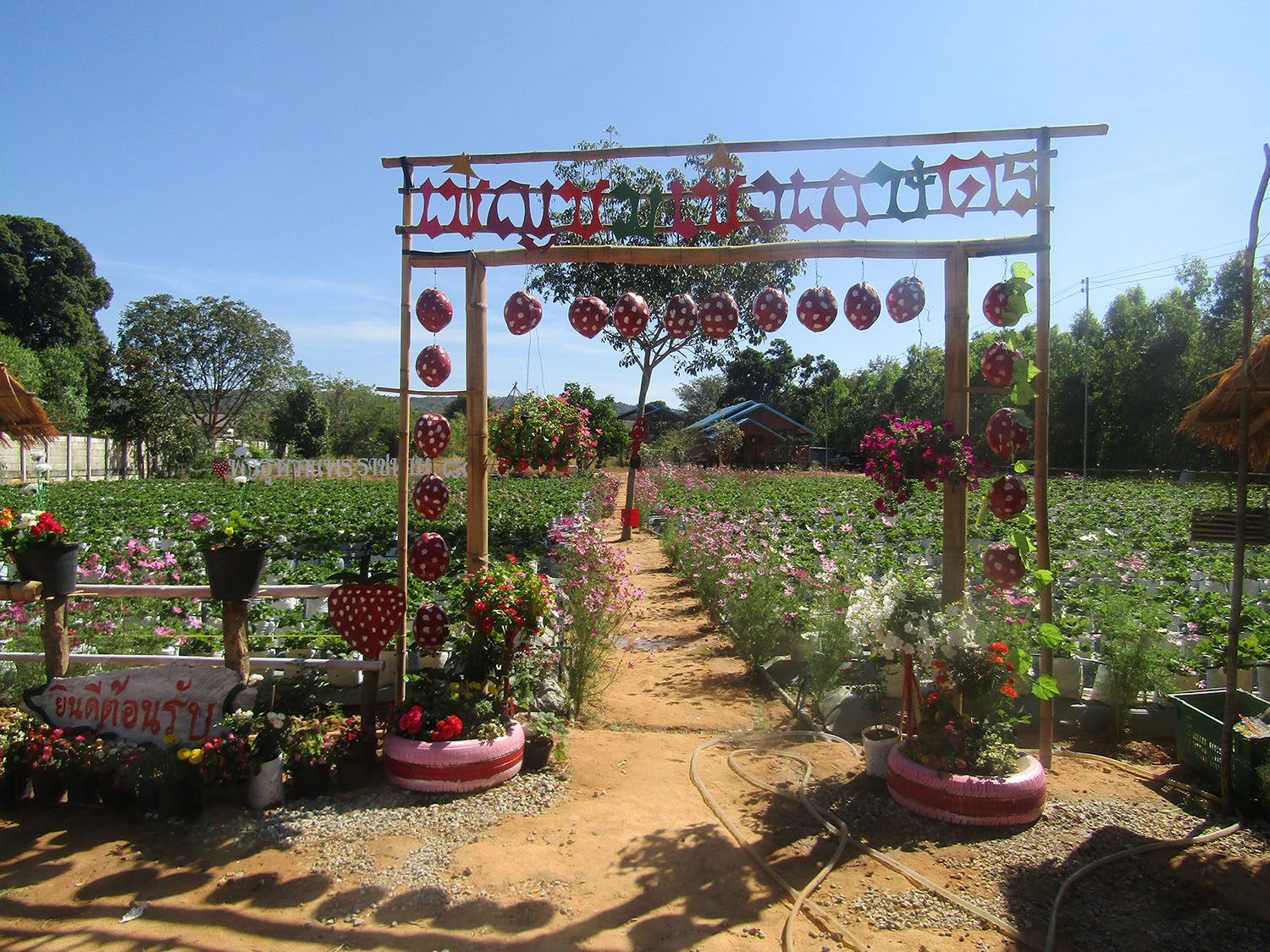
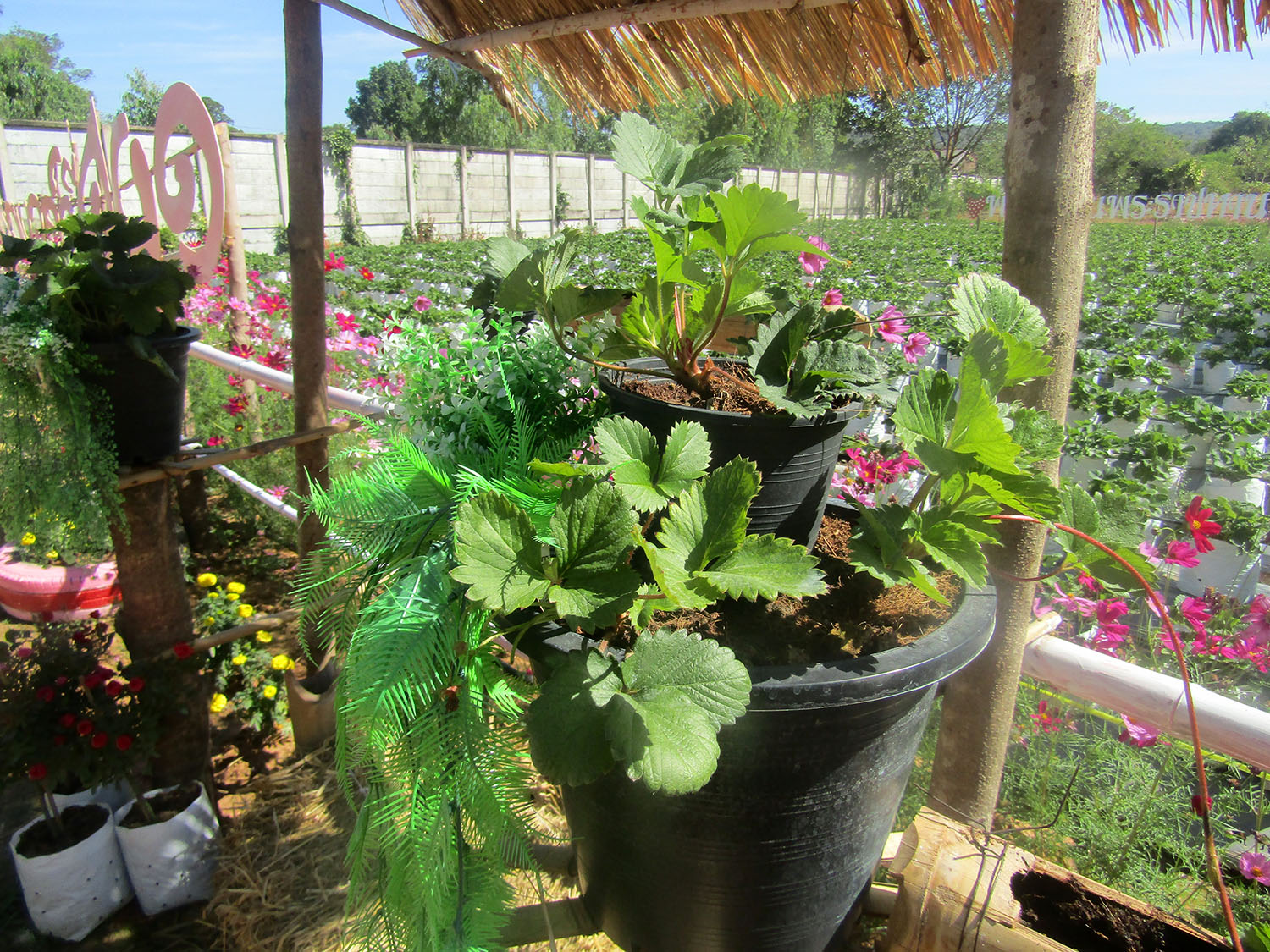
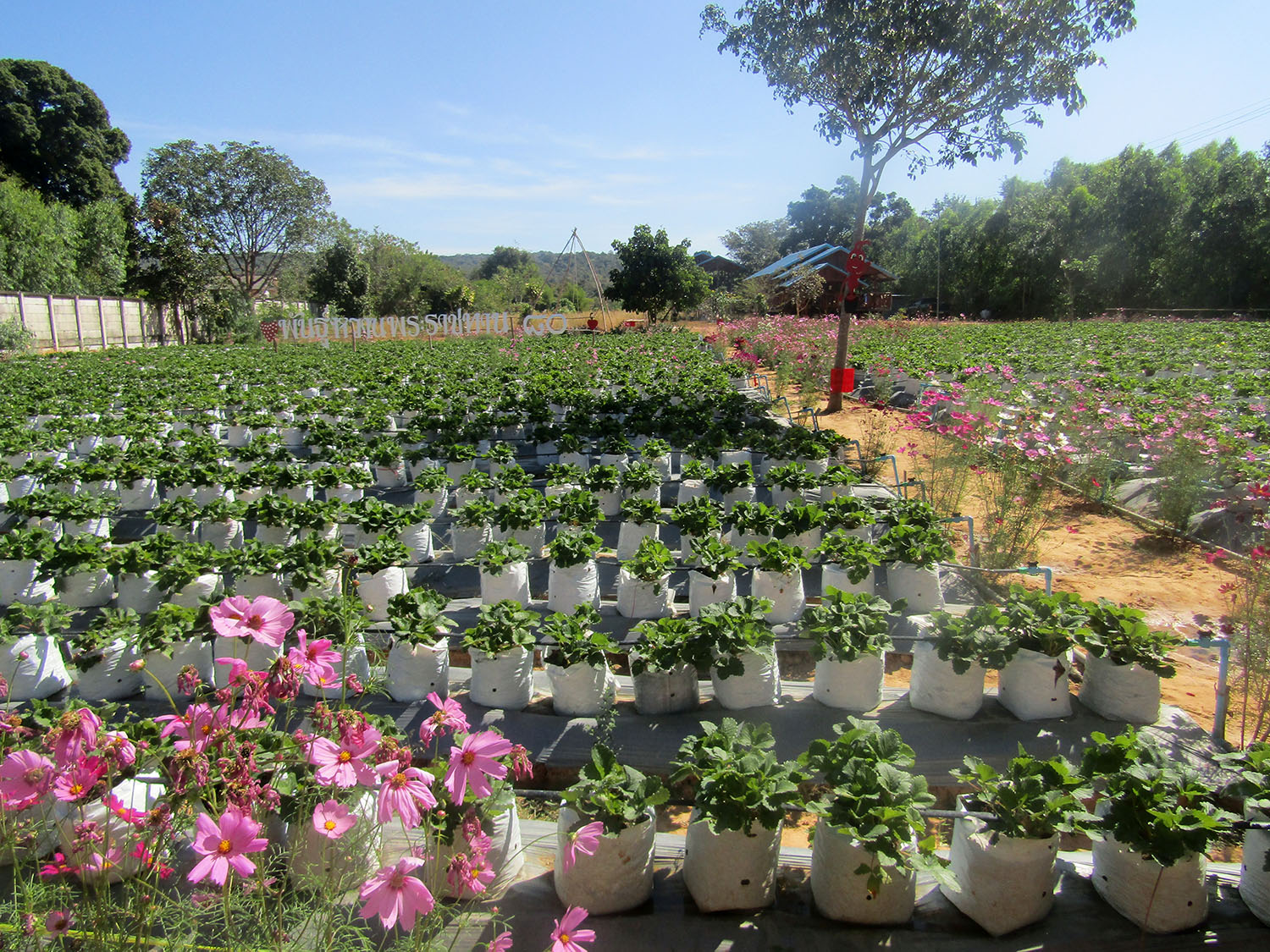 Strawberry Fields, Nong Phok District, Roi-Et Province
Strawberry Fields, Nong Phok District, Roi-Et Province
Waterfall Cave Soda……..So the first location of the day is still in Nong Phok District. We actually passed it during our journey from Kalasin province yesterday. Waterfall Cave sounds a bit odd; is it a waterfall or a cave? Well, the answer is a mixture of both, added to which it is a Buddhist temple. To reach the cave there is a concrete staircase leading down towards the waterfall. As the path levels out, water is seen trickling down the sheer rock face besides the path. This soon becomes an overhang covering a width of several metres and a length of perhaps 100 metres creating a refuge for the monks. While the waterfall on the right hand side is dry, water still spills over the lip more like heavy rain than a waterfall. It would be fascinating to see what happens here during the rainy season but the area they describe as a cave will remain dry. Having learnt what a waterfall cave is I can move on and close out this district.
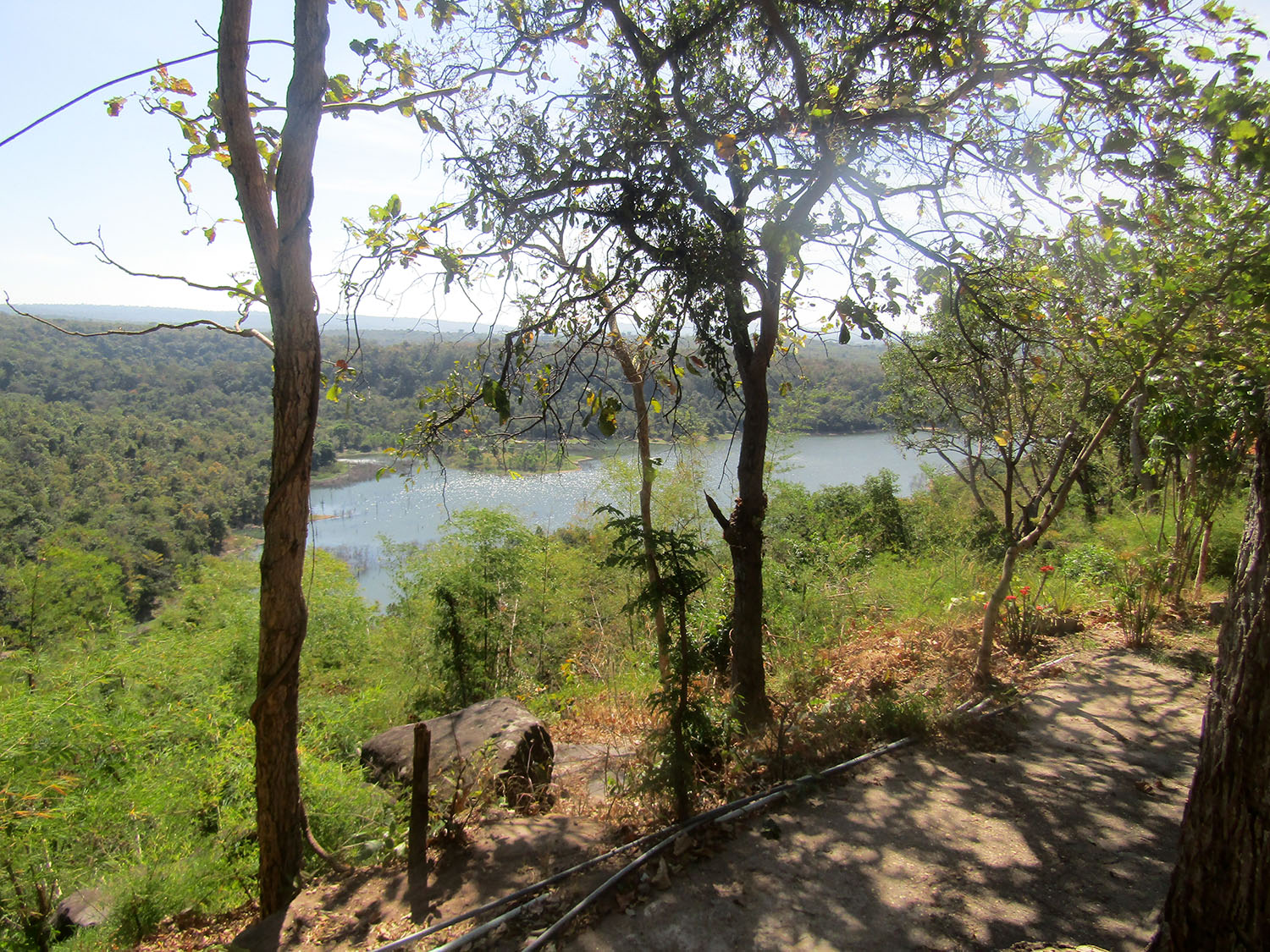
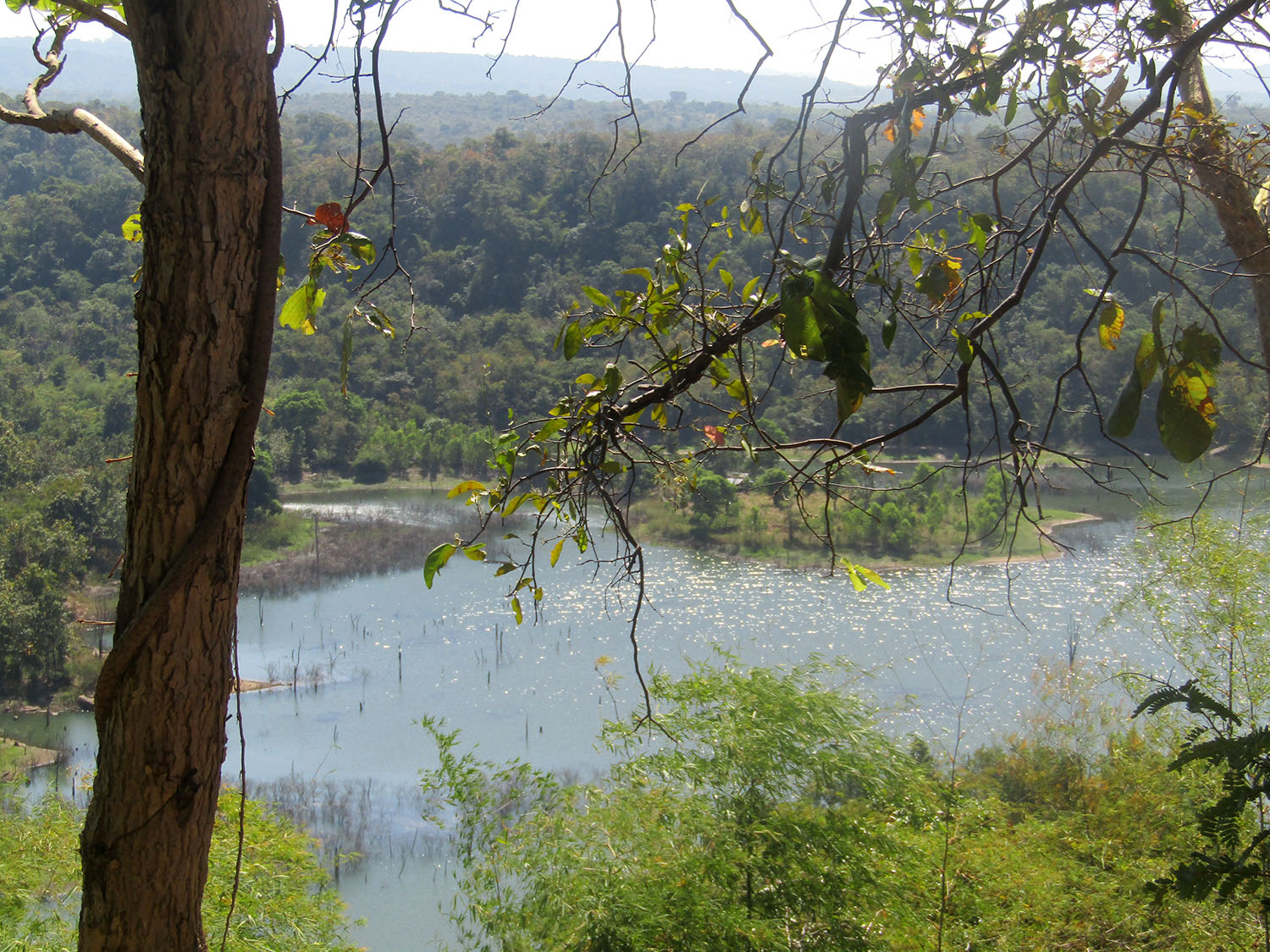
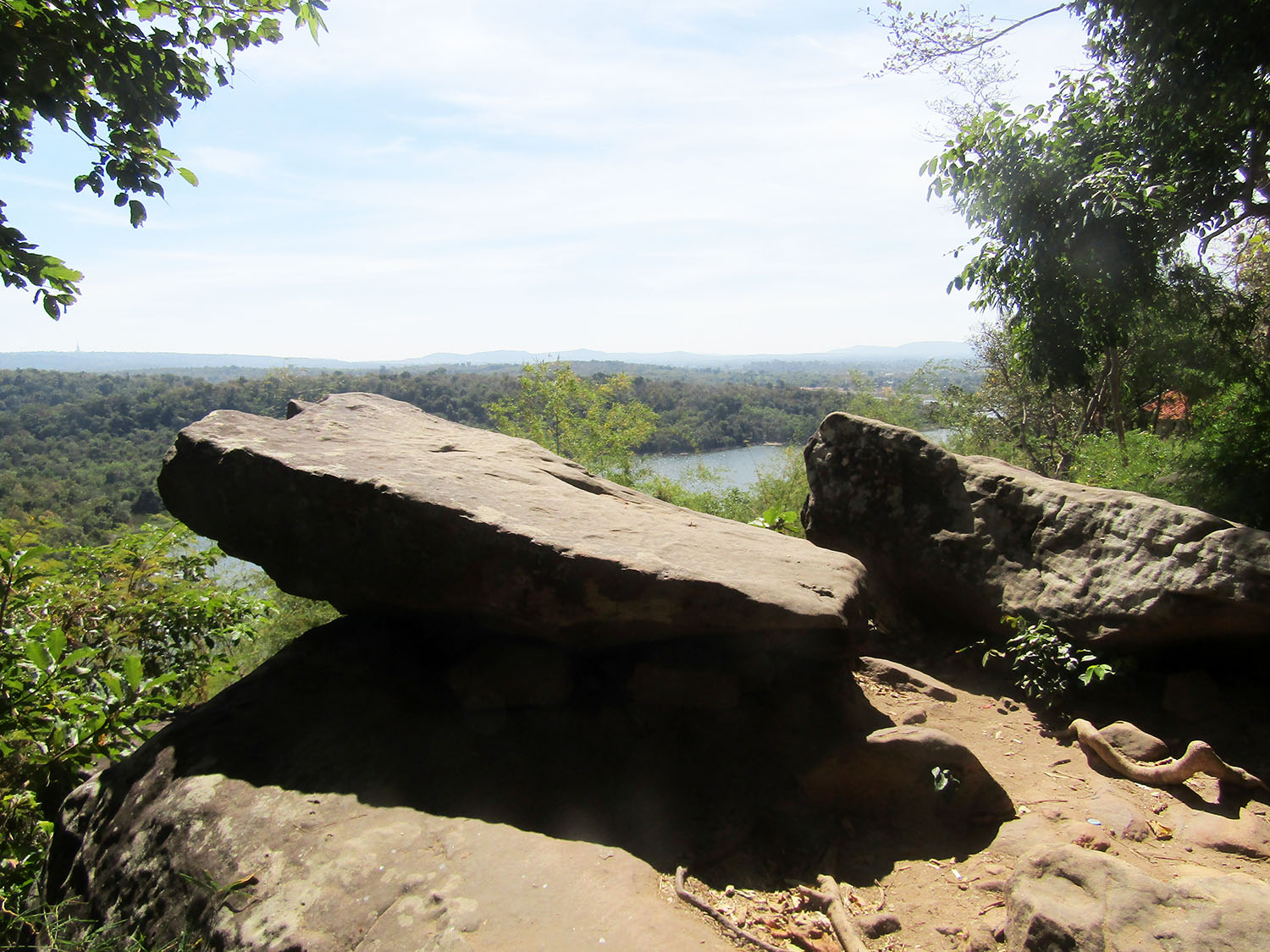 Bueng Ngam near Waterfall Cave Soda, Nong Phok District, Roi-Et Province
Bueng Ngam near Waterfall Cave Soda, Nong Phok District, Roi-Et Province 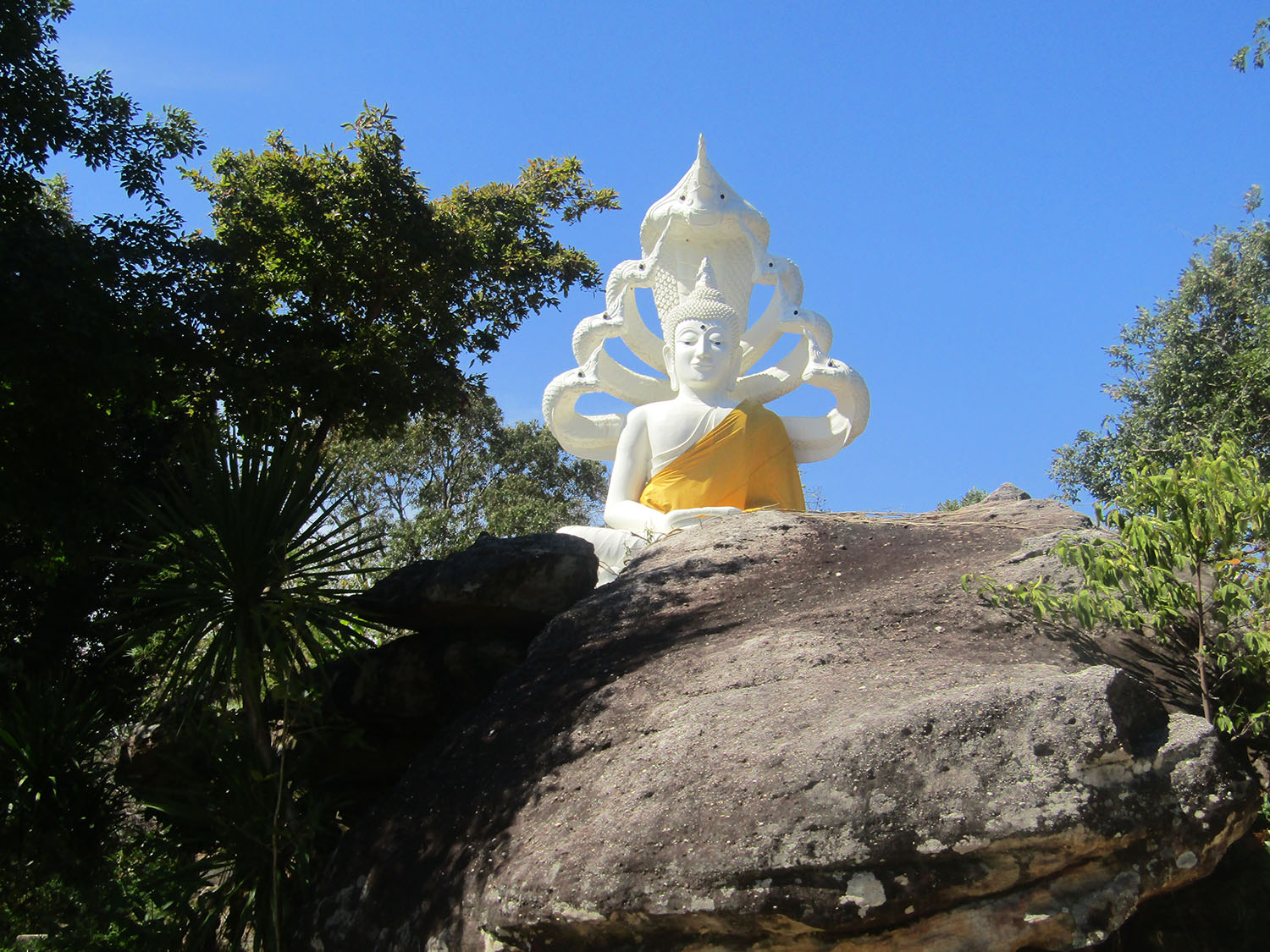
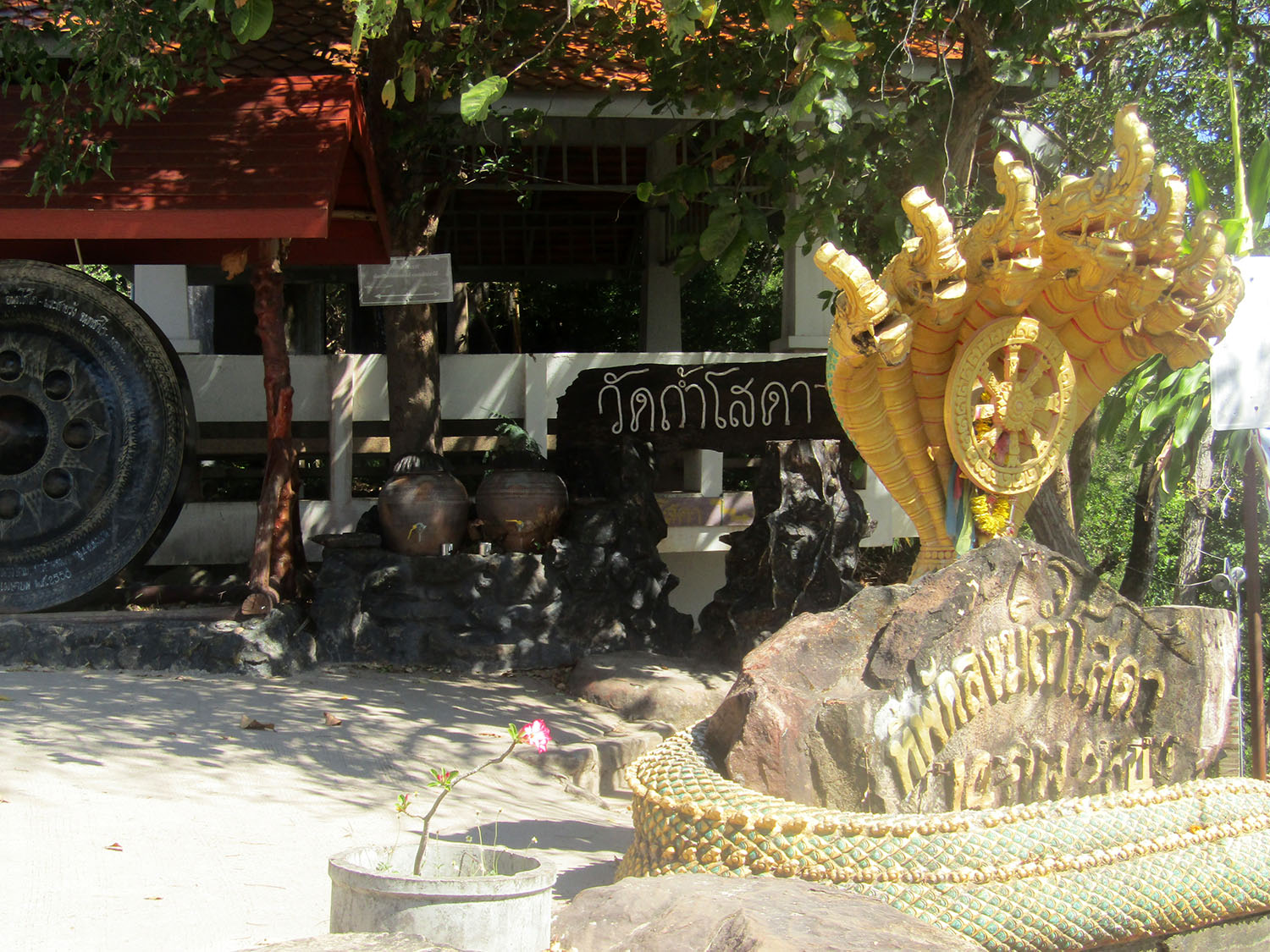
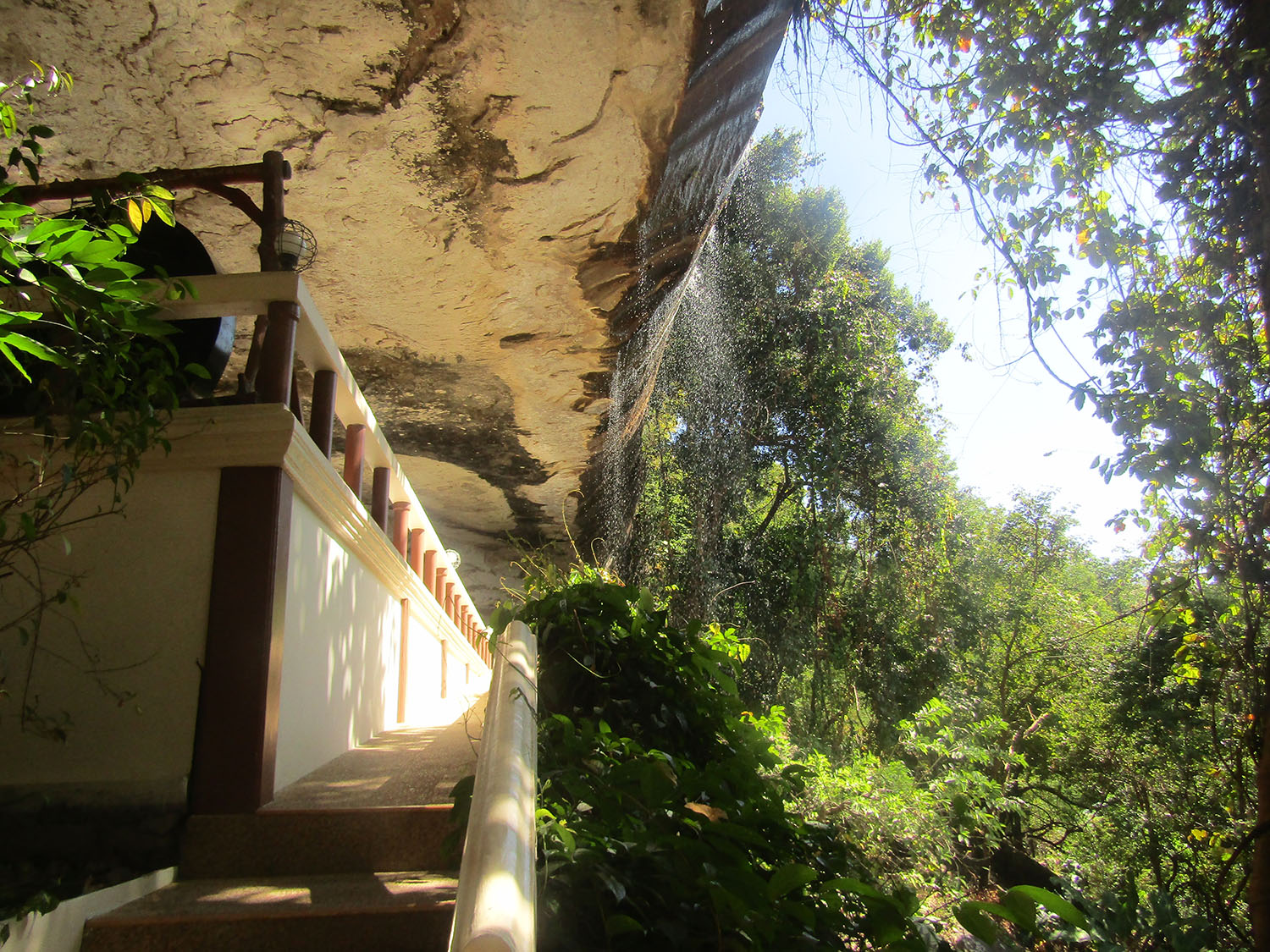
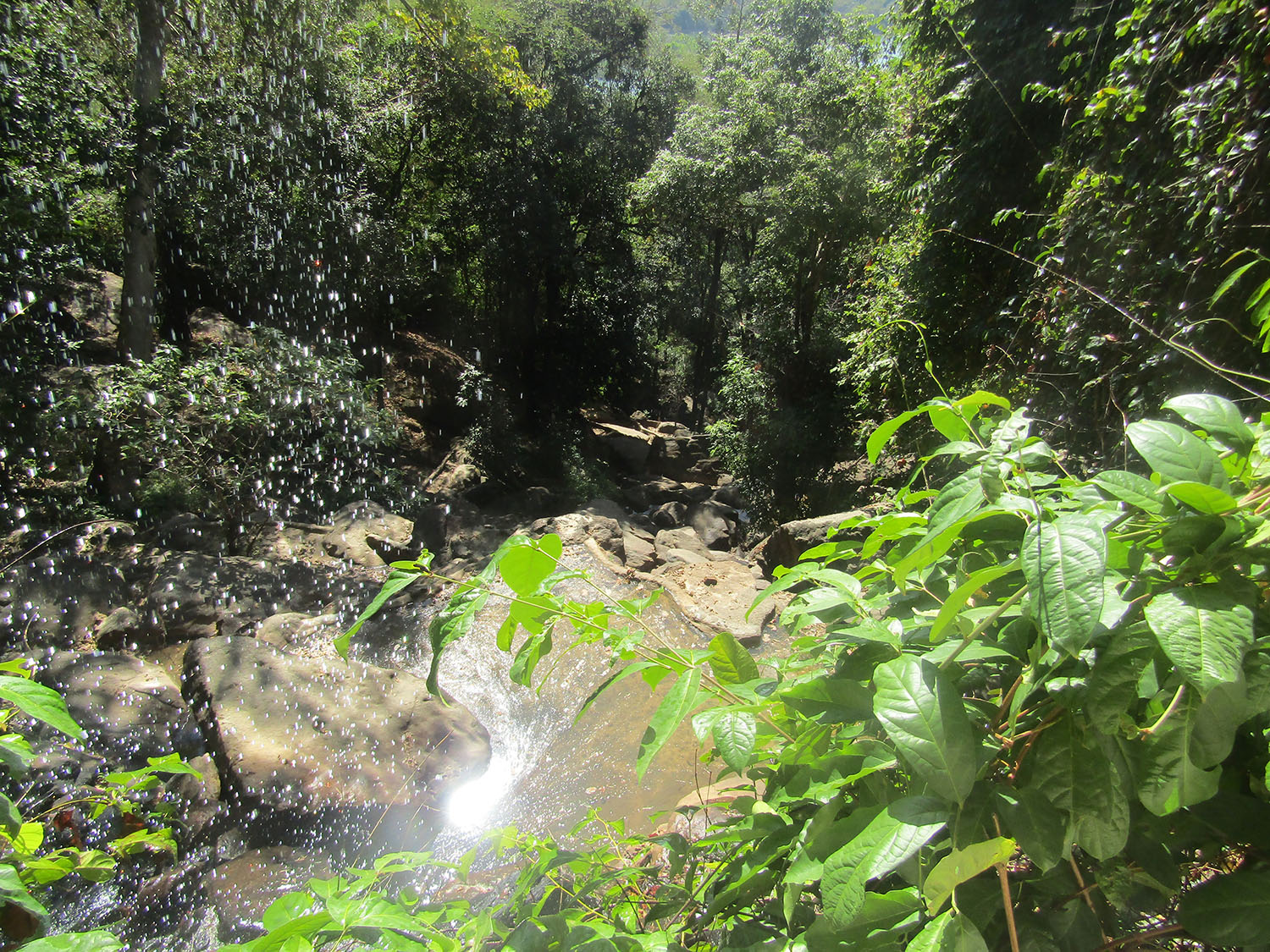
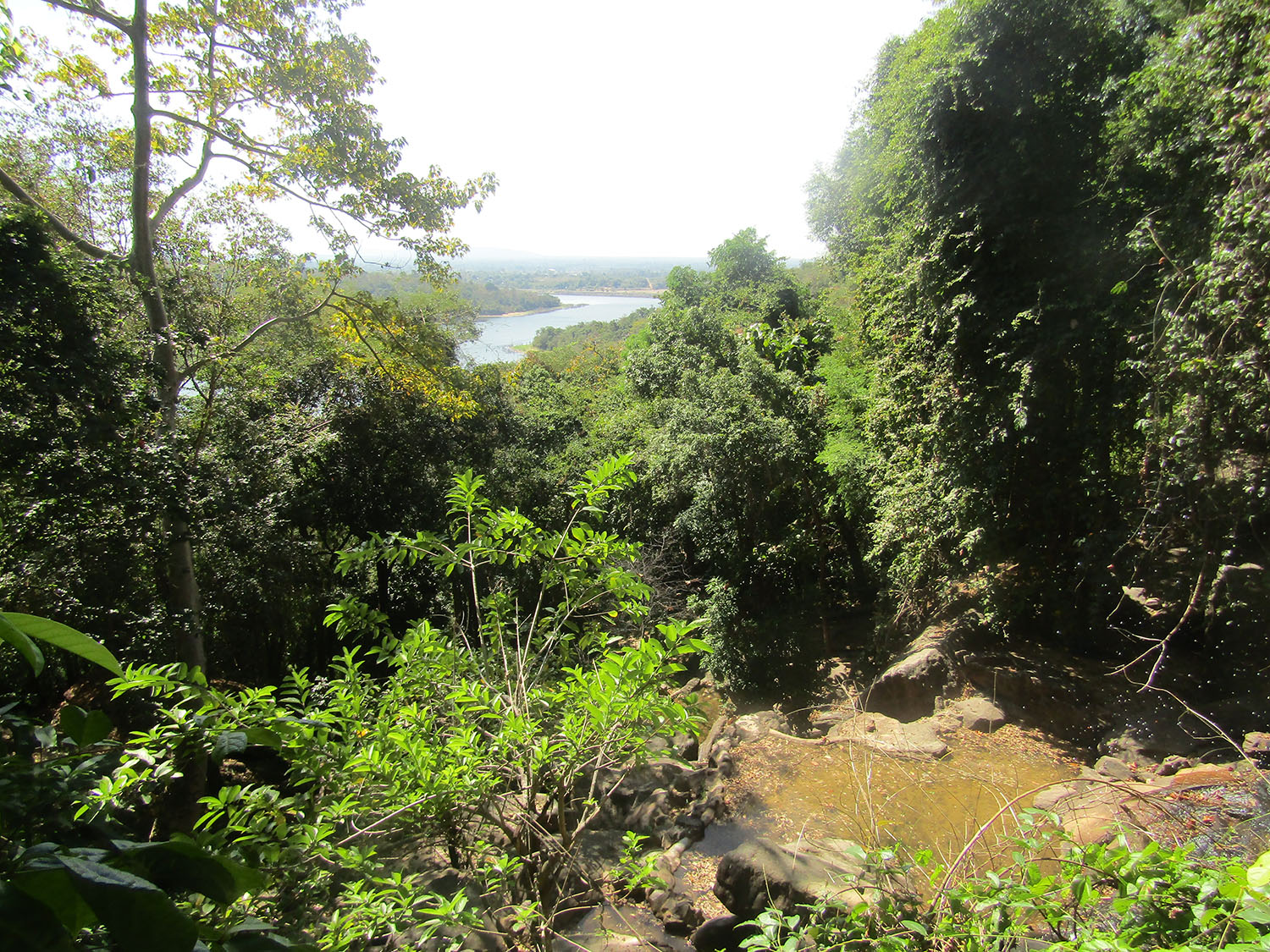
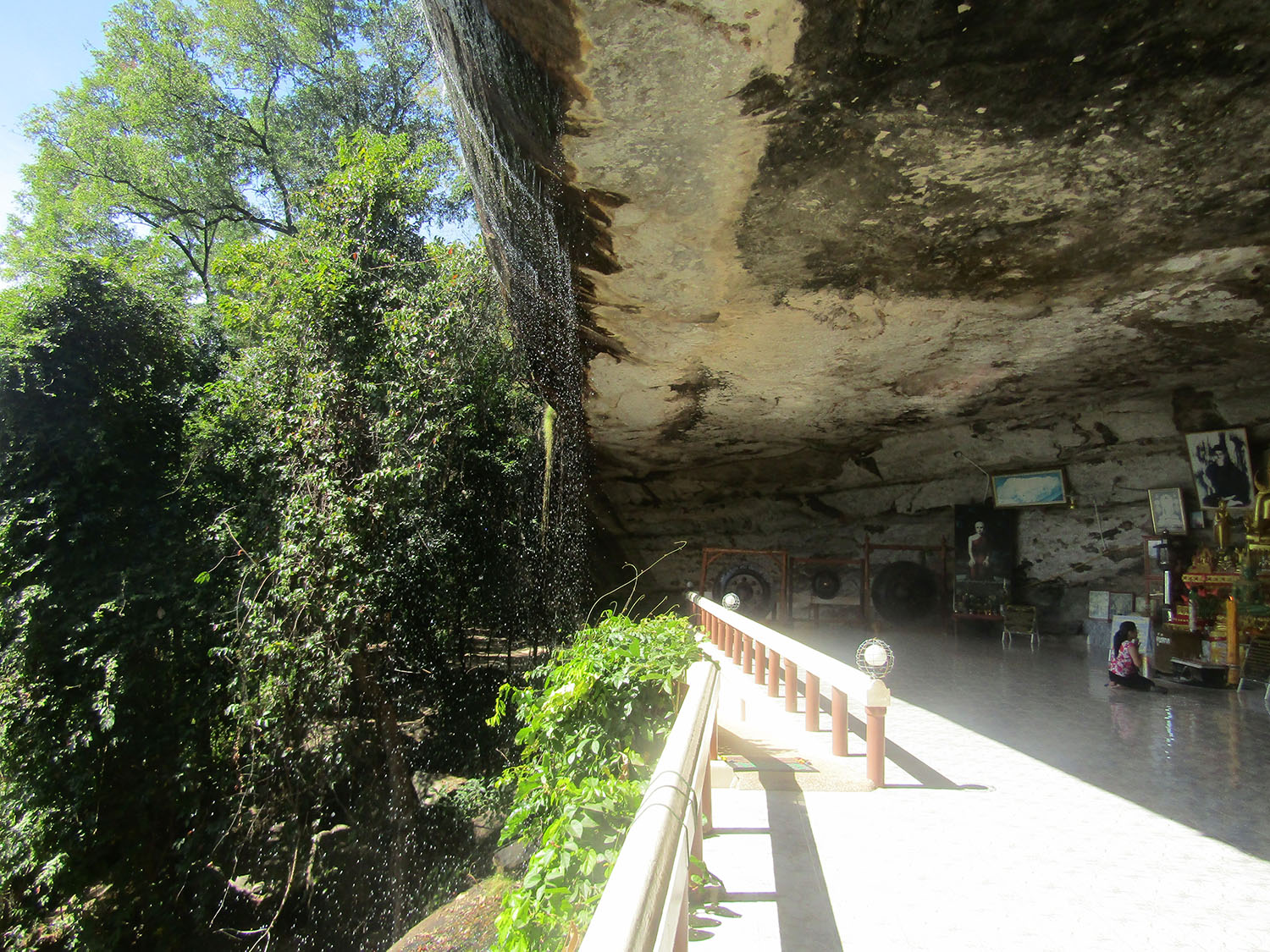
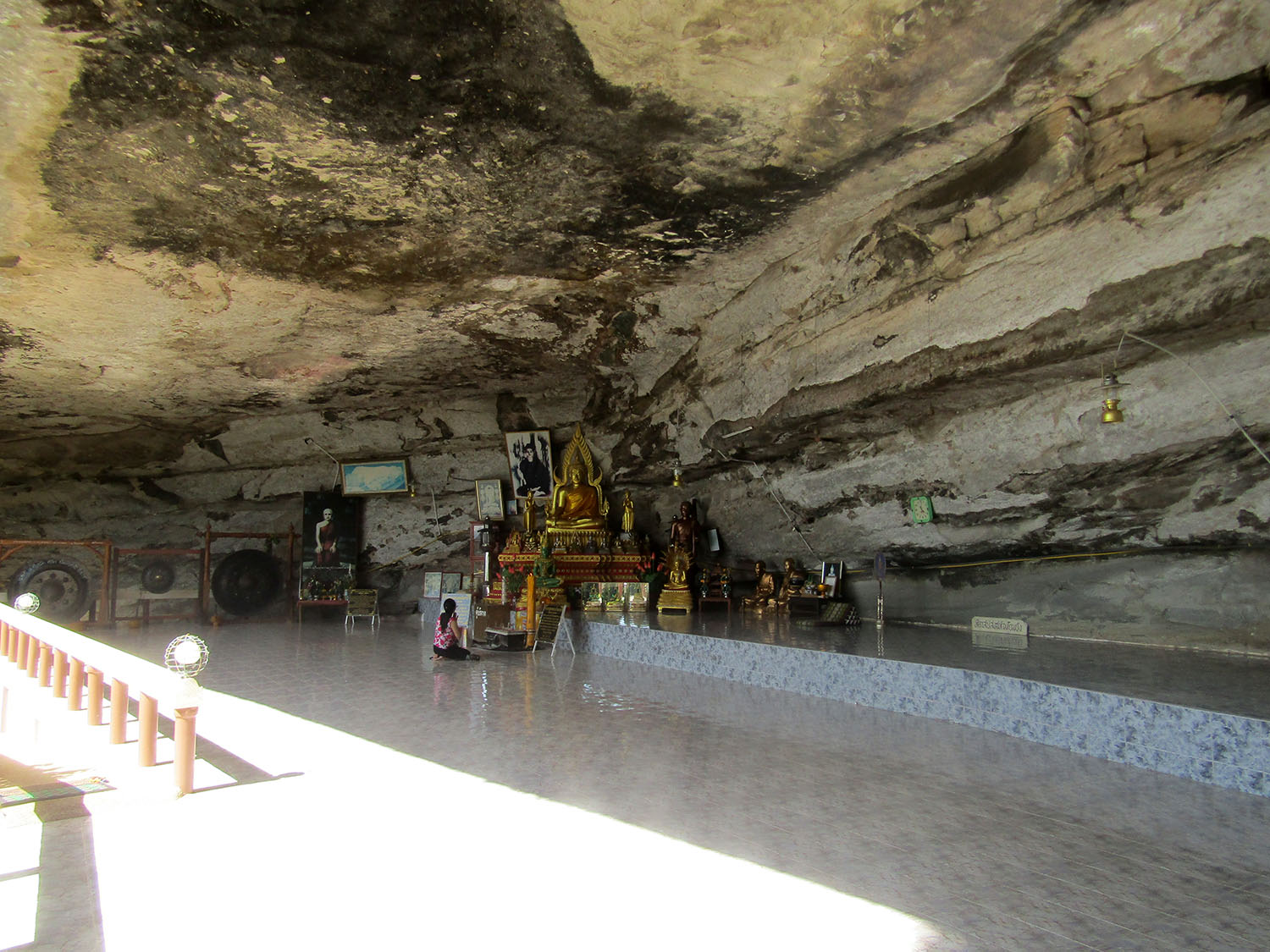
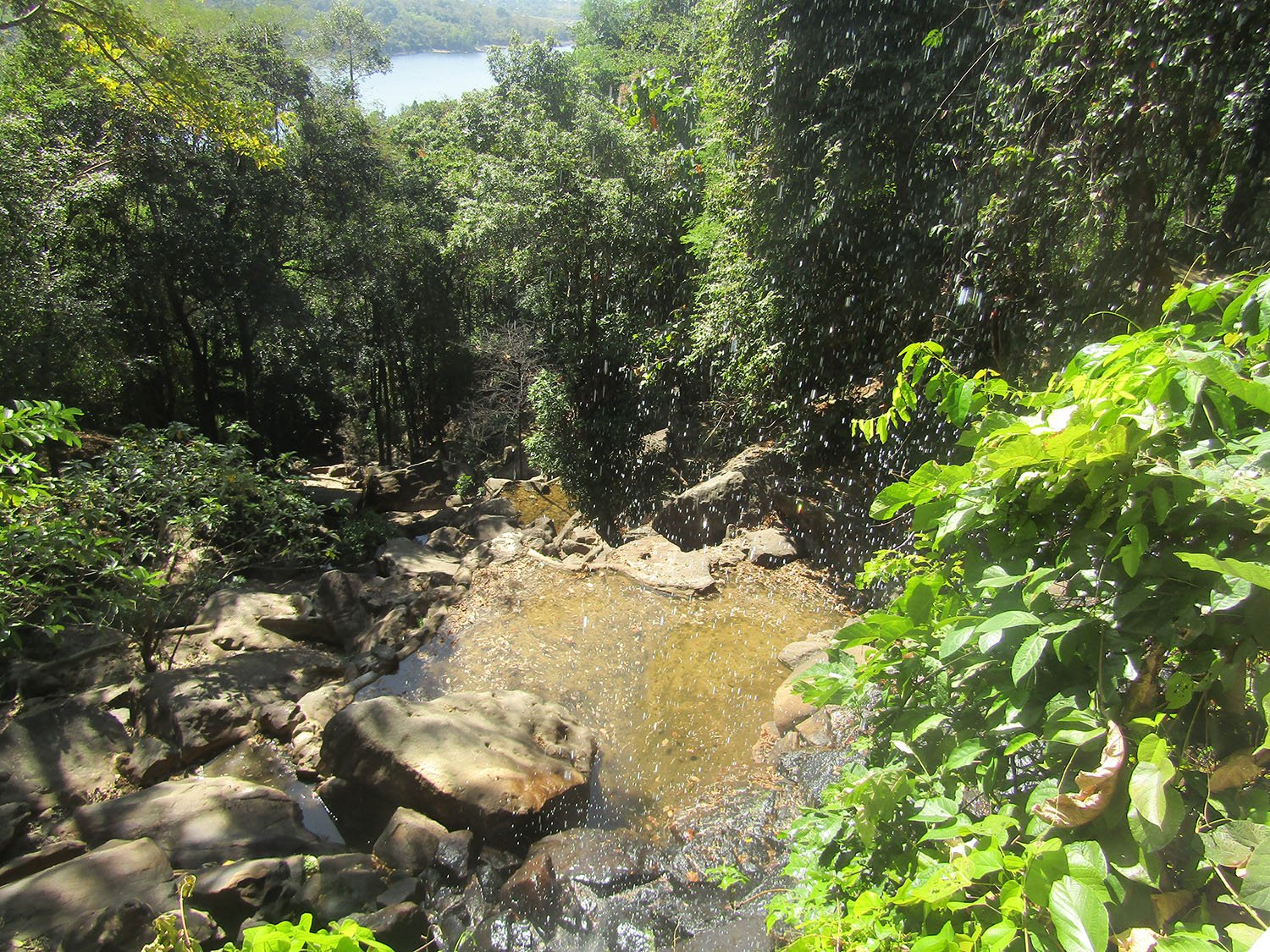
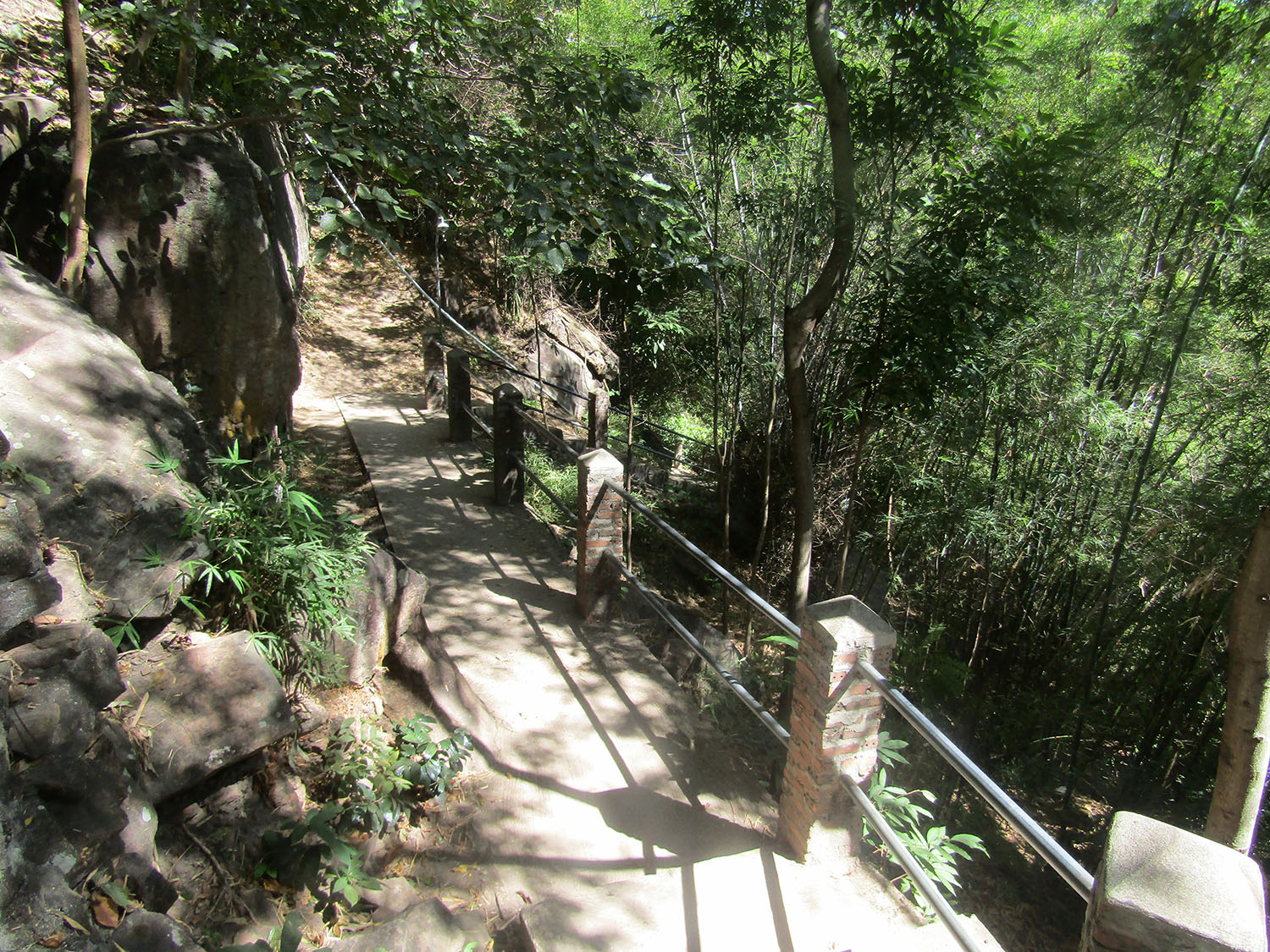 Waterfall Cave Soda, Nong Phok District, Roi-Et Province
Waterfall Cave Soda, Nong Phok District, Roi-Et Province
Resetting the GPS link, I note that we’re now an hour and a half east of Roi Et City where there are a number of sites to visit, but first there are some sites on the way. The first was left off my list but as the detour won’t take long, I decide to go for it. Bueng Kluea is a freshwater lake in Selaphum District, the name simply meaning, ‘salt lake’. I note there is a festival held here involving boat races but today it’s completely deserted; perhaps not so at weekends. With precious little to review, we quickly move on to the next listed site.
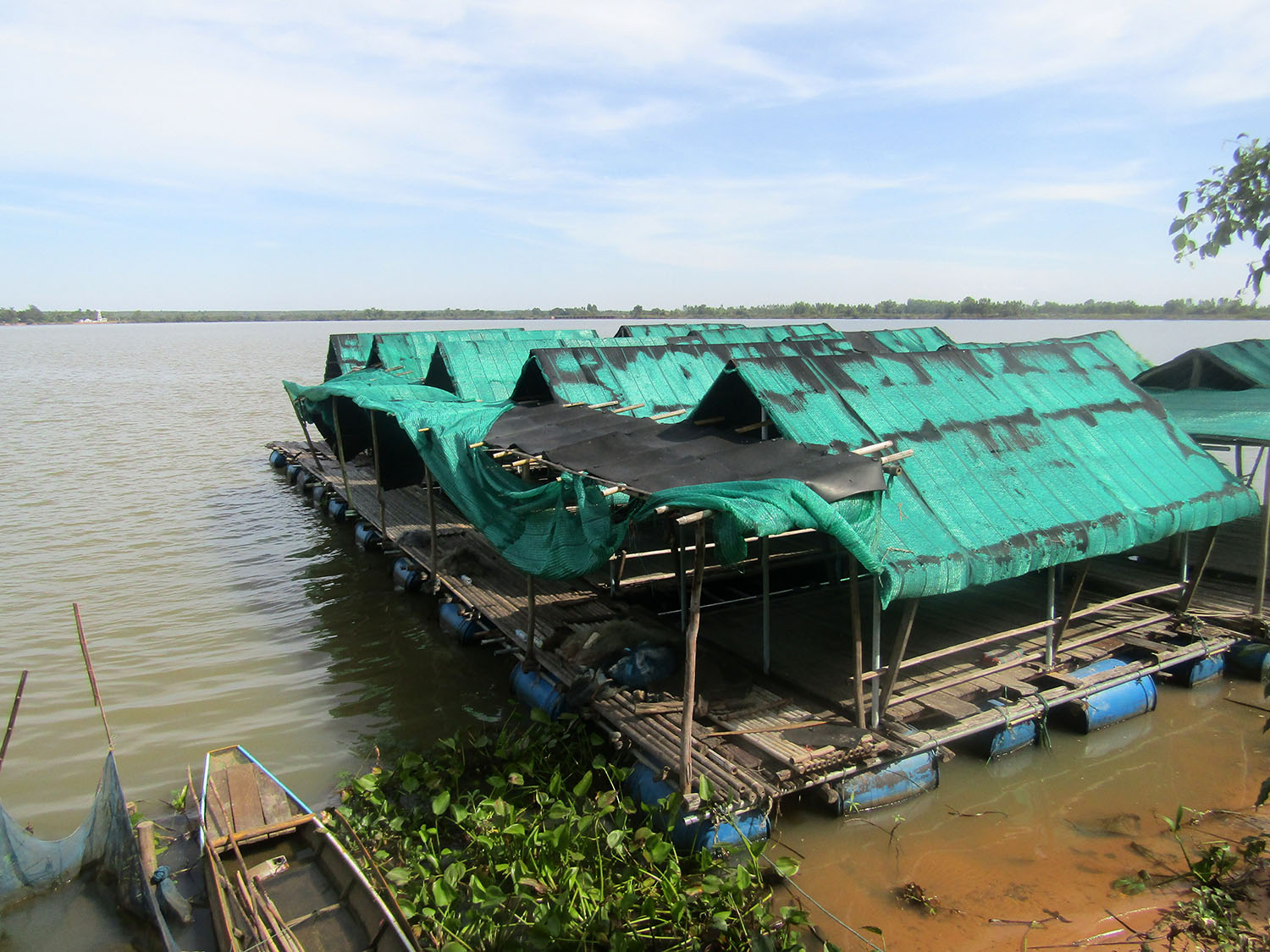
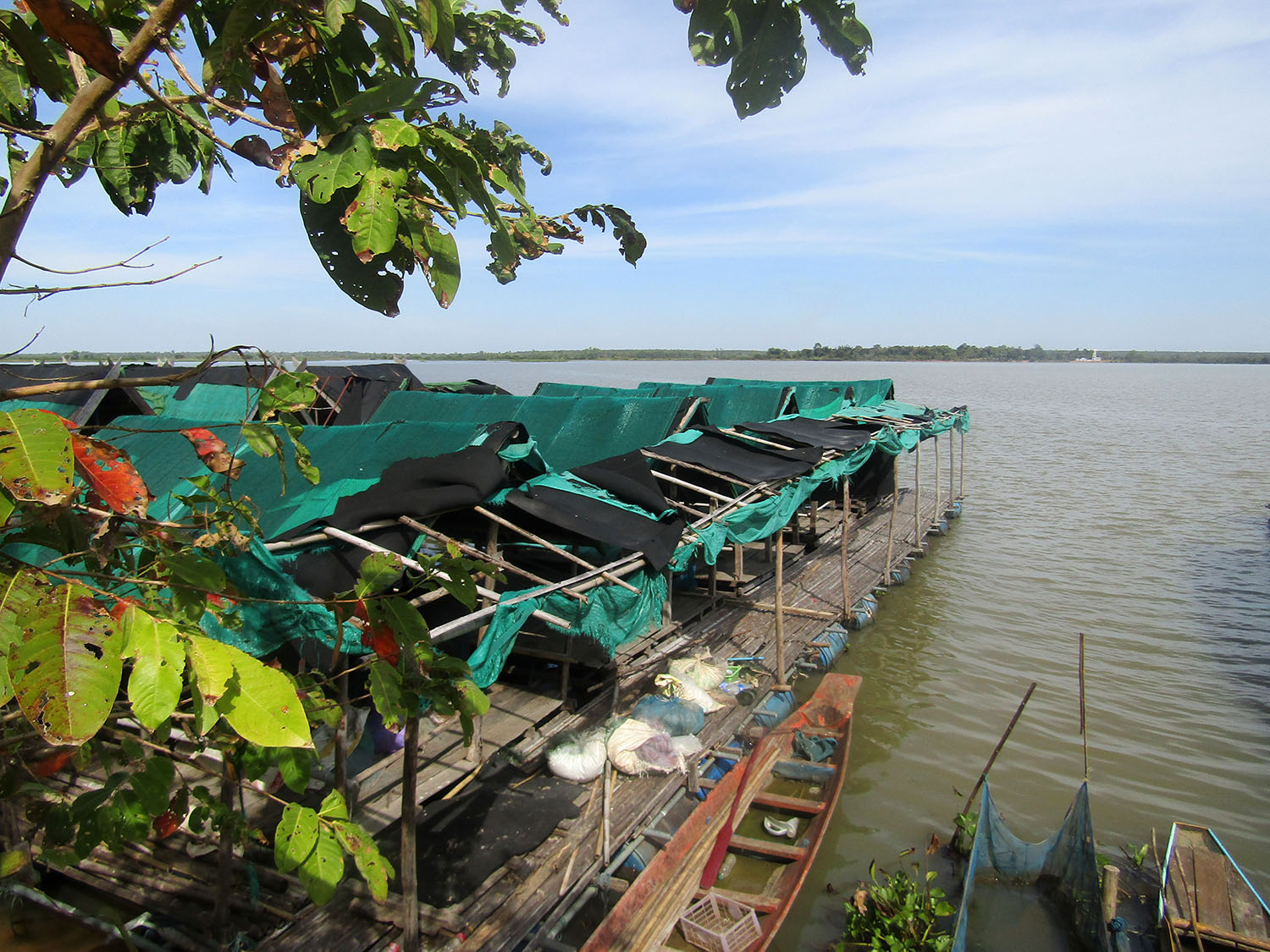
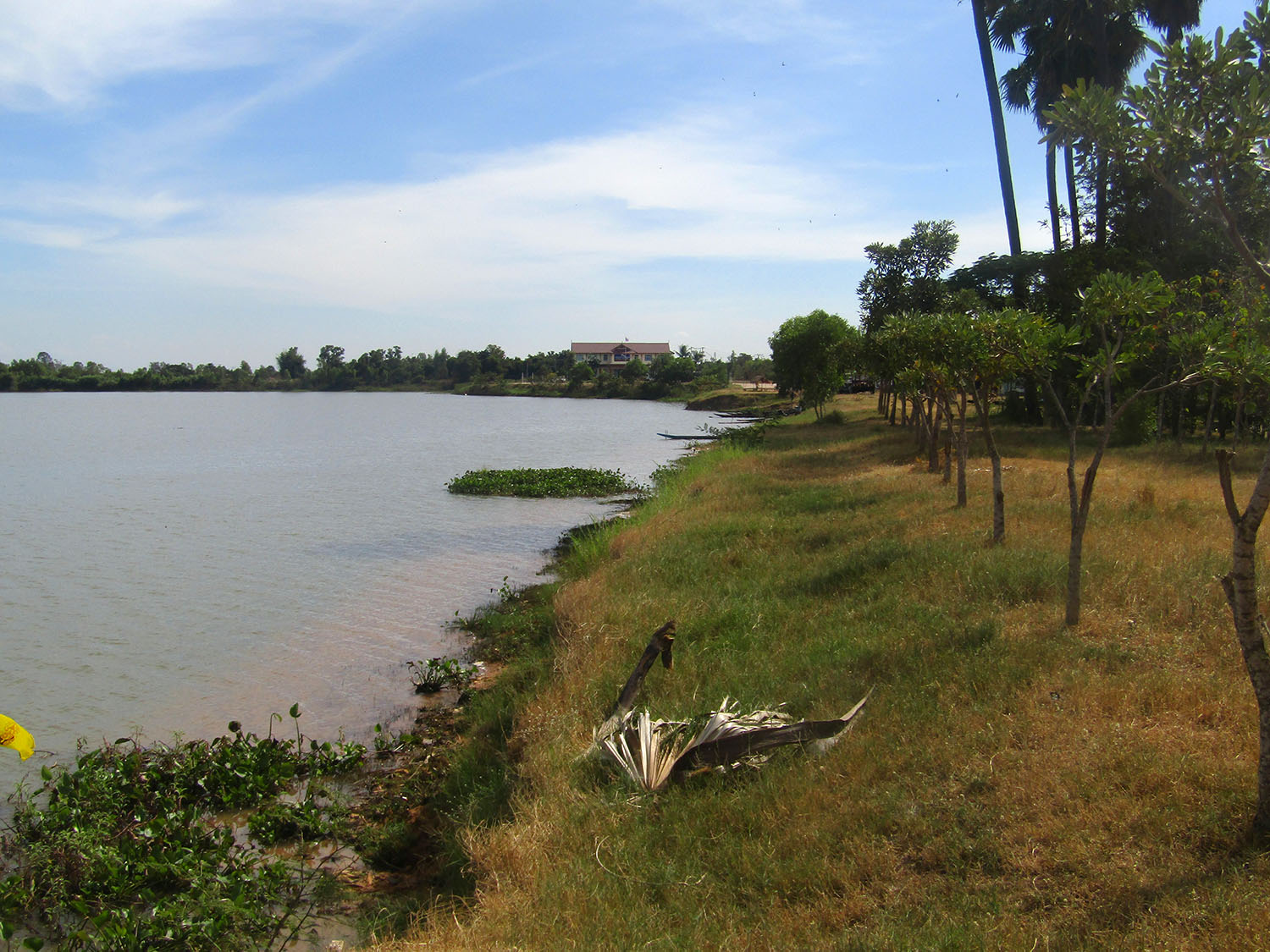
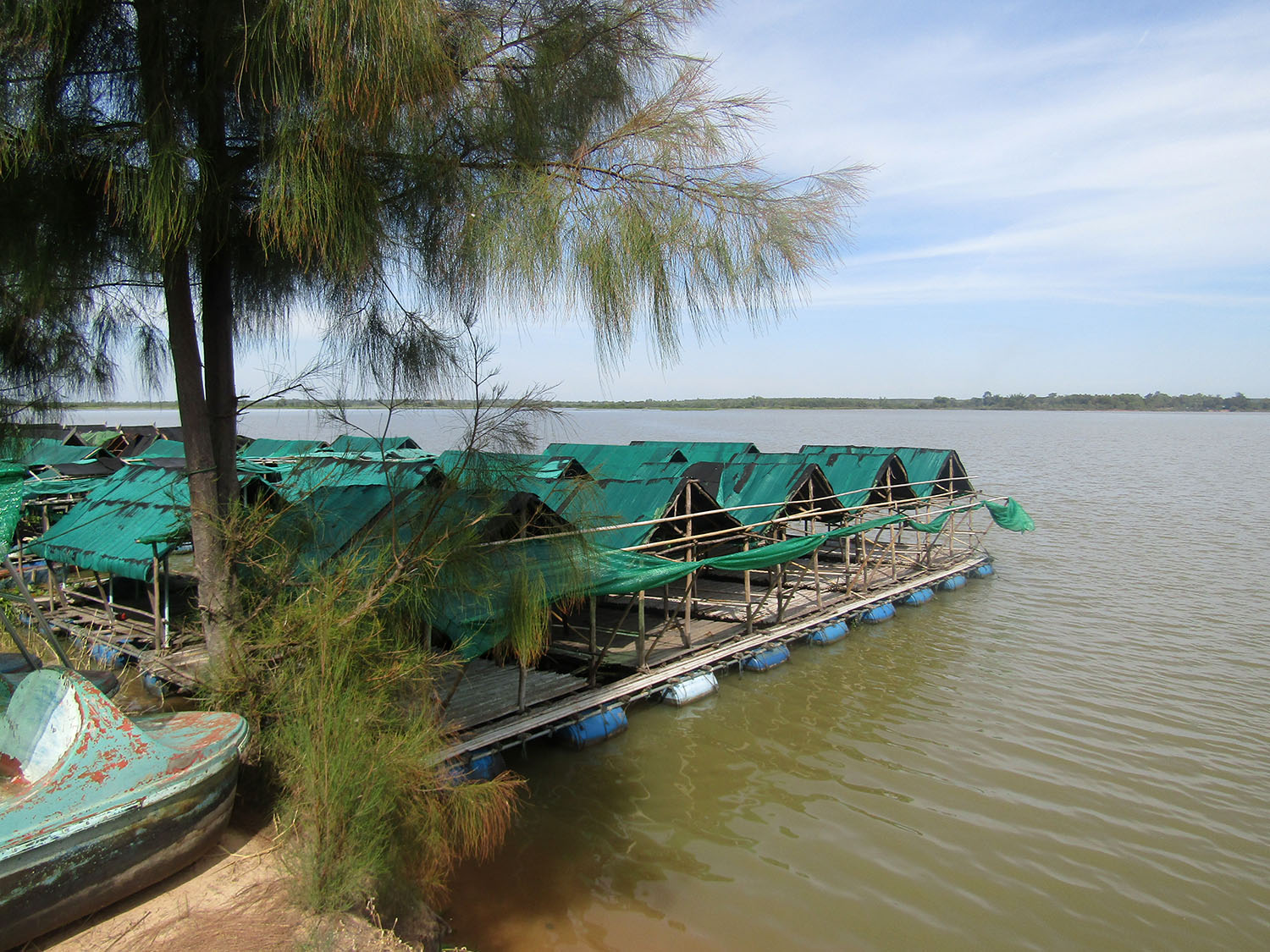
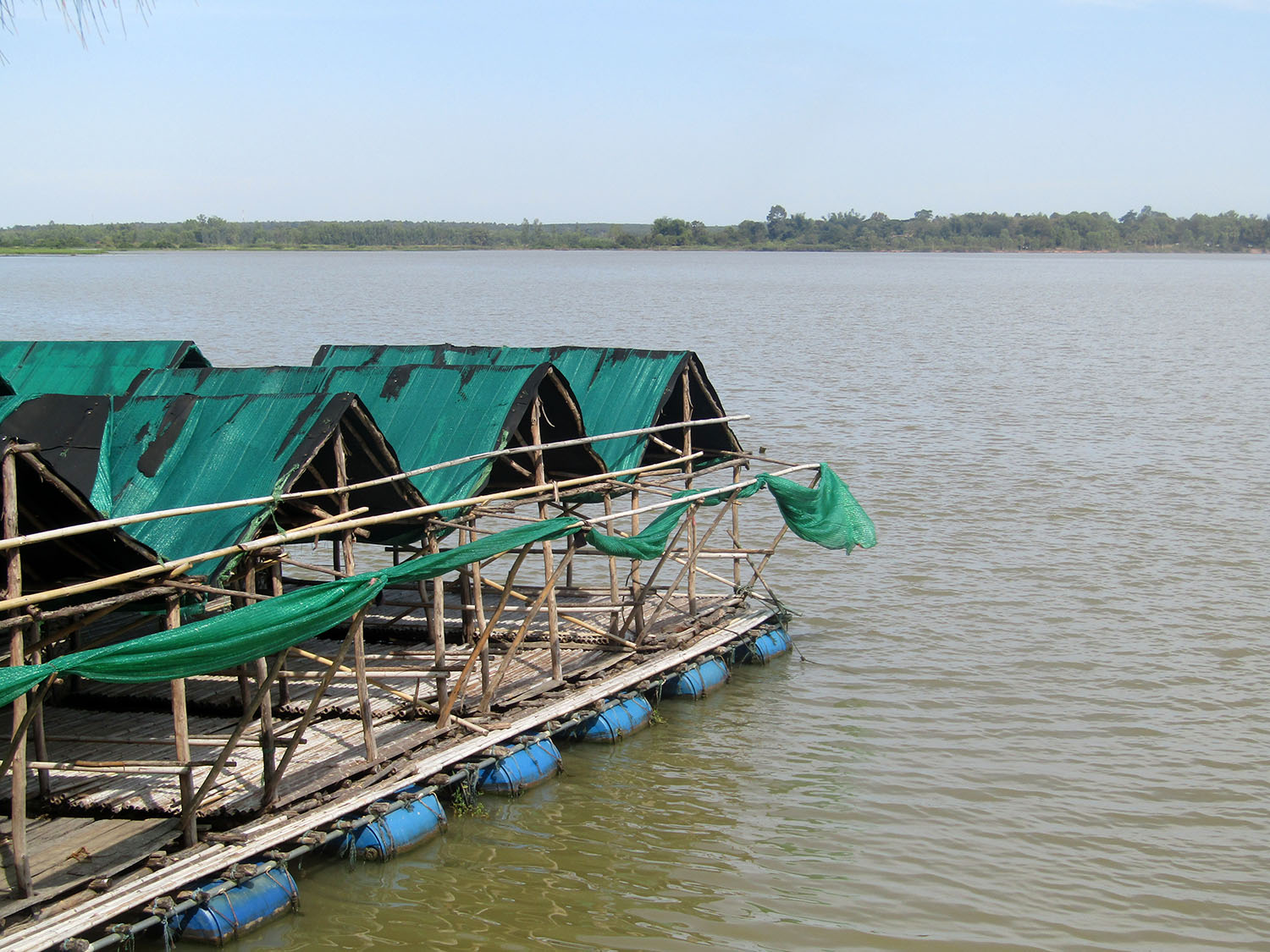
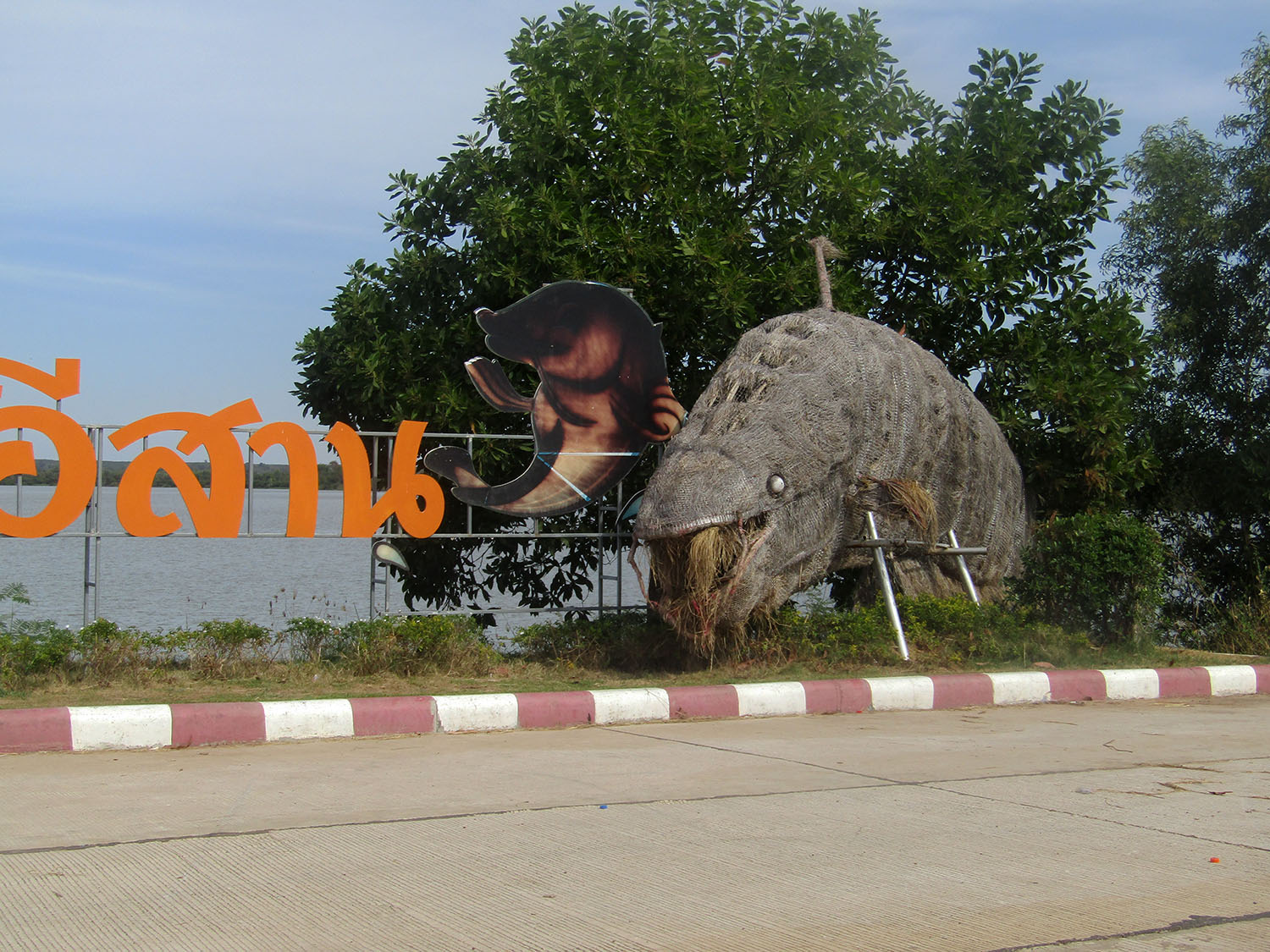 Bueng Kluea, Selaphum District, Roi-Et Province
Bueng Kluea, Selaphum District, Roi-Et Province
Wat Pa Non Sawan……..Shown as an attraction in Thung Khao Luang District about 30 minutes’ drive east from Roi Et City, I need to check this temple out but I’m in for a shock as I recall what a friend of mine said to me some years ago. In his opinion, ‘if you’ve seen one Thai temple, you’ve seen them all’. I don’t think he travelling widely in Thailand and as far as I’m concerned, some of the differences I’ve come across, you would think they’re examples from different planets. Well I have to say that at Wat Pa Non Sawan there’s no need to visit another planet. Here there is ‘hell on earth’. Demons, Dieties, Dragons, Monsters and just about everything you just don’t wish to see walking down your main street. I’ve read that it’s a must-see attraction but for all the wrong reasons. Others have suggested that there is hidden meaning to the weird sculptures. It’s not as if the ‘scenes from hell’, are anything new to me; I’ve seen them at other temple in Thailand. After all there is some logic in the fact that if you scare the living daylights out of people they will pray for salvation and hand over their cash; plenty of examples of that throughout history. Here however, I’m utterly confused as to the meaning and for what my opinion is worth, I see in the designer, a mind that is possessed perhaps tormented, a case for men in white coats.
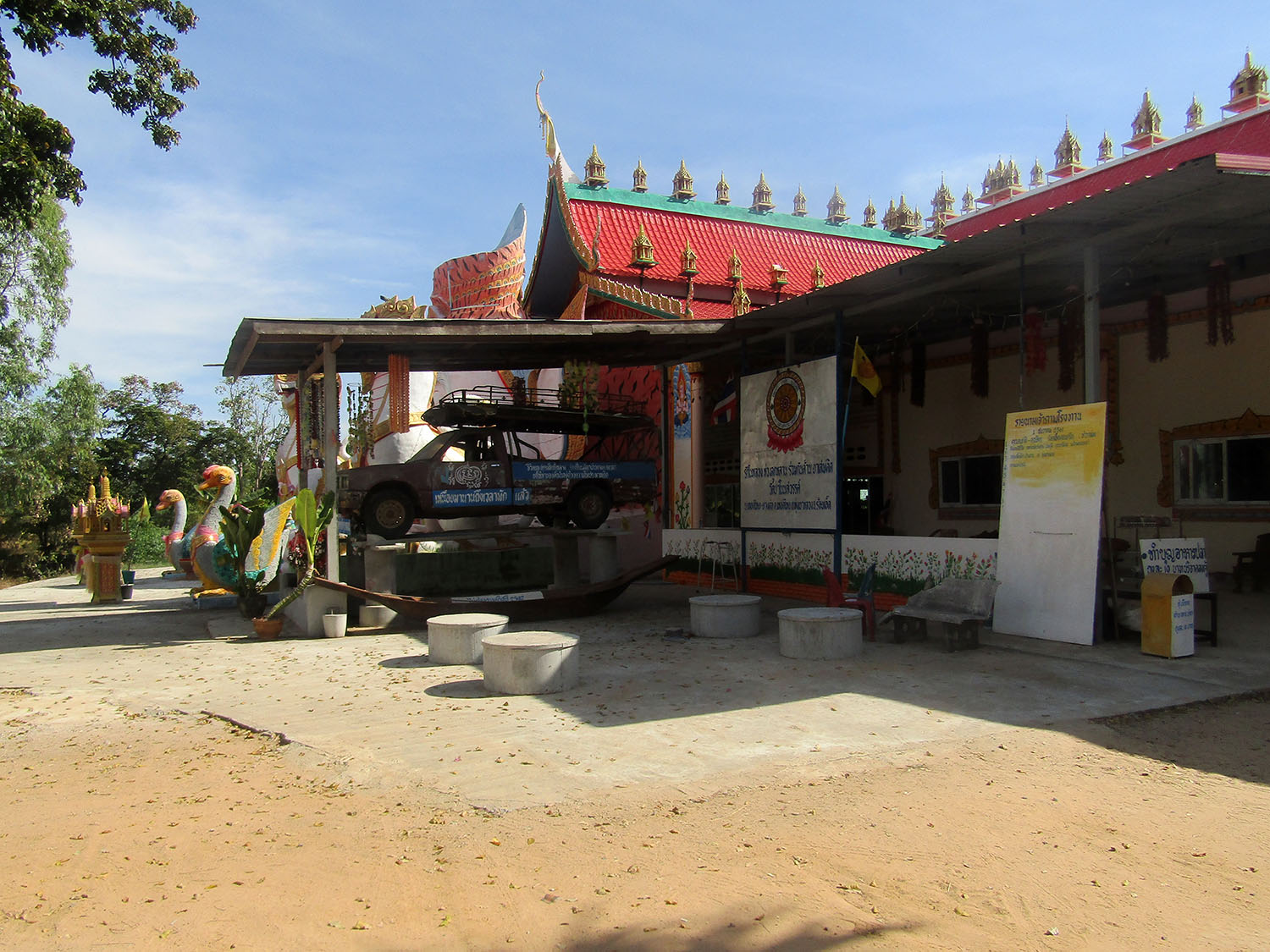
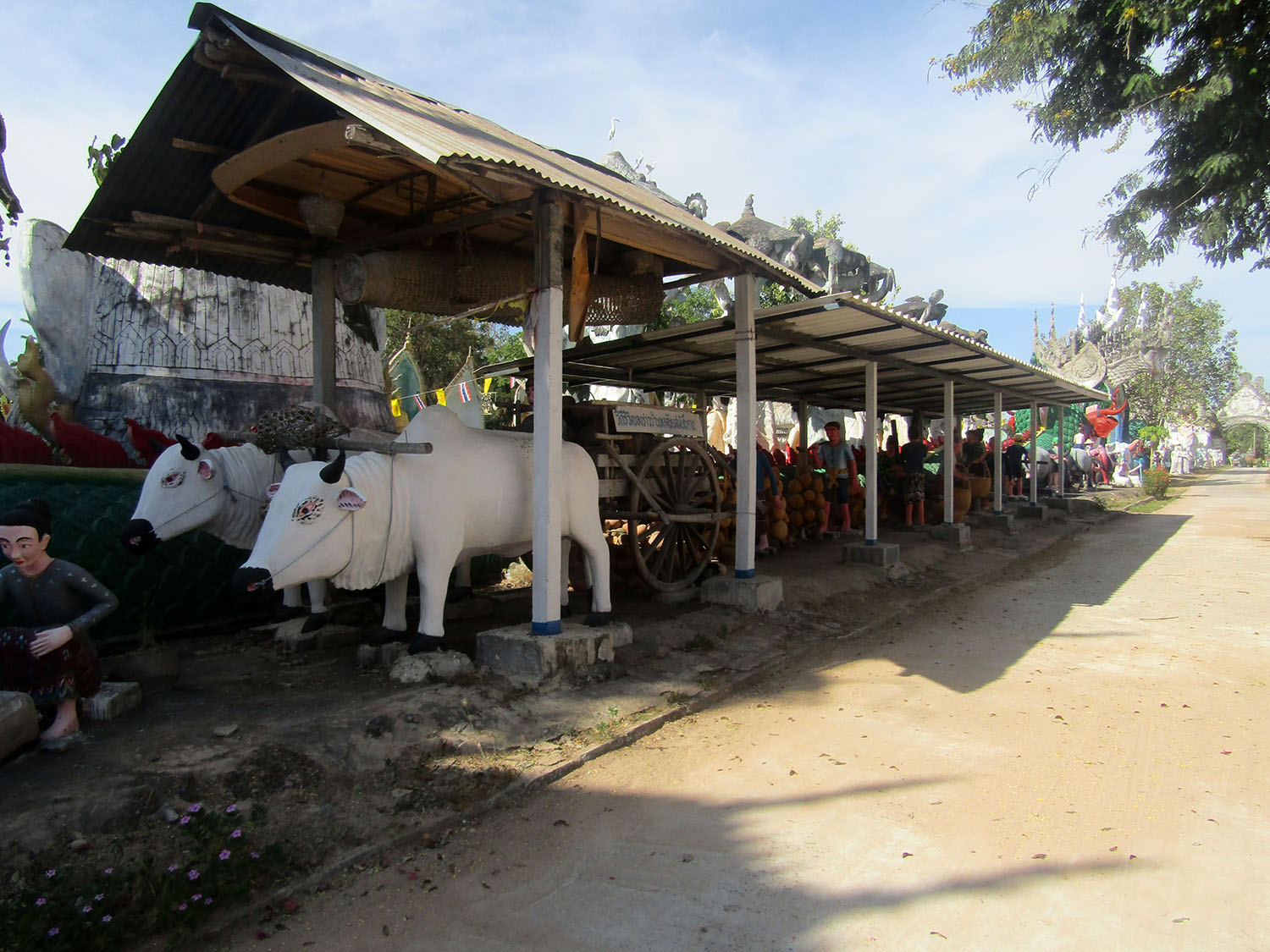
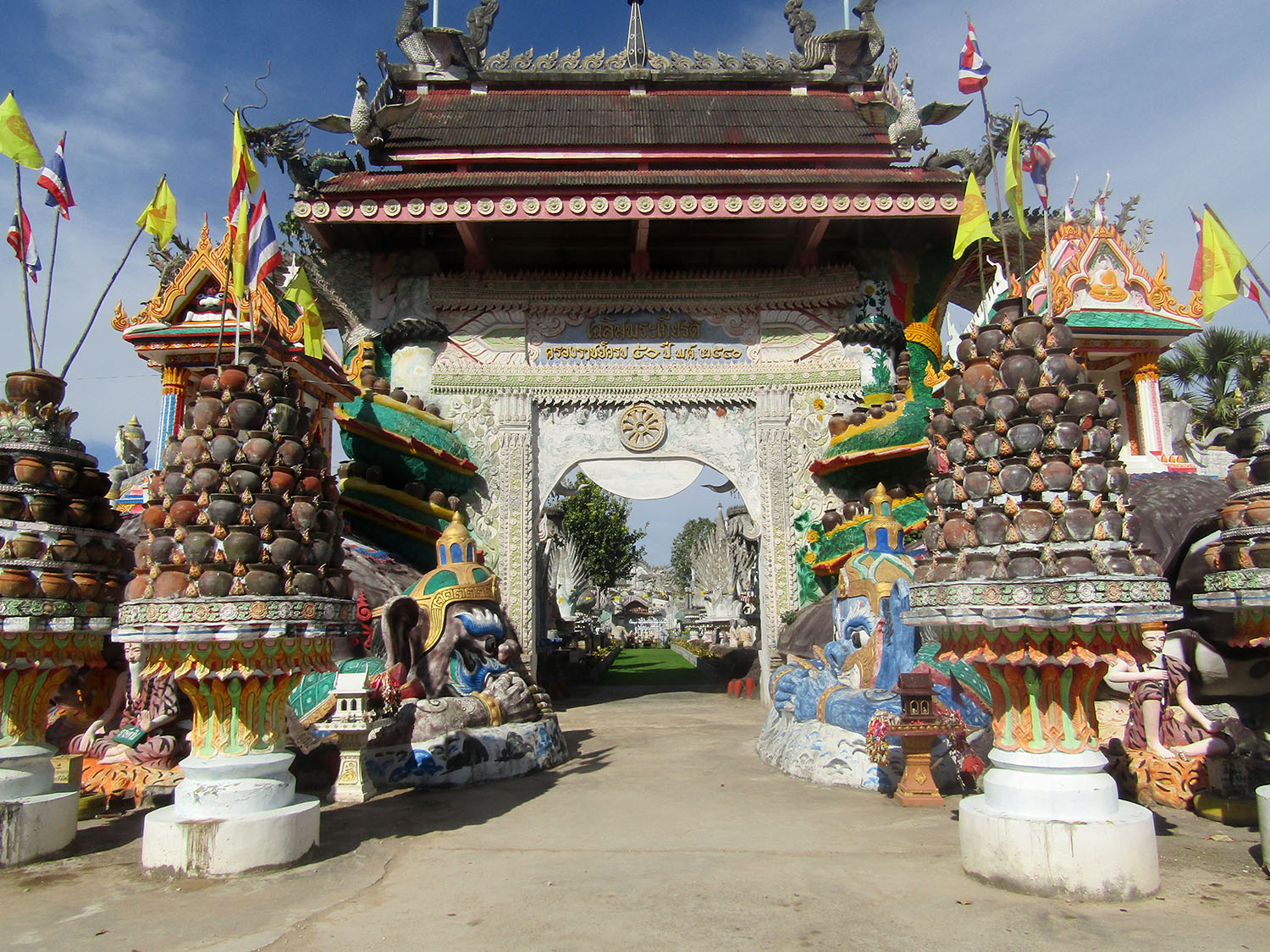
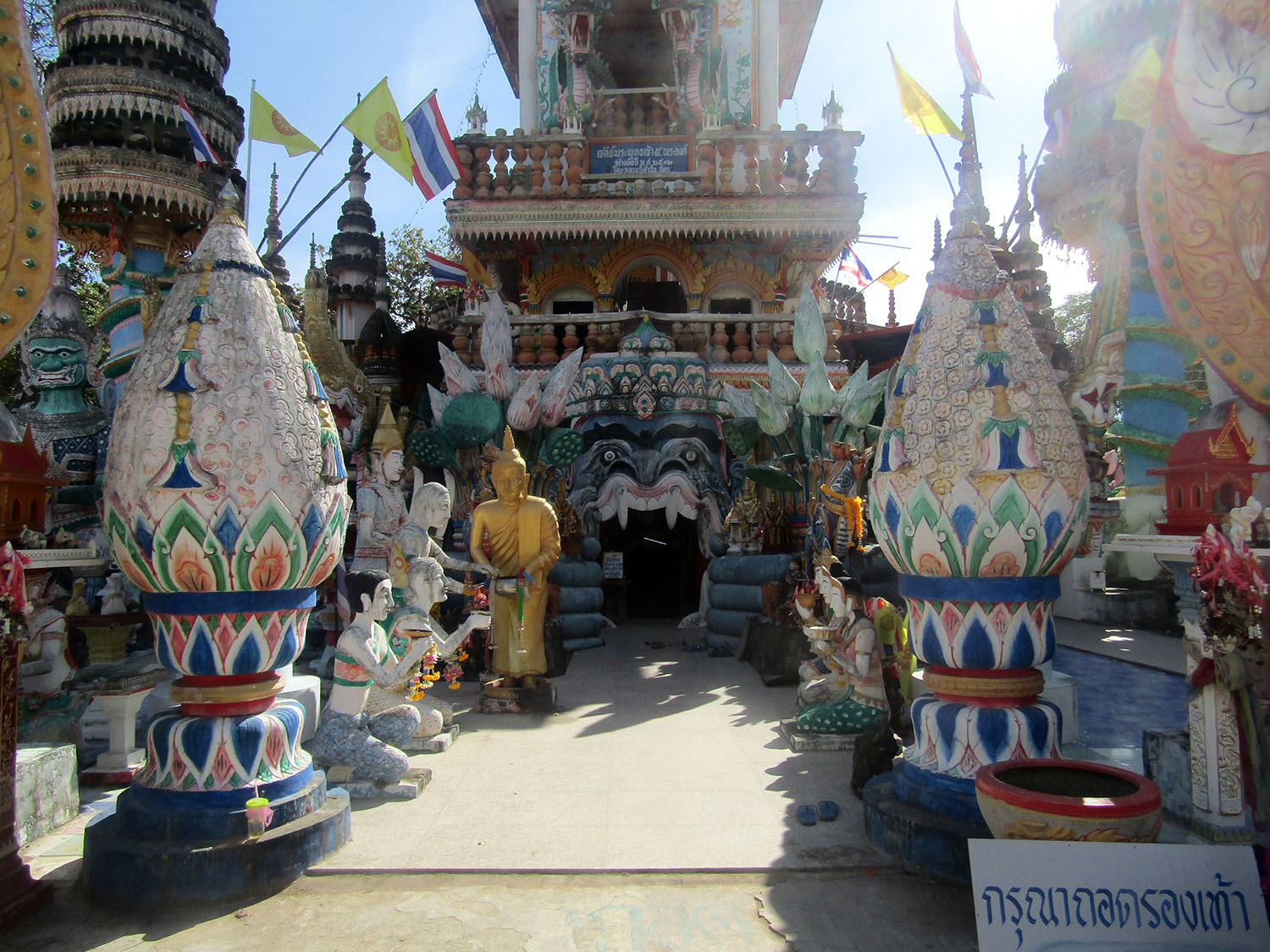
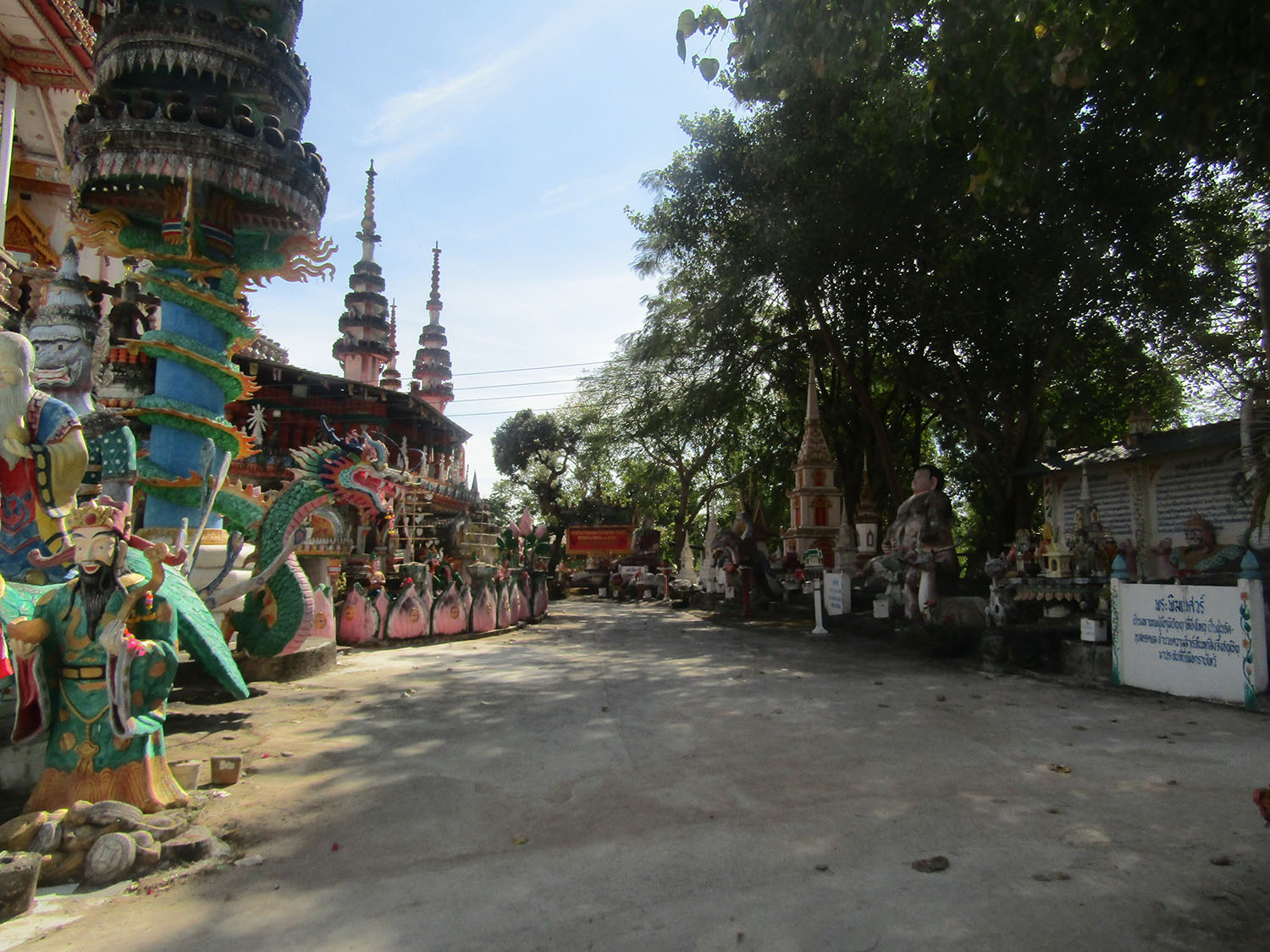
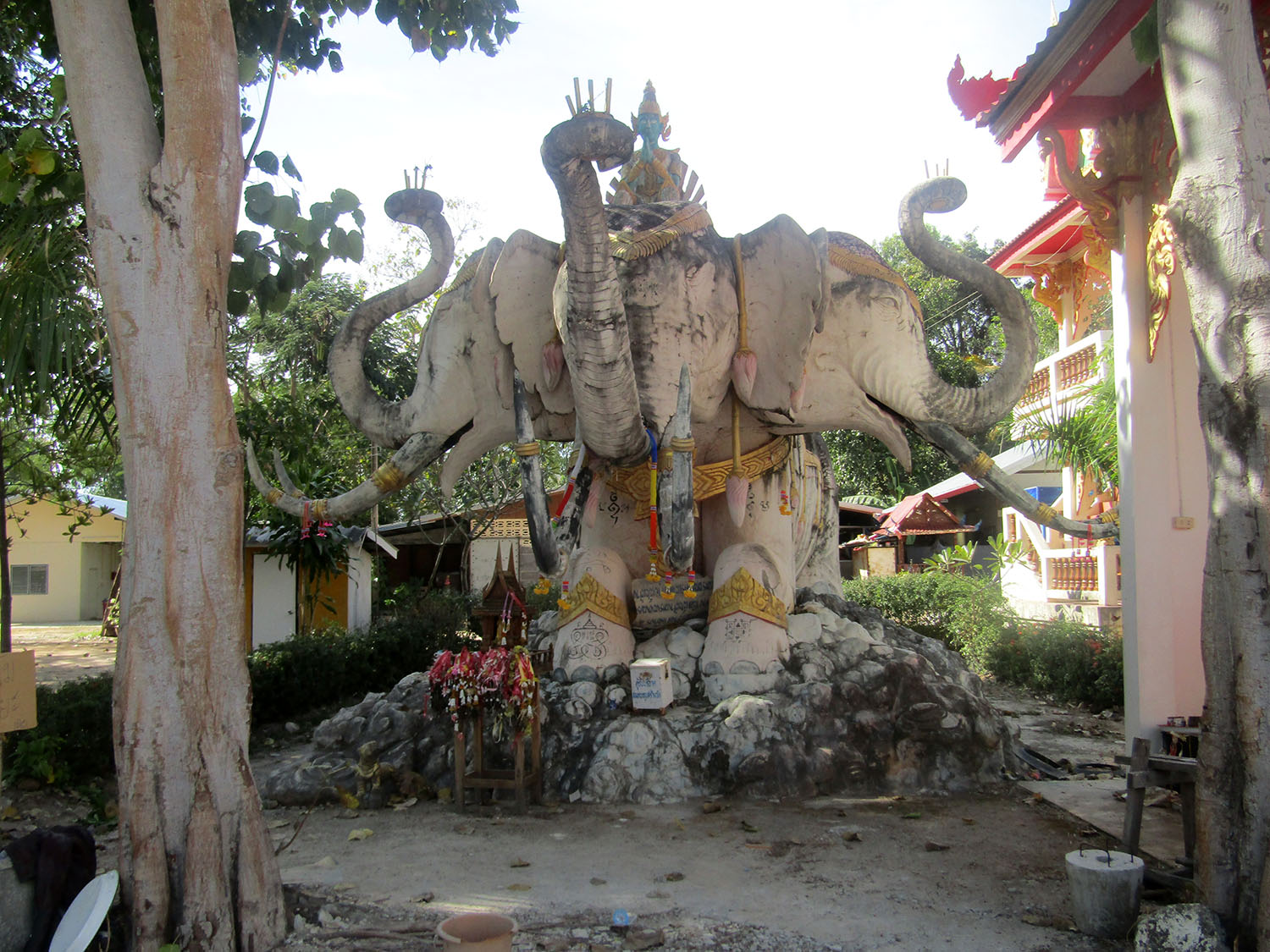
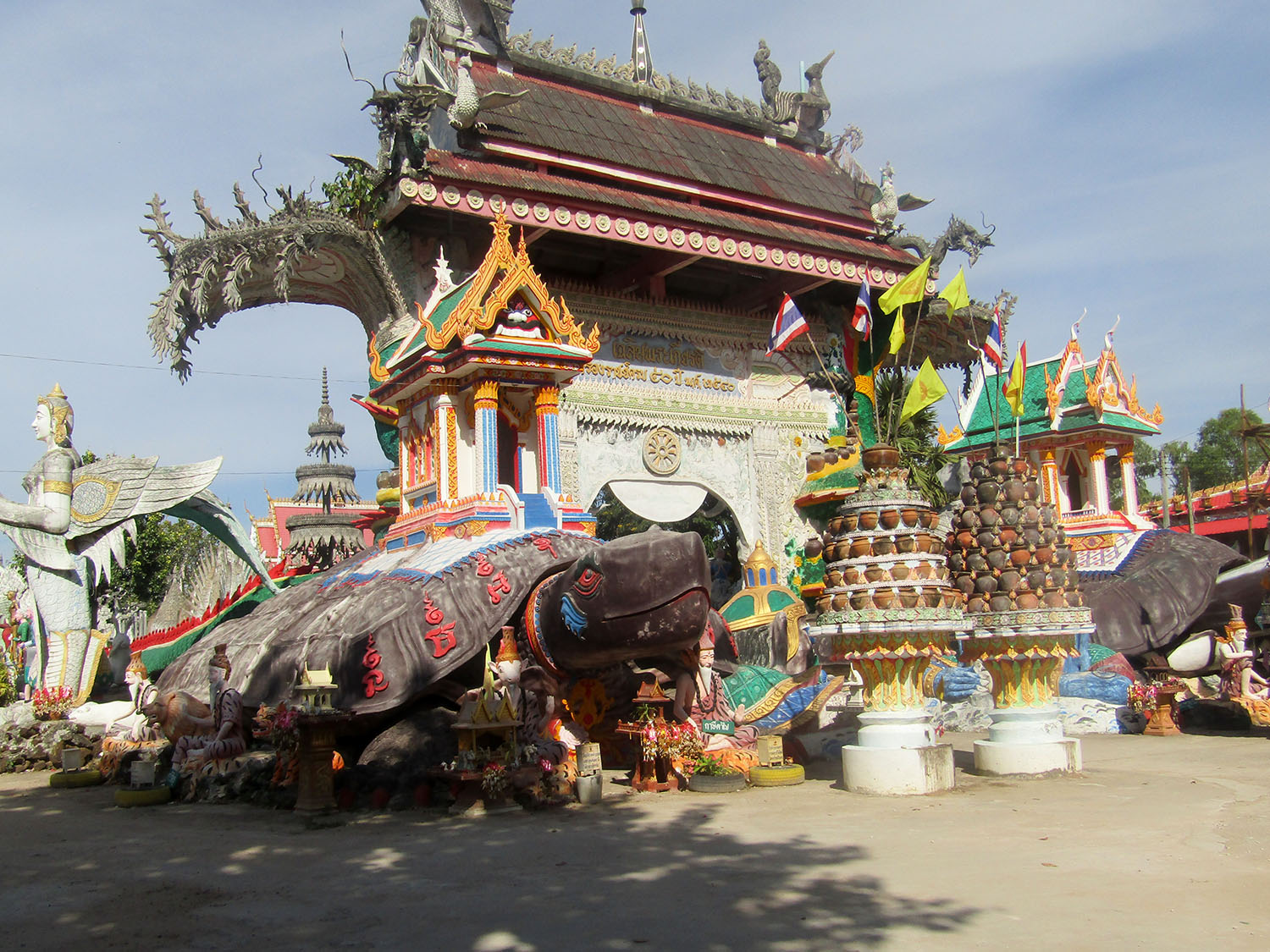
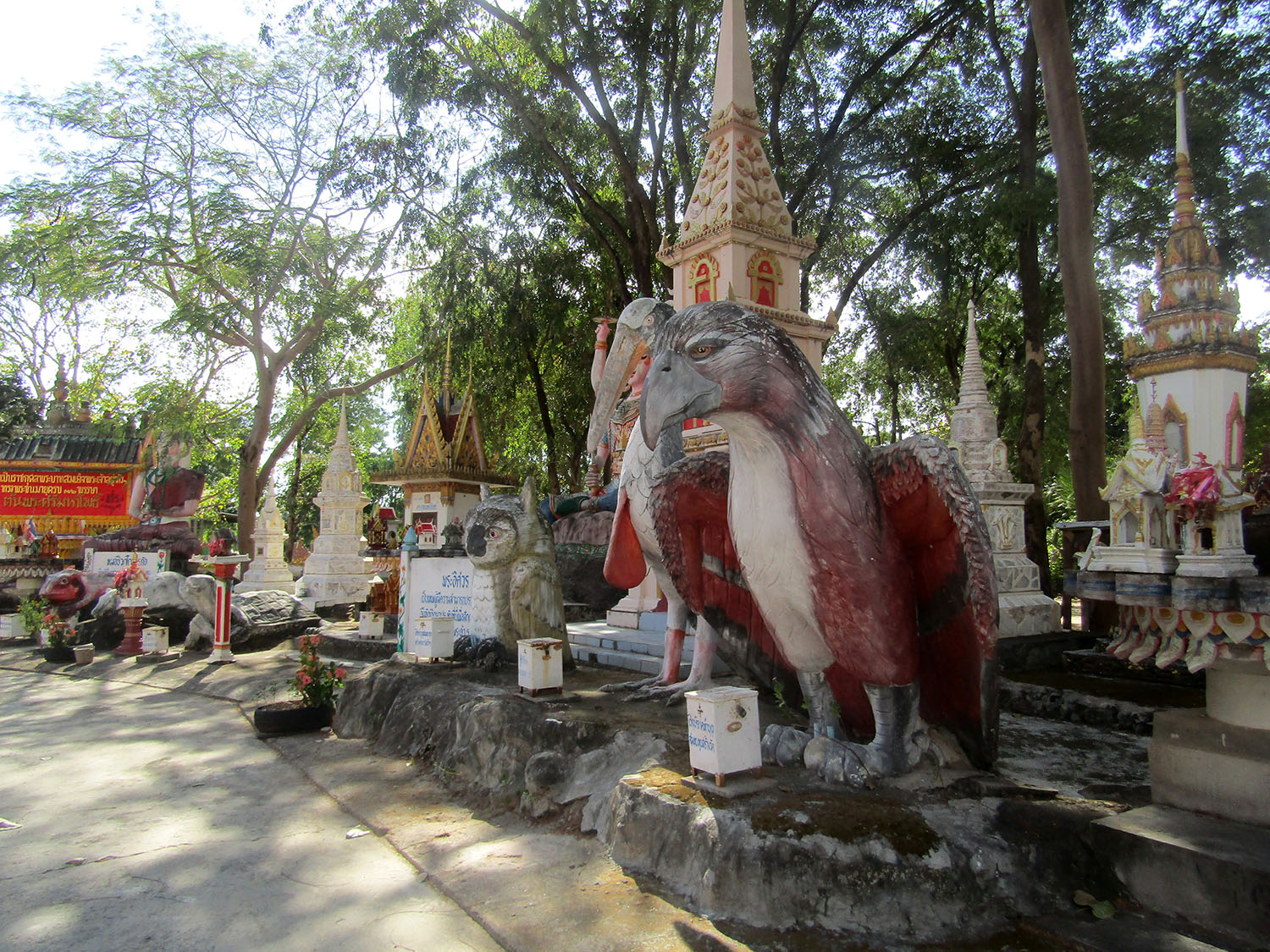
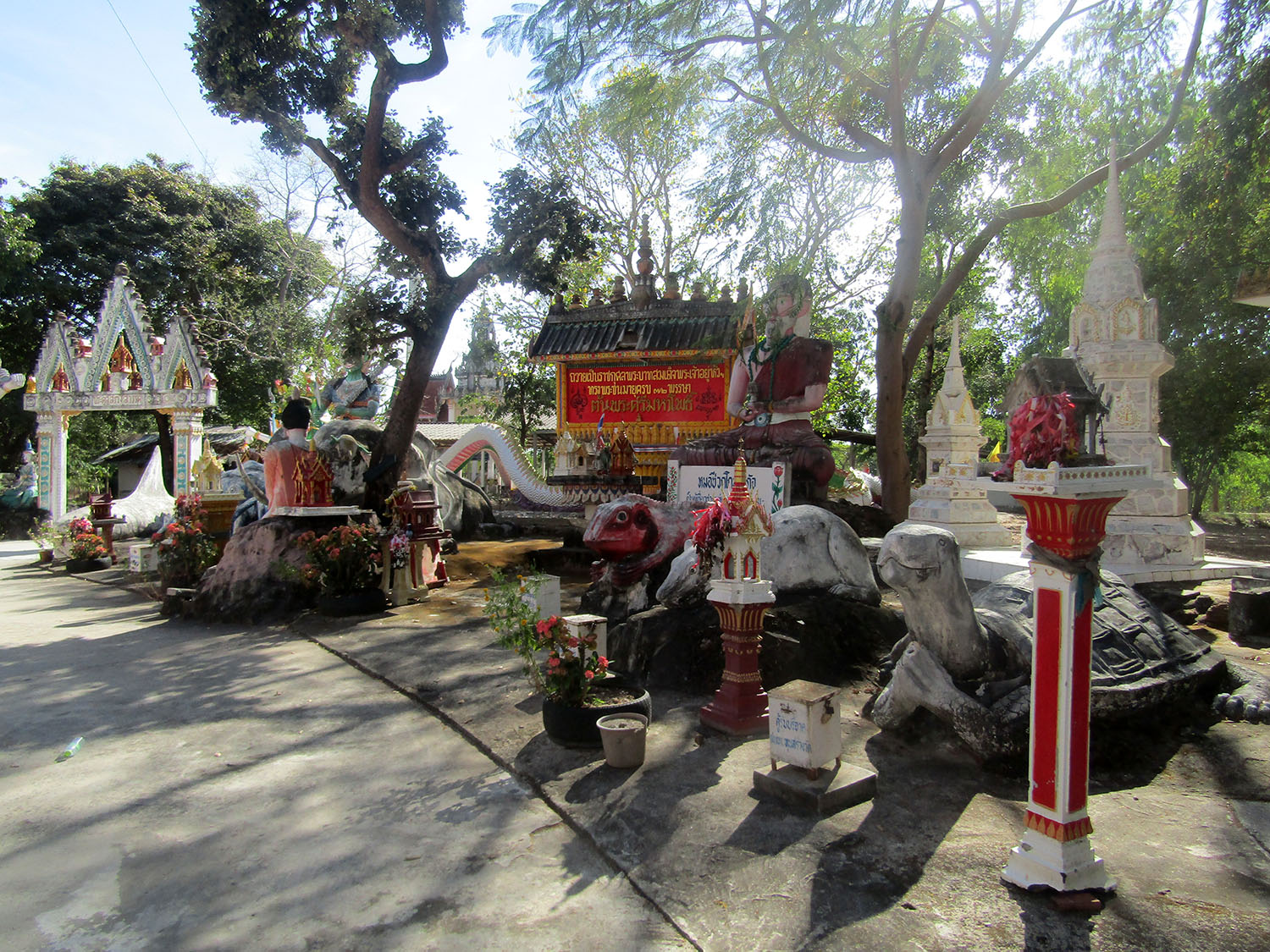
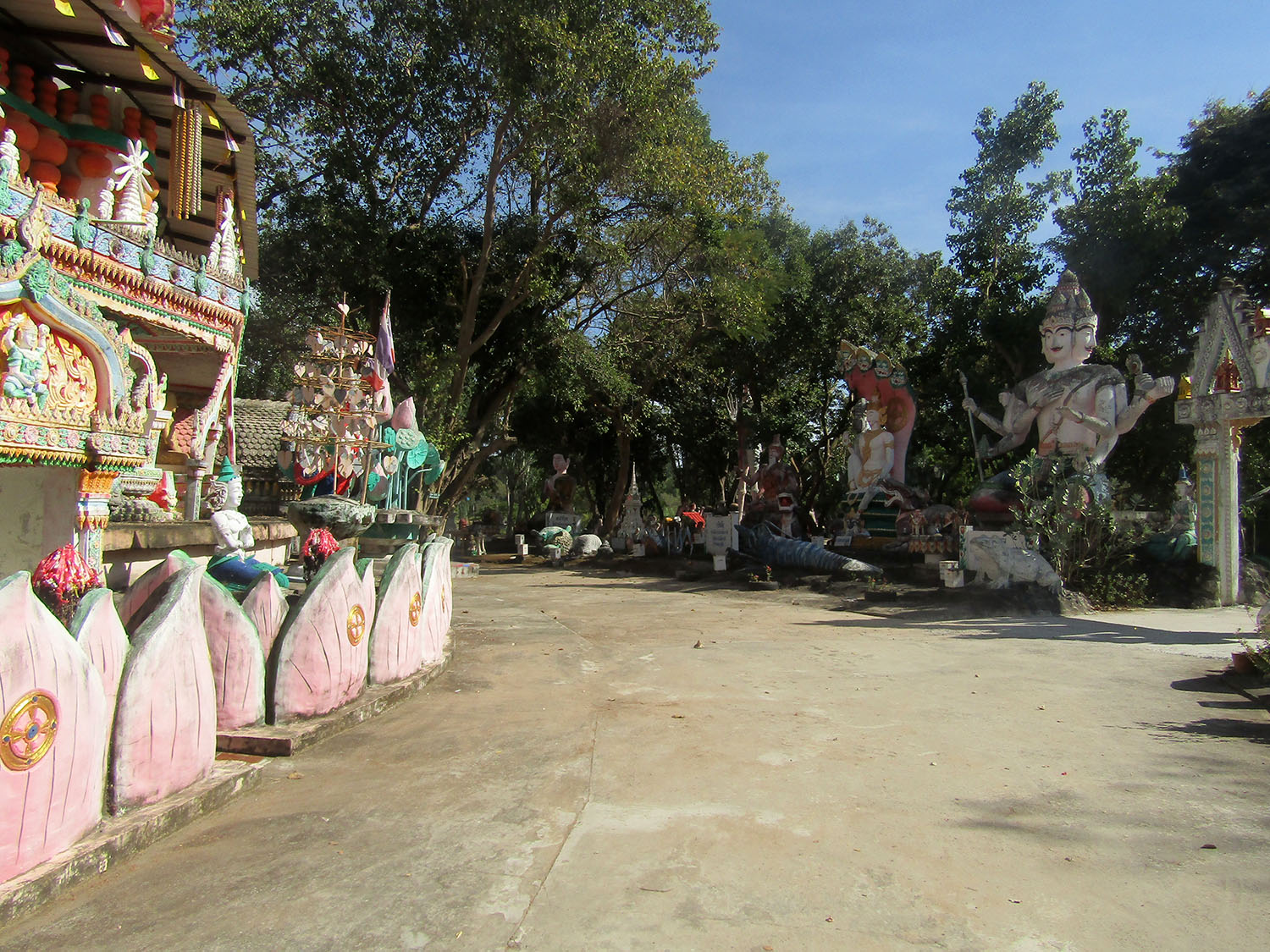
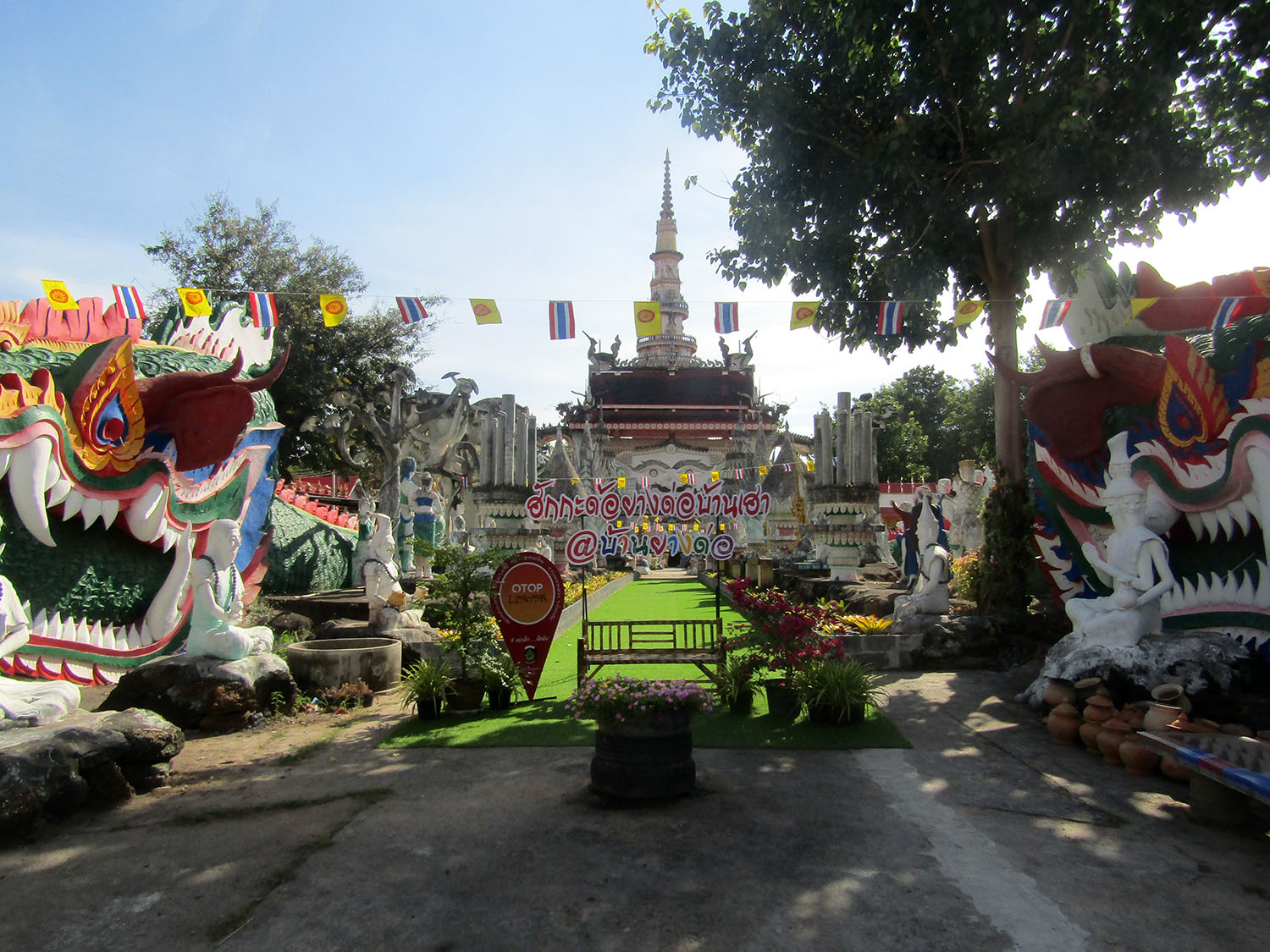
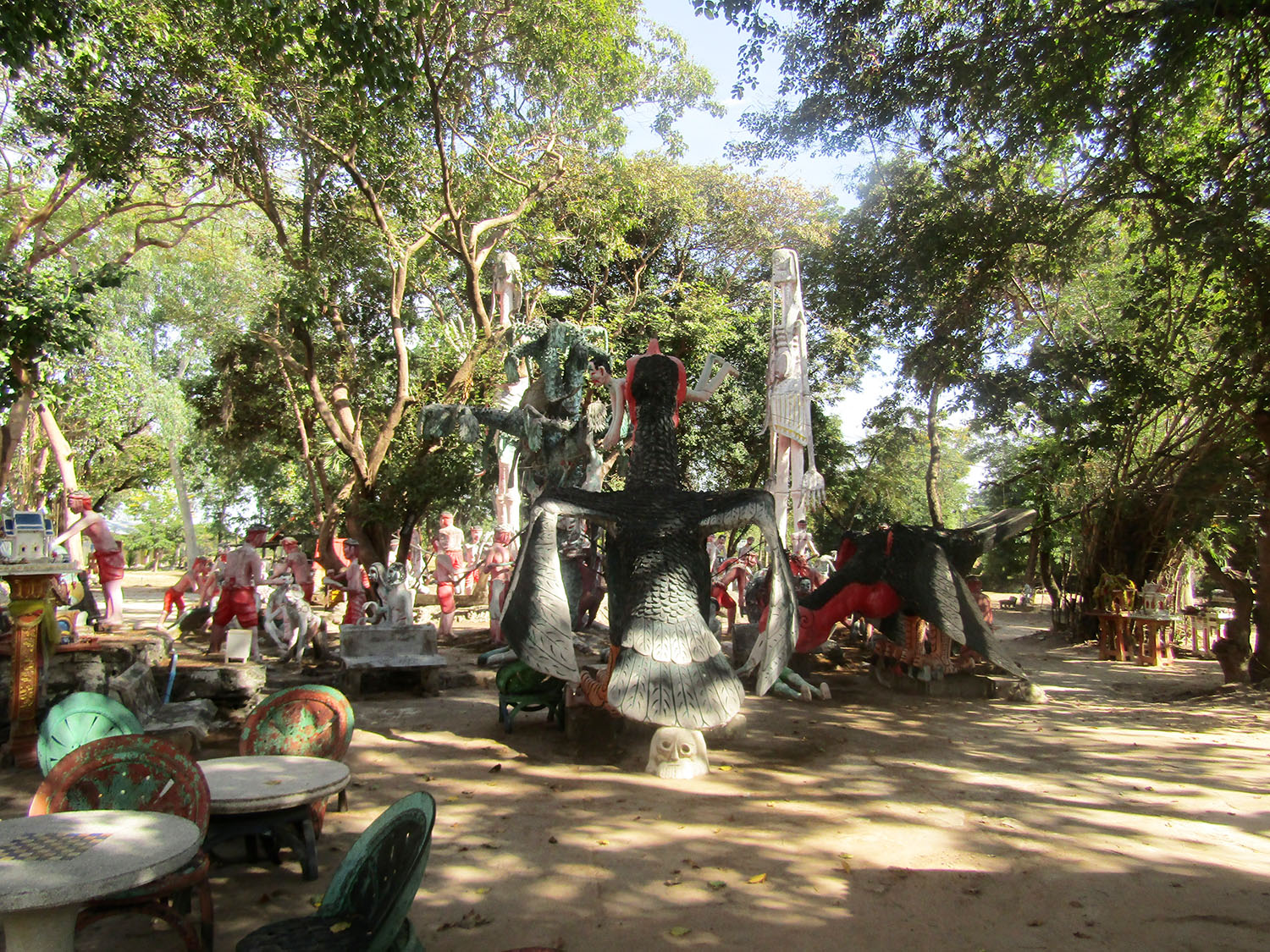
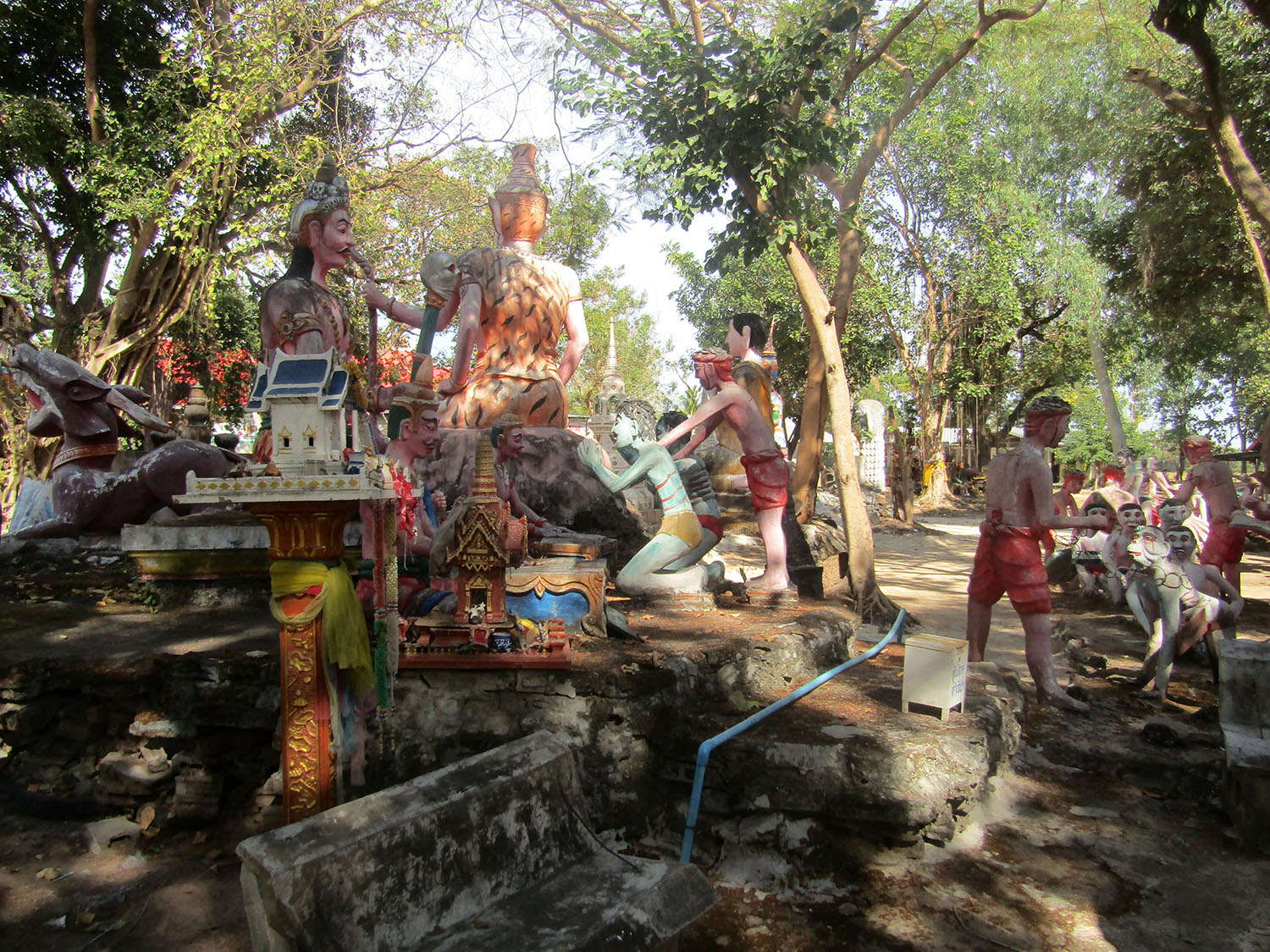
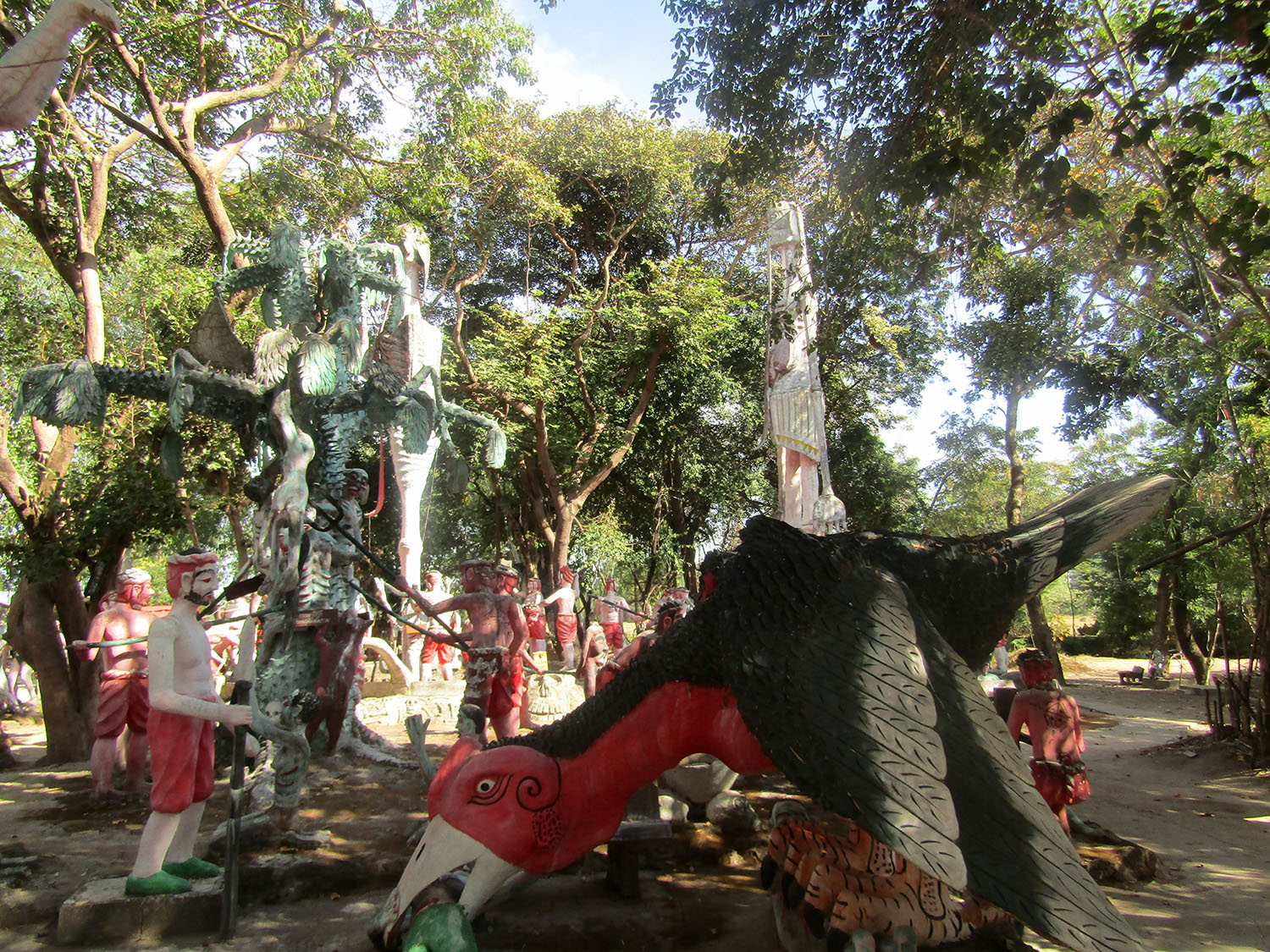
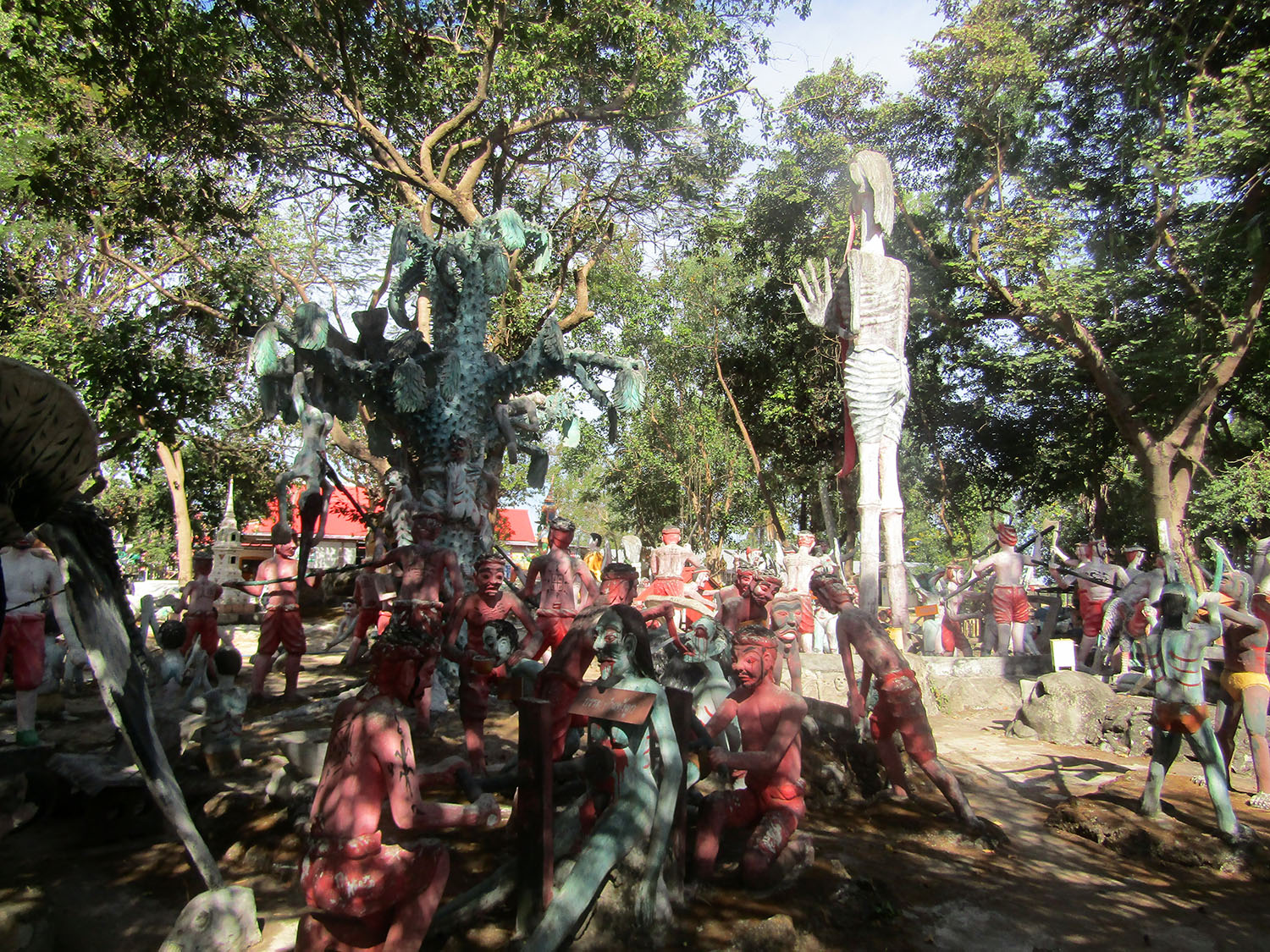
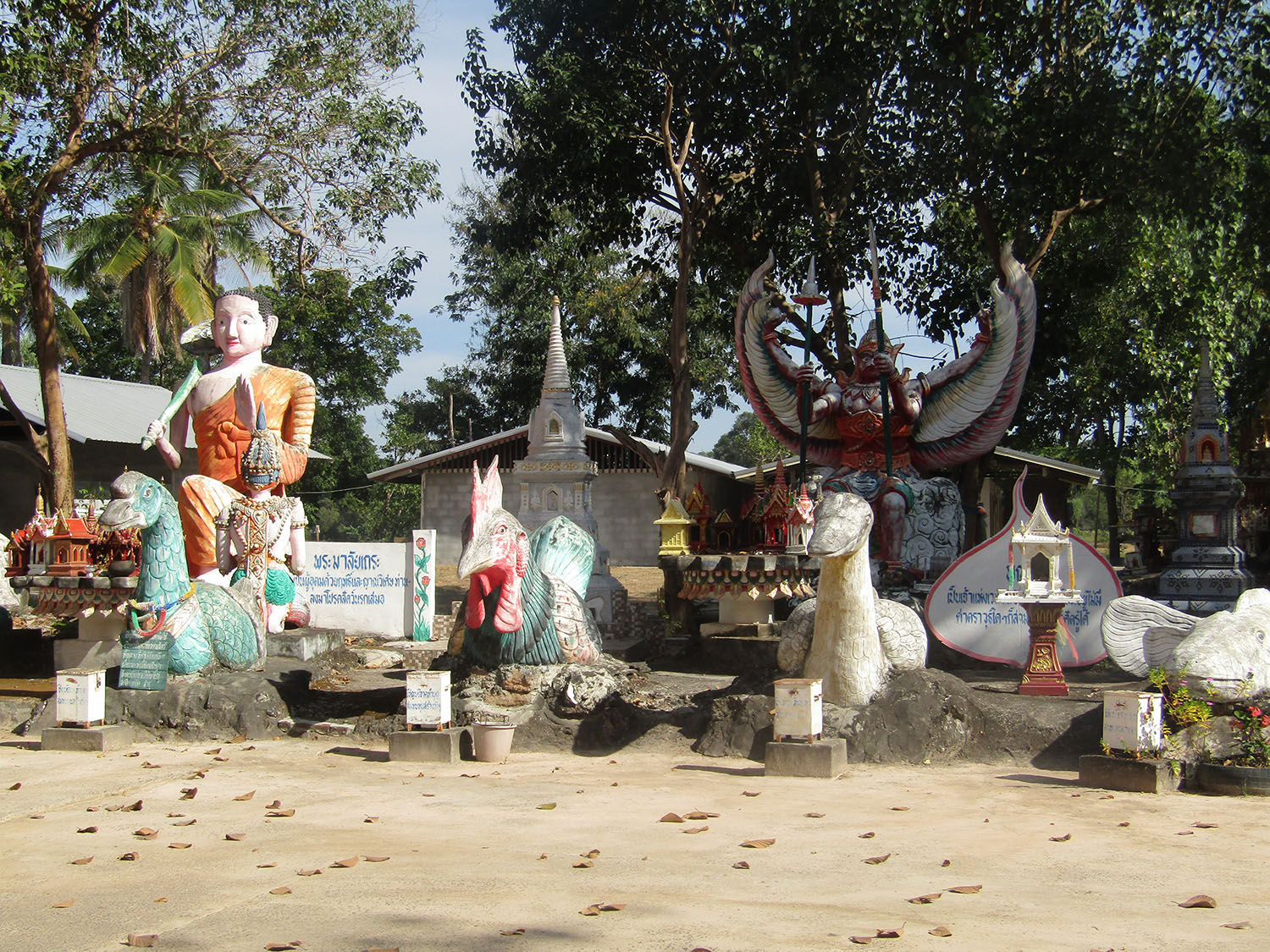
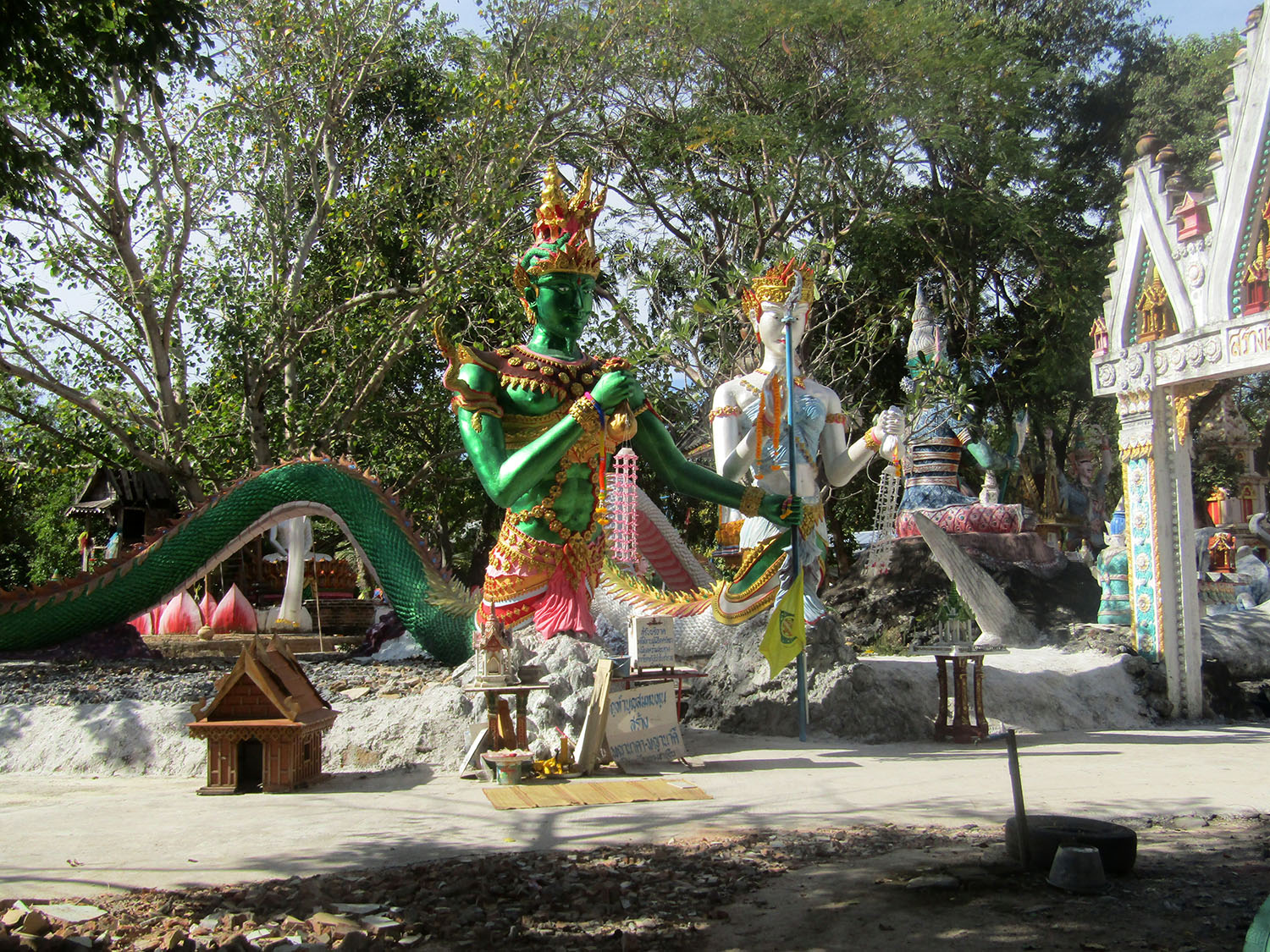
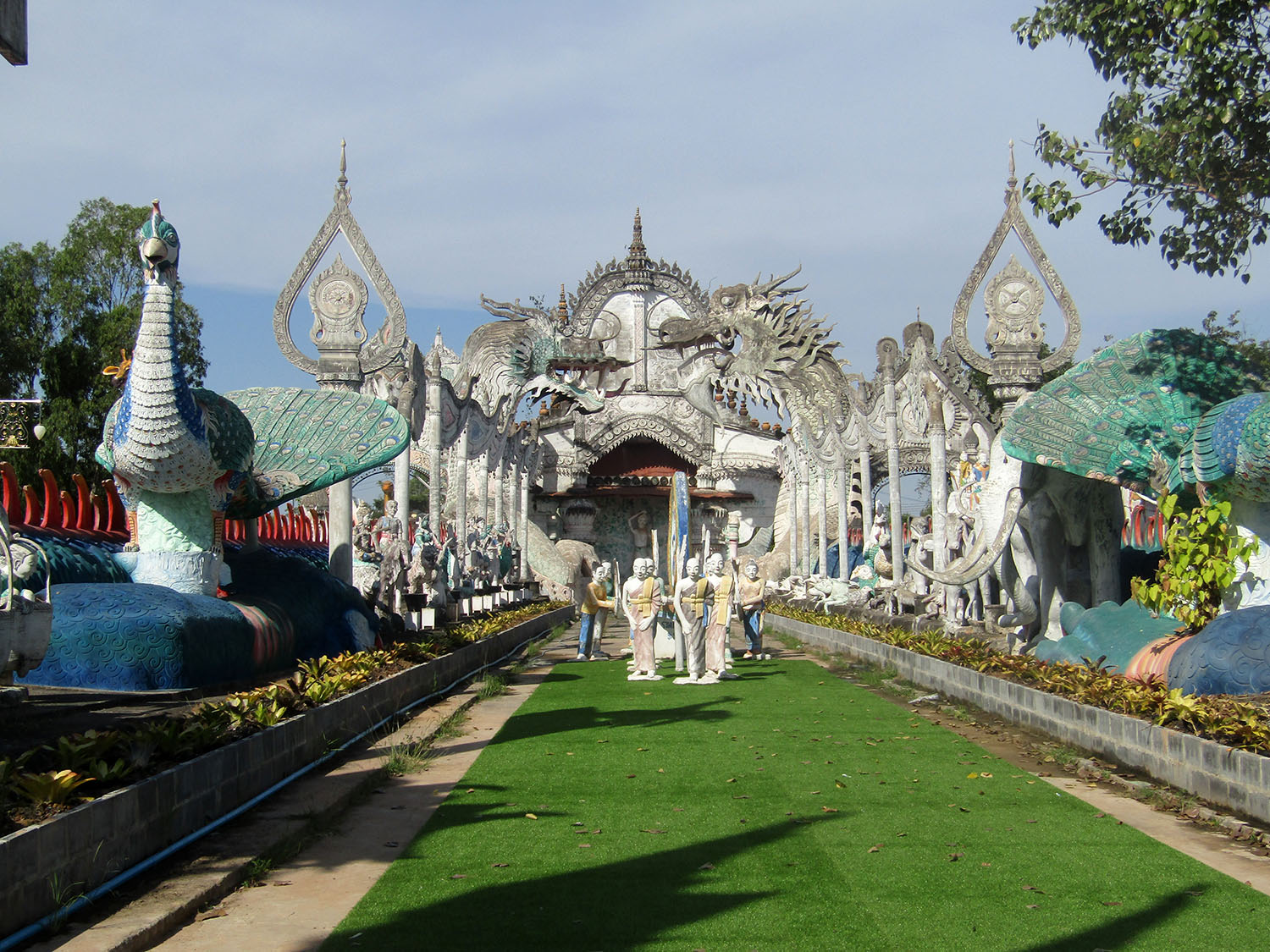 Wat Pa Non Sawan, Thung Khao Luang District, Roi-Et Province
Wat Pa Non Sawan, Thung Khao Luang District, Roi-Et Province
Well, it’s up to the visitor to decide. As far as Katoon is concerned, it’s not Buddhism as she knows it so I’ll just leave it at that. The next location returns me to much more familiar ground.
Prang Ku……..As I move closer to the city, I’m looking for another temple ruin but the GPS sends me along a side road which they’ve closed for road working. The alternative is a detour of some 15 minutes. Arriving at Prang Ku is like looking at the same photograph over and over again, the design is that familiar.
Prang Ku (stone tower) at Ban Nong Ku or Nong Ku Palace was constructed in the 12th/13th centuries. By its architectural style it is believed to be an arokayasala (medical station/hospital) built during the reign of King Jayavaman VII (1181-1218). Prang Ku is currently located in Wat Si Rattanaram built in 1957. Prang Ku consists of a single tower and associated building to the southeast as well as a pond outside its walls. The monument is Khmer style and currently in relatively good condition. It was built of laterite with sandstone doorways and lintels. The entrance with balcony is on the east side with false gates on the other three sides. The upper roof structure has collapsed and only three levels of the structure remain intact. An image of Indra riding on Erawan elephant, was found inside the tower. There are two pieces of door frame, one of them carved with the figure of a hermit at the bottom. In addition a linga was found inside the tower. The associated building was also built in laterite facing west with a cross-shaped entrance gate in the middle of the wall to the east. There are two small chambers, each in the middle of the north and east walls. It is assumed that this monument was structured with wood as there are four post holes found around the structure. The outstanding feature of Prang Ku is that it represents a hospital plan that was typical under Khmer cultural influence in the 12th/13th centuries. Currently there are 31 of these ancient hospitals discovered in the northeastern region of Thailand. Prang Ku was officially registered as a national ancient monument in March 1935.
Prang Ku……..As I move closer to the city, I’m looking for another temple ruin but the GPS sends me along a side road which they’ve closed for road working. The alternative is a detour of some 15 minutes. Arriving at Prang Ku is like looking at the same photograph over and over again, the design is that familiar.
Prang Ku (stone tower) at Ban Nong Ku or Nong Ku Palace was constructed in the 12th/13th centuries. By its architectural style it is believed to be an arokayasala (medical station/hospital) built during the reign of King Jayavaman VII (1181-1218). Prang Ku is currently located in Wat Si Rattanaram built in 1957. Prang Ku consists of a single tower and associated building to the southeast as well as a pond outside its walls. The monument is Khmer style and currently in relatively good condition. It was built of laterite with sandstone doorways and lintels. The entrance with balcony is on the east side with false gates on the other three sides. The upper roof structure has collapsed and only three levels of the structure remain intact. An image of Indra riding on Erawan elephant, was found inside the tower. There are two pieces of door frame, one of them carved with the figure of a hermit at the bottom. In addition a linga was found inside the tower. The associated building was also built in laterite facing west with a cross-shaped entrance gate in the middle of the wall to the east. There are two small chambers, each in the middle of the north and east walls. It is assumed that this monument was structured with wood as there are four post holes found around the structure. The outstanding feature of Prang Ku is that it represents a hospital plan that was typical under Khmer cultural influence in the 12th/13th centuries. Currently there are 31 of these ancient hospitals discovered in the northeastern region of Thailand. Prang Ku was officially registered as a national ancient monument in March 1935.
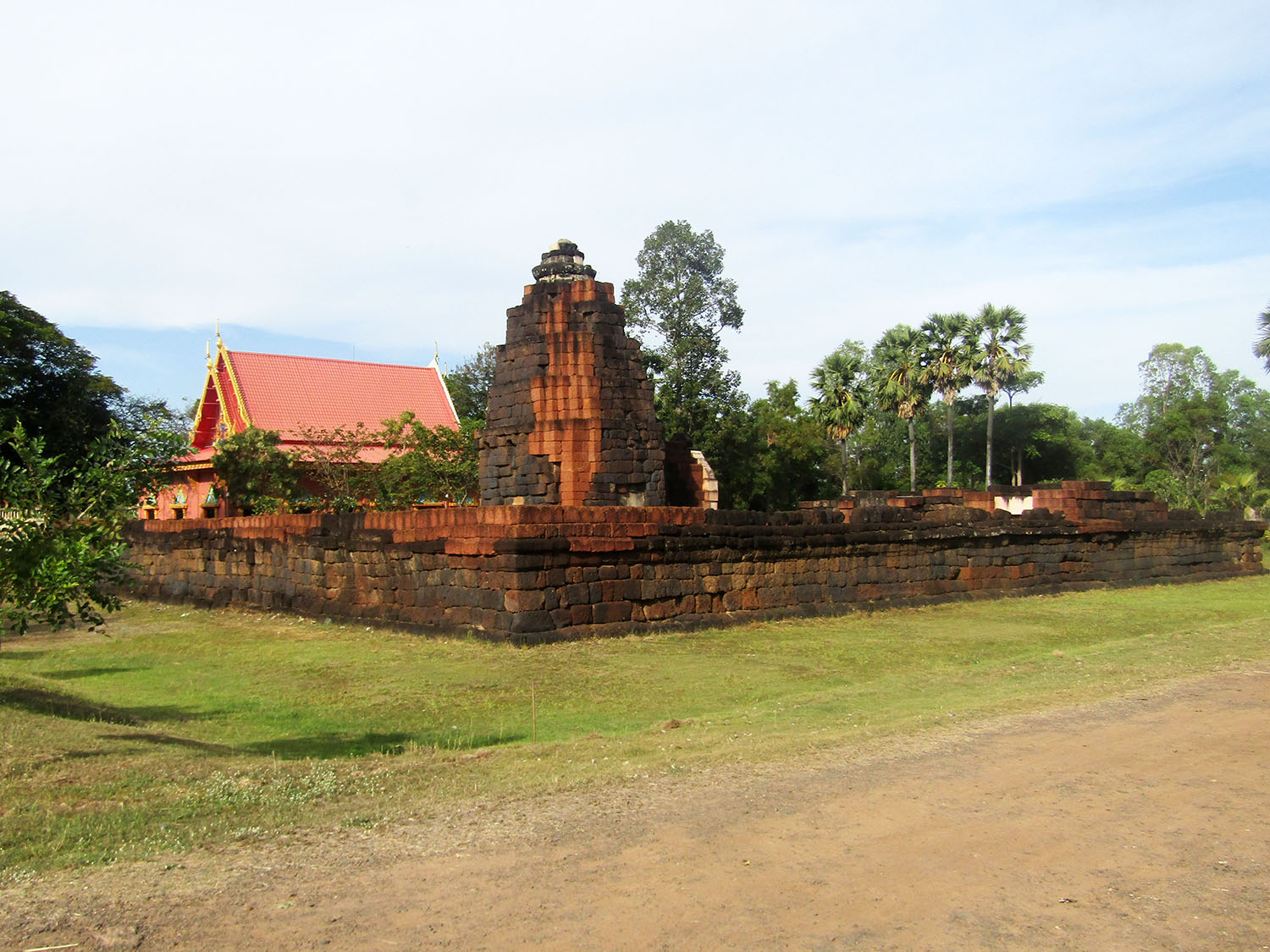
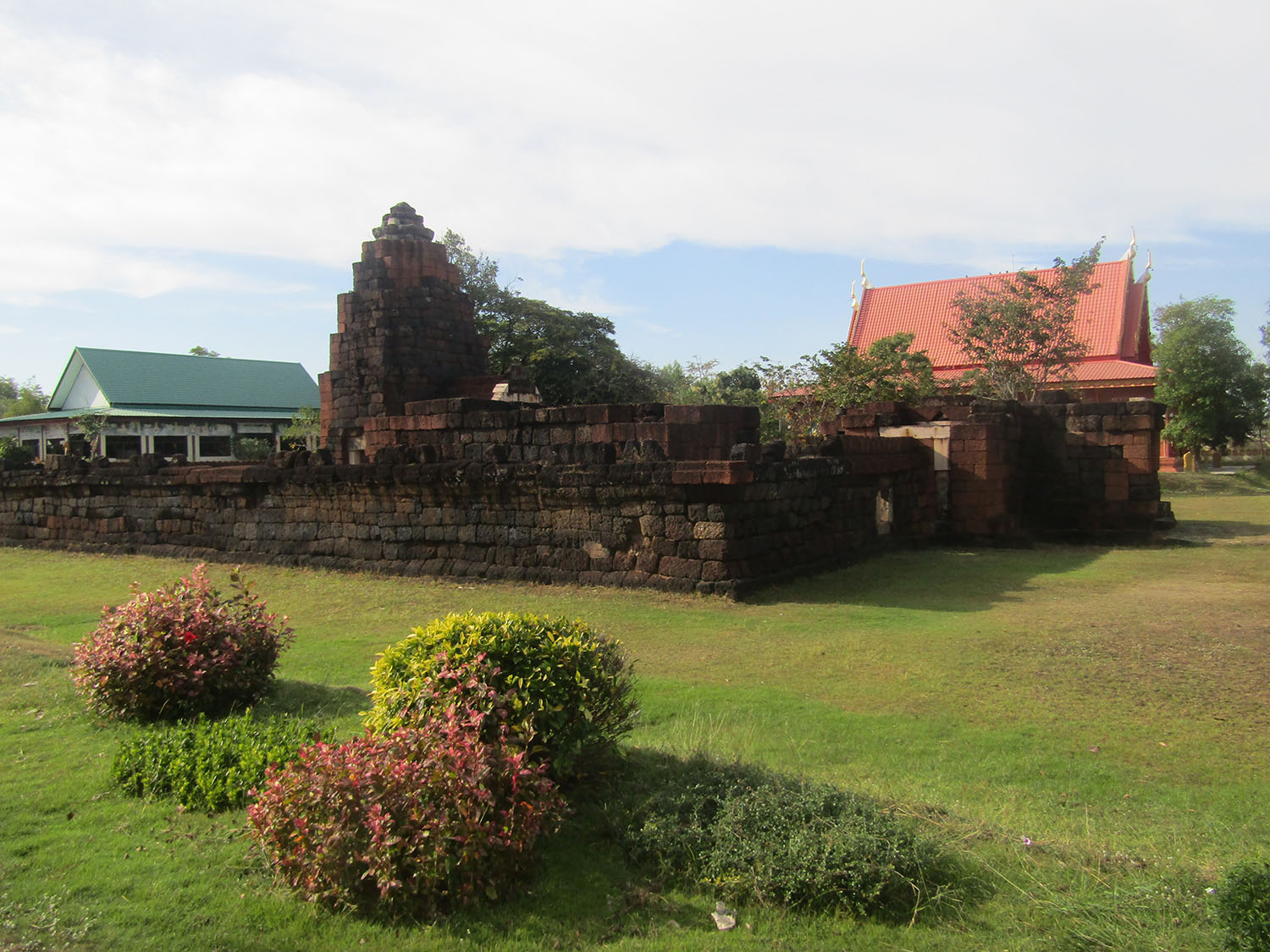
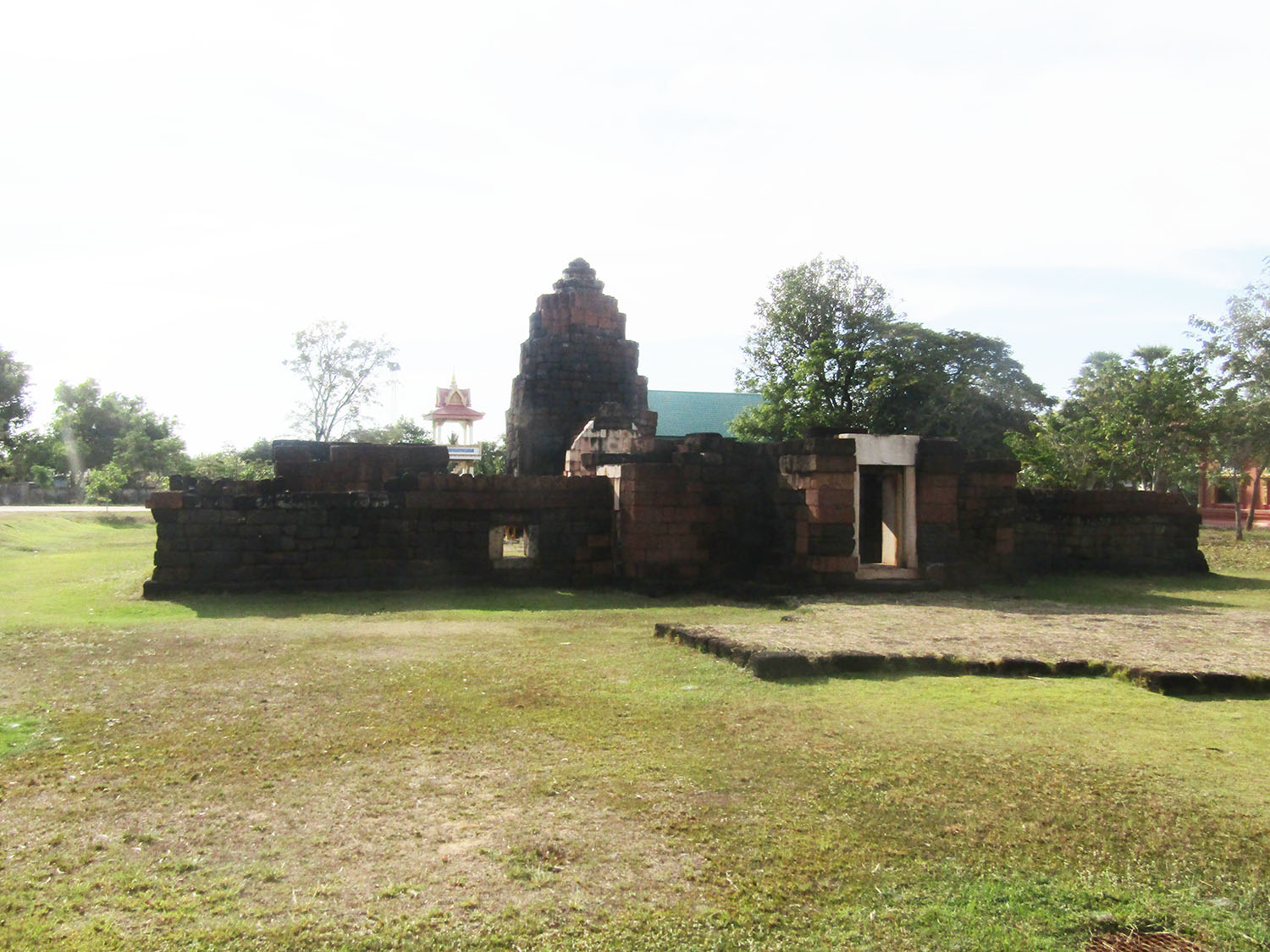
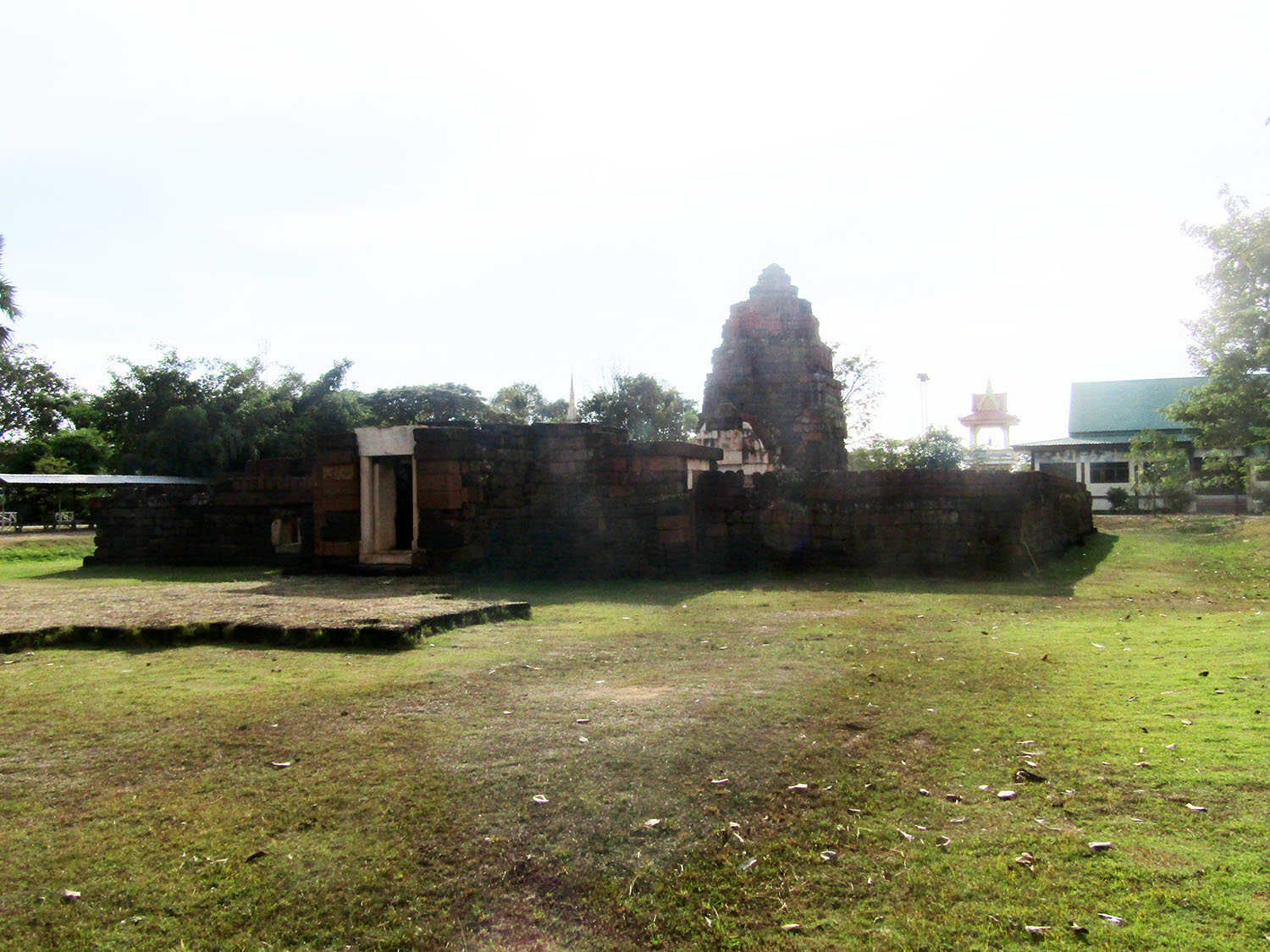
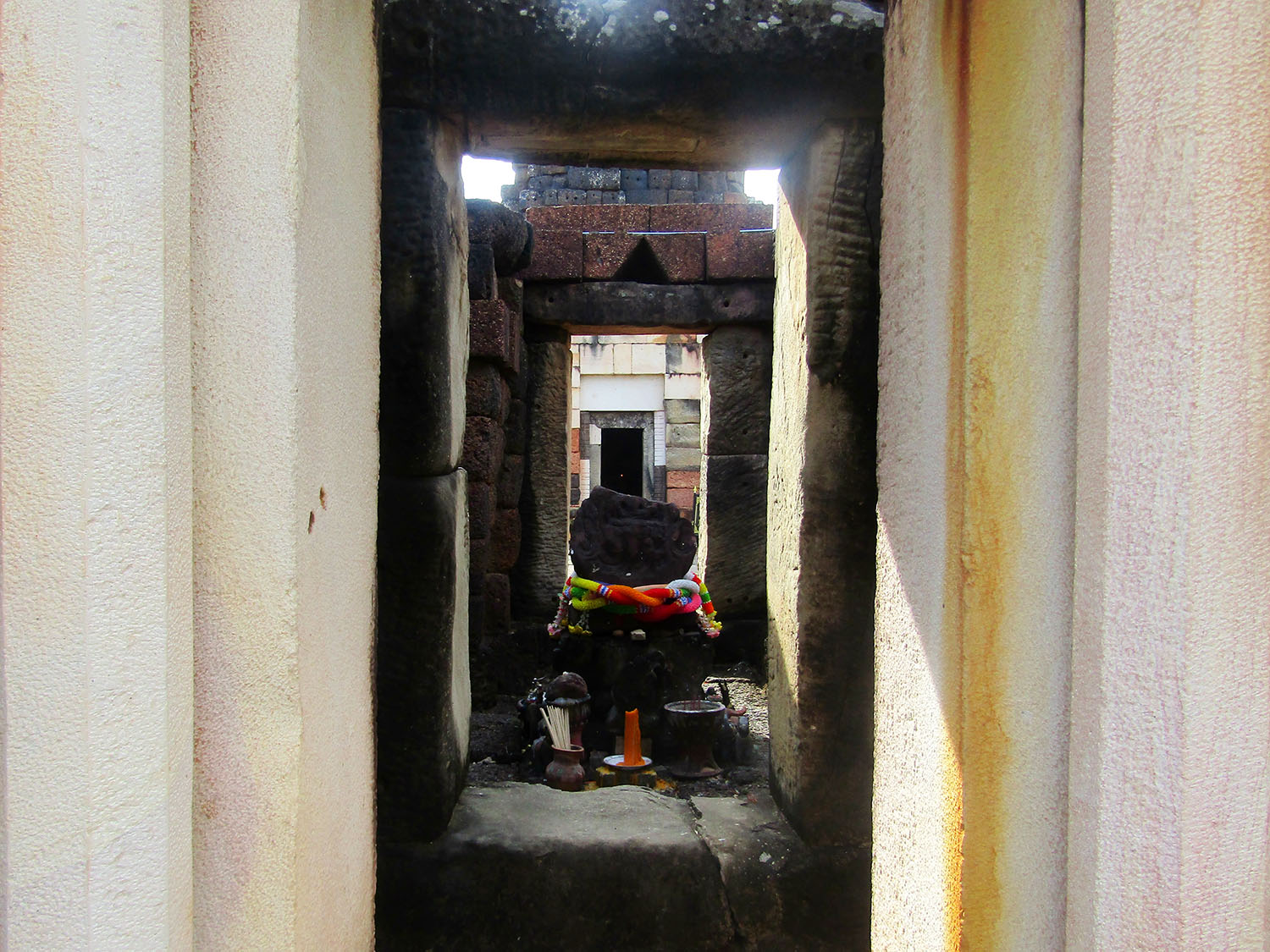
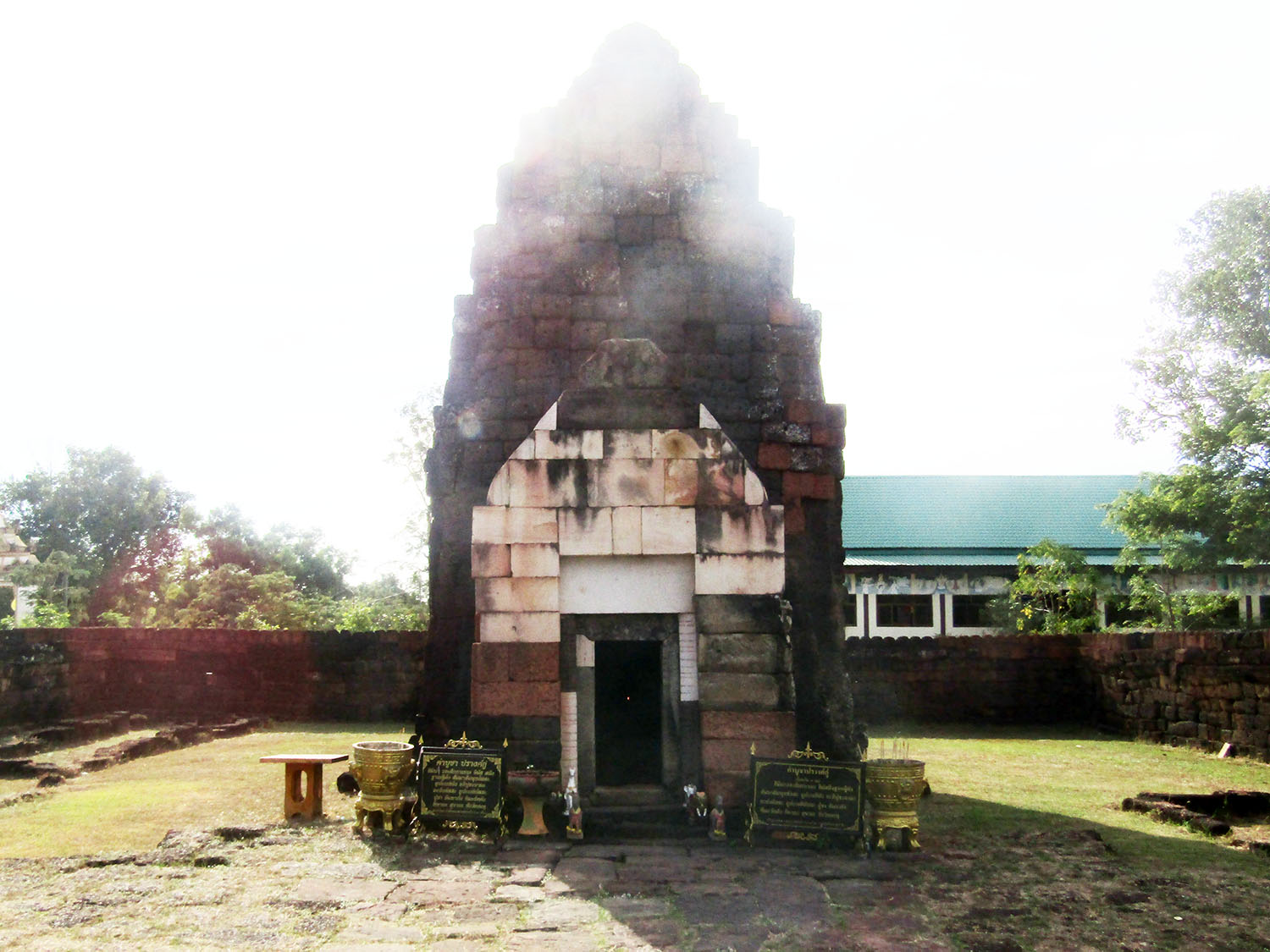
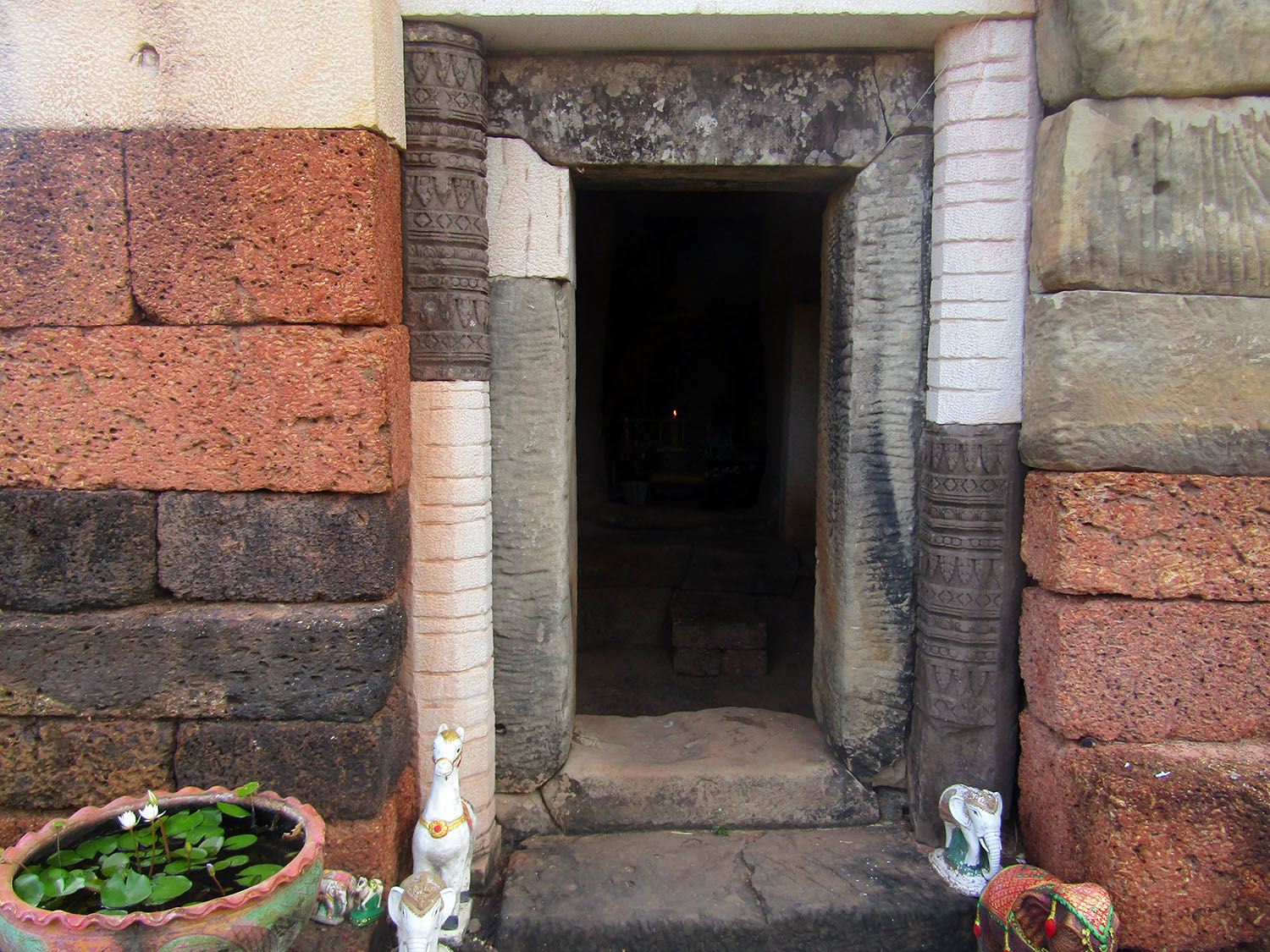
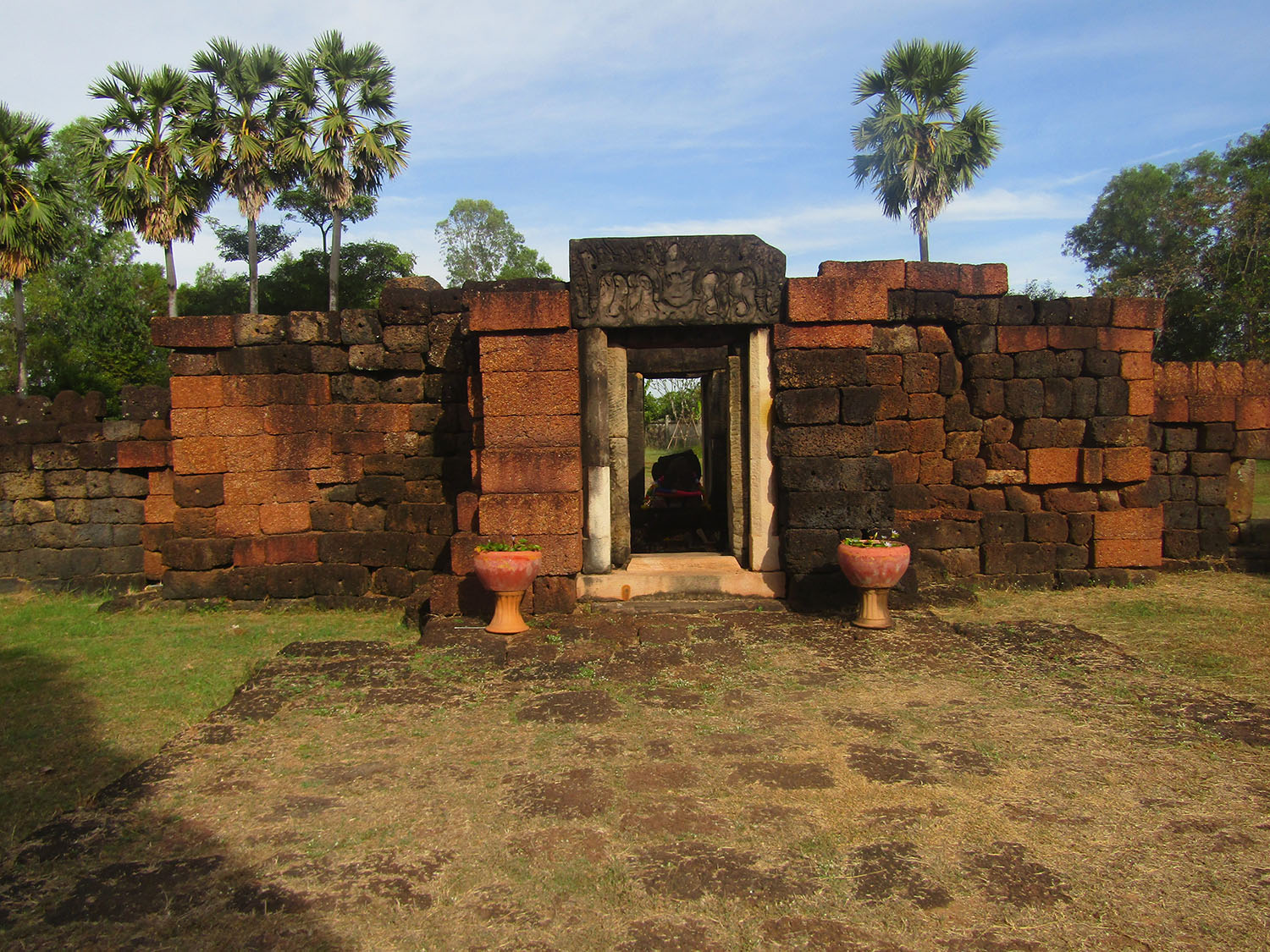
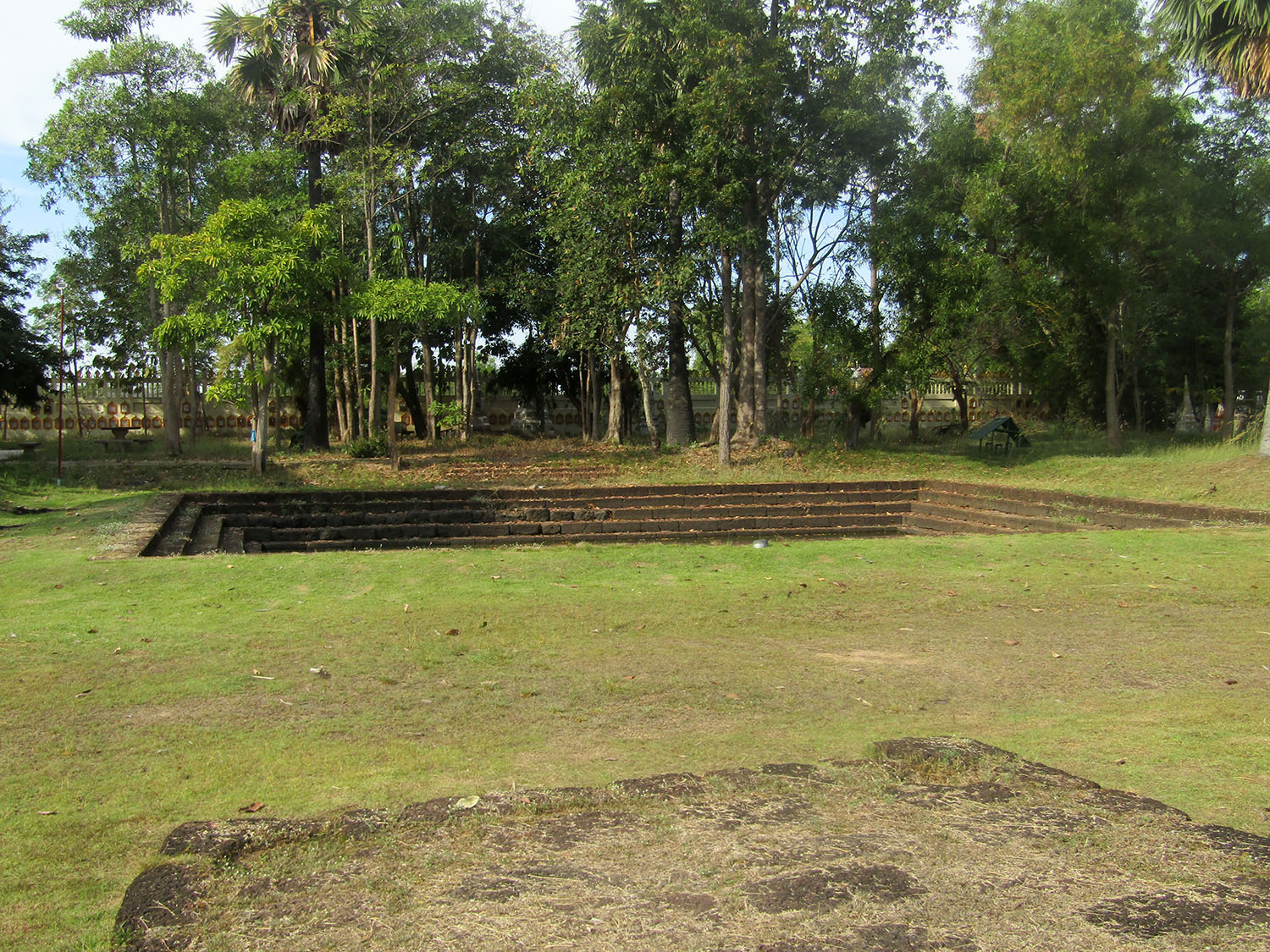 Prasat Nong Ku/Prang Ku (stone tower), Thawatburi District, Roi-Et Province
Prasat Nong Ku/Prang Ku (stone tower), Thawatburi District, Roi-Et Province
This unusually long description of Prang Ku by the 9th Regional Office of the Fine Arts Department based in Ubon Ratchathani suggest that a significant amount of work has been carried out at this site recently. From my point of view, it’s the sixth medical station of the period that I’ve come across but the first one in this province; all the others have been further south. The count of such buildings is interesting since it suggests that less than a third of the medical stations that Jayavaman VII ordered to be built have actually been found in Thailand. While there may be more to be found, the majority were built in Cambodia. Another interesting area of research would be to establish the density of these remaining monuments. My understanding is that they would have been constructed no more than a day’s travelling from each other, likely no more than 30 km.
Ku Noi……..Thinking that the area has now been covered we head back to the main road where Katoon spots something else, 200 metres on the opposite side of the road. I’m soon off to investigate.
Ku Noi (small tower) at Ban Yang Ku was constructed in the 10th/11th centuries and located 300 metres to the west of Prang Ku which was constructed a couple of centuries later. Ku Noi has a unique architectural style, a complex of three towers on the same base, 1.5 metres high facing east. There are balconies on the east and west sides of the structure with a staircase on both sides. It is believed that the towers were made of wood since there are four post holes at all four corners of the base. The type of construction with three towers on the same base is similar to a more complete tower structure called Ku Ka Sing (which will be reviewed later). The outstanding feature of Ku Noi is its contrasting style compared with Prang Ku nearby which has just the single tower on its base. Ku Noi was officially registered as a national ancient monument in November 1982.
Ku Noi……..Thinking that the area has now been covered we head back to the main road where Katoon spots something else, 200 metres on the opposite side of the road. I’m soon off to investigate.
Ku Noi (small tower) at Ban Yang Ku was constructed in the 10th/11th centuries and located 300 metres to the west of Prang Ku which was constructed a couple of centuries later. Ku Noi has a unique architectural style, a complex of three towers on the same base, 1.5 metres high facing east. There are balconies on the east and west sides of the structure with a staircase on both sides. It is believed that the towers were made of wood since there are four post holes at all four corners of the base. The type of construction with three towers on the same base is similar to a more complete tower structure called Ku Ka Sing (which will be reviewed later). The outstanding feature of Ku Noi is its contrasting style compared with Prang Ku nearby which has just the single tower on its base. Ku Noi was officially registered as a national ancient monument in November 1982.
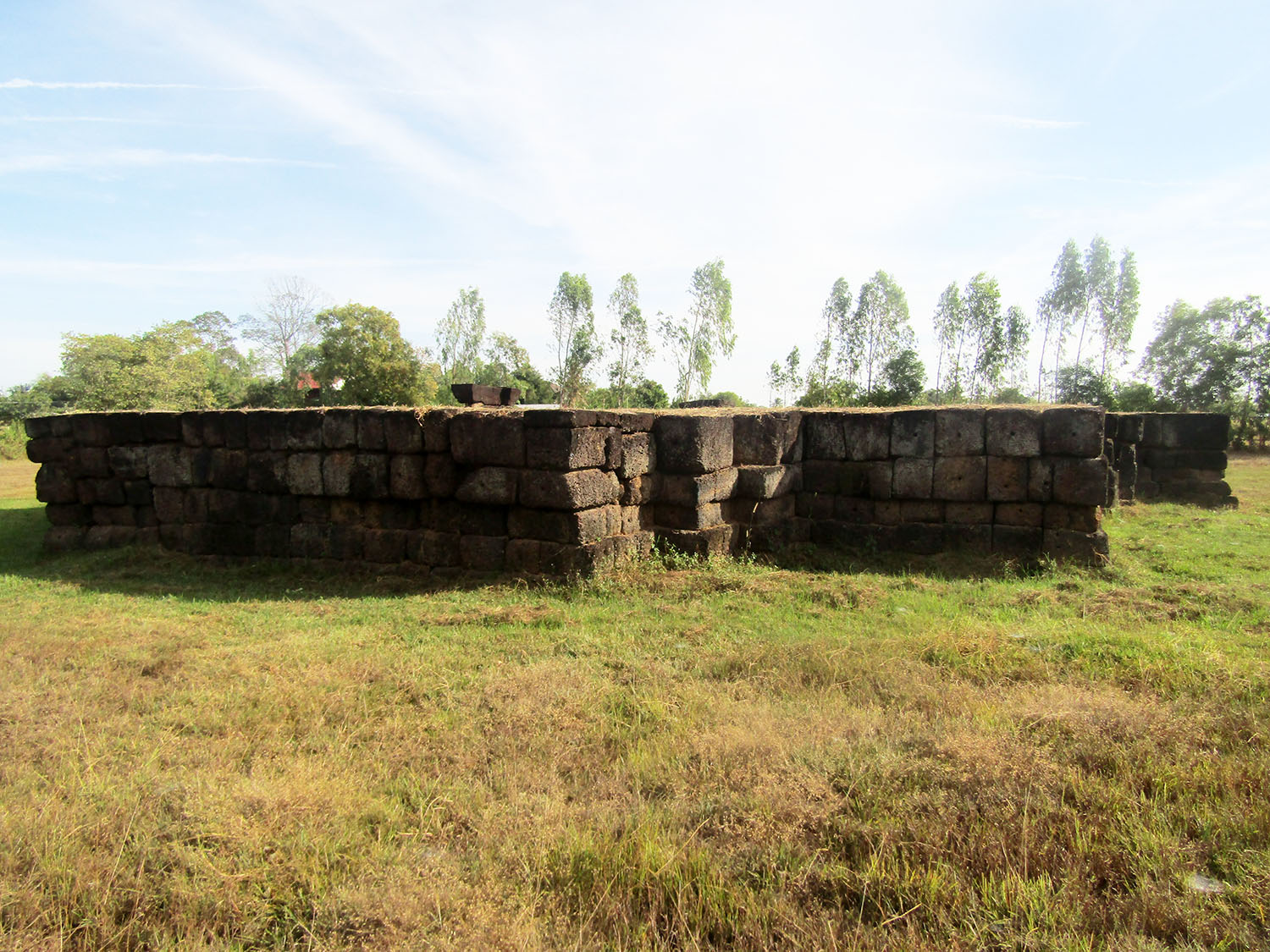
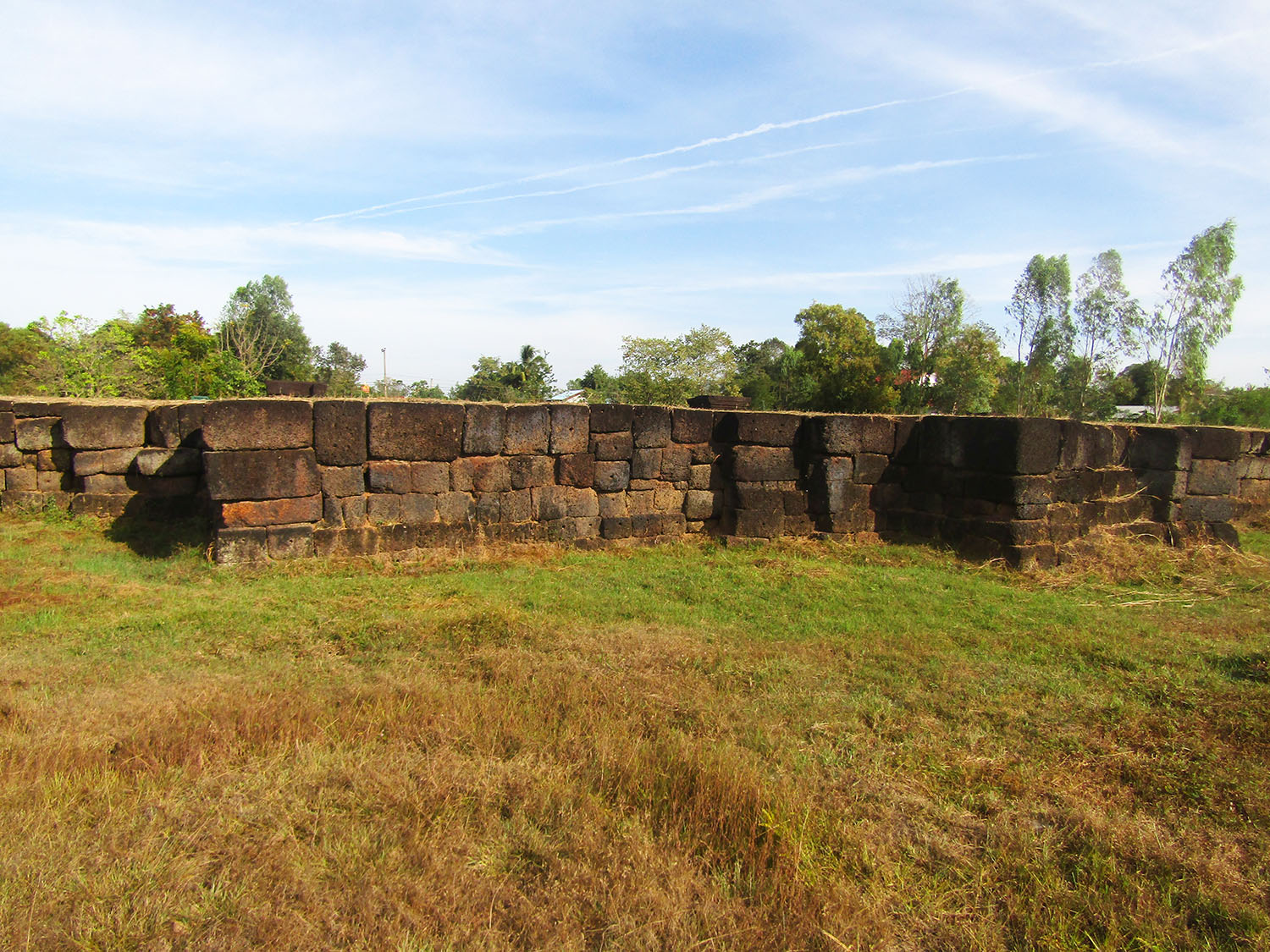
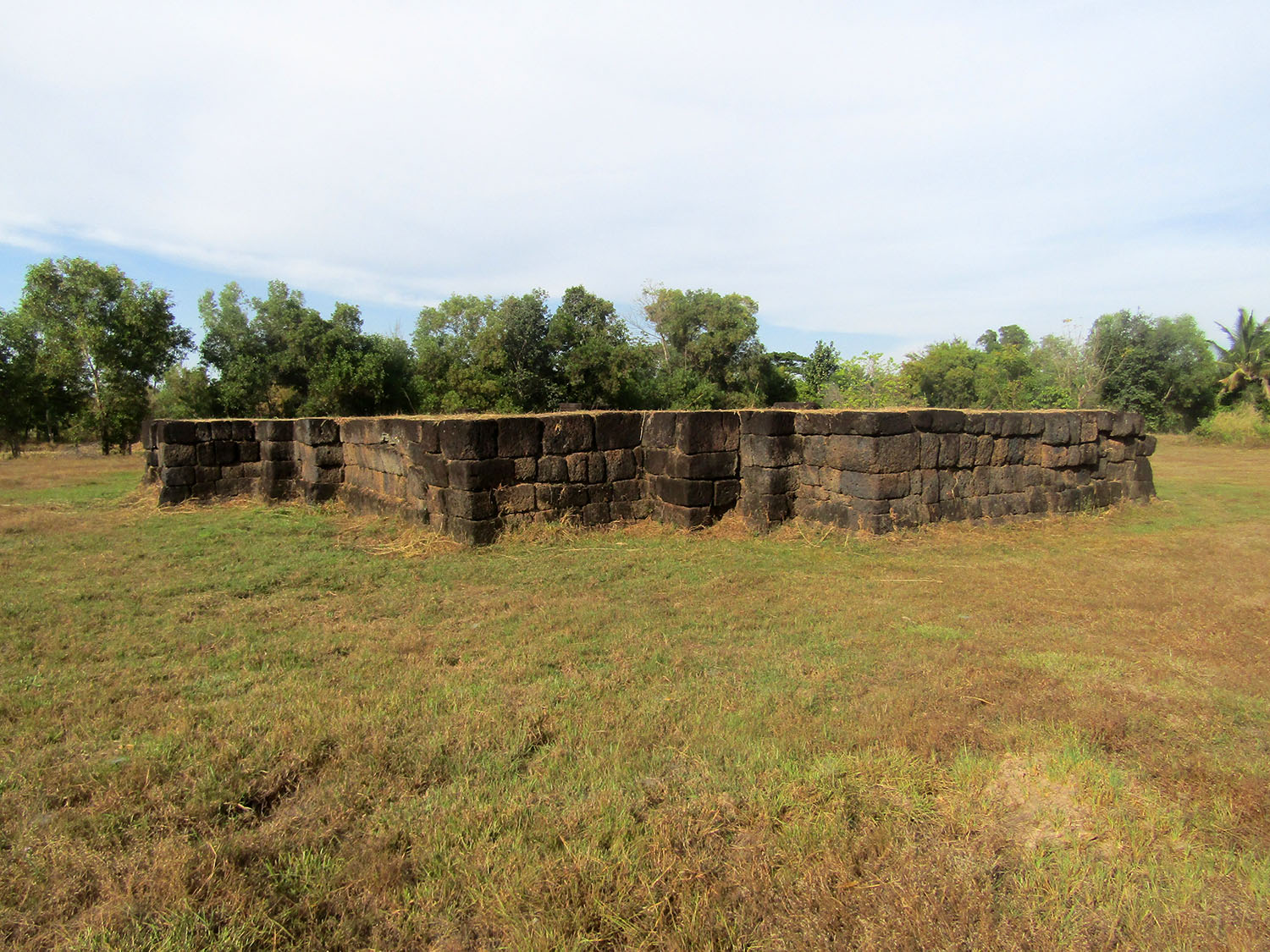 Ku Noi (small tower), Thawatburi District, Roi-Et Province
Ku Noi (small tower), Thawatburi District, Roi-Et Province
Wat Burapha Phiram……..More than satisfied with these latest visits, it’s now time to head for the city of Roi Et and to arguably the most iconic attraction in the city. Wat Burapha Phiram contains the image Luang Pho To, the tallest Buddha image in blessing posture in the world. It is 59.2 metres high from head to toe and 67.85 metres high including the pedestal. The image is made of concrete, the shrine constructed between 1973 and 1979. Around the pedestal is the museum and spirit house of Chao Pho Mahasak, located to the east near the old moat around the walled city, a place venerated by local worshippers.
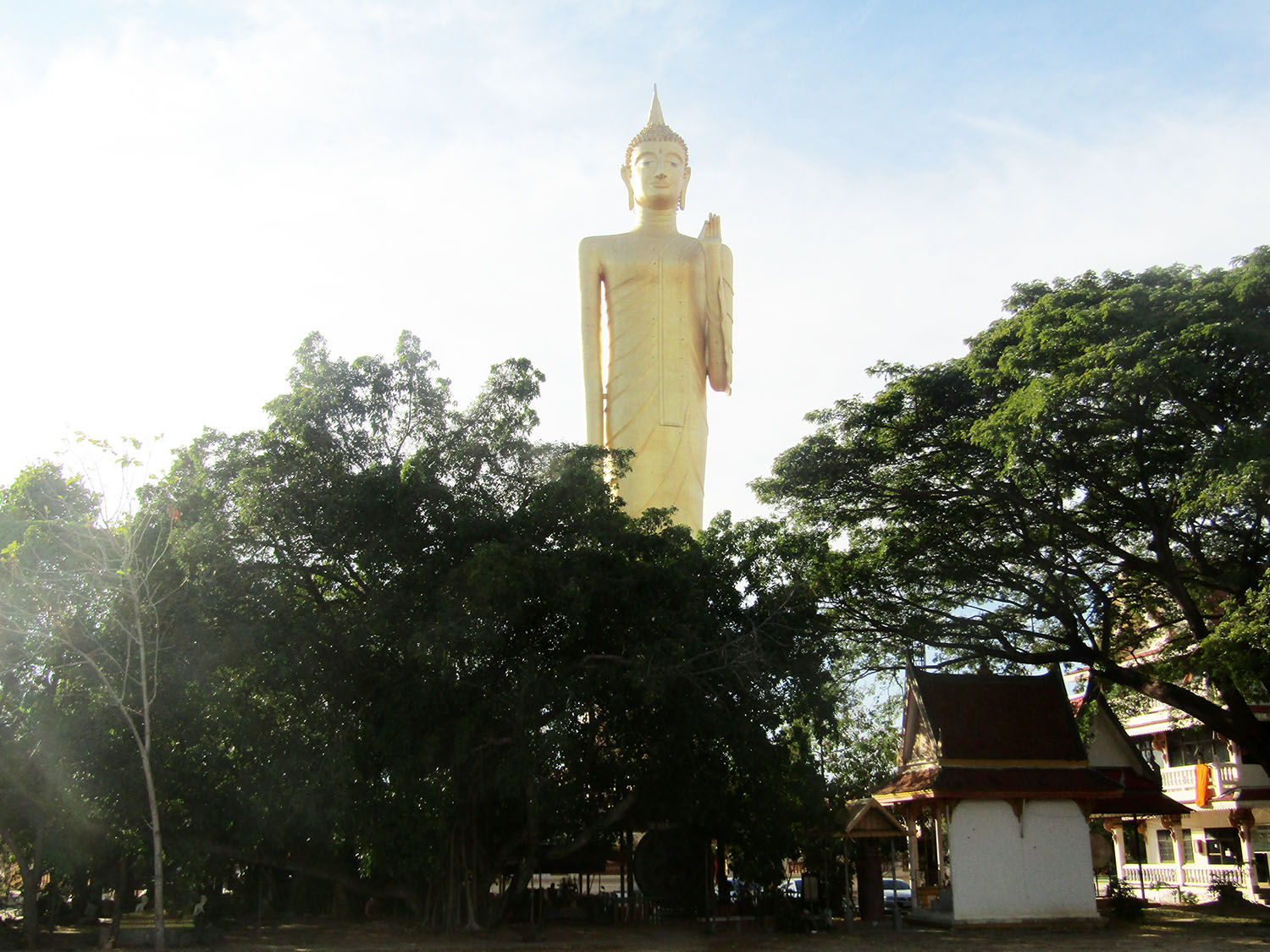
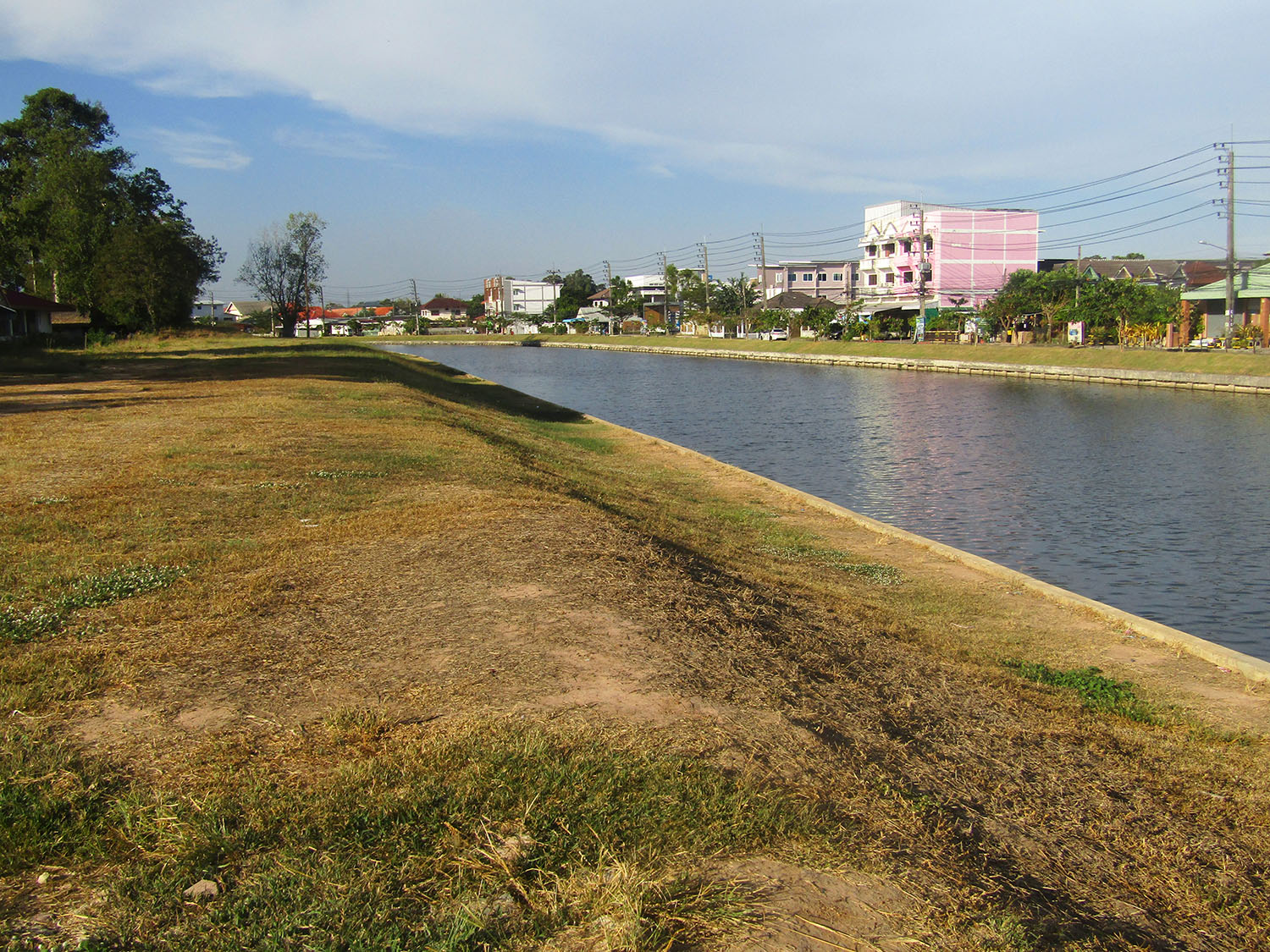
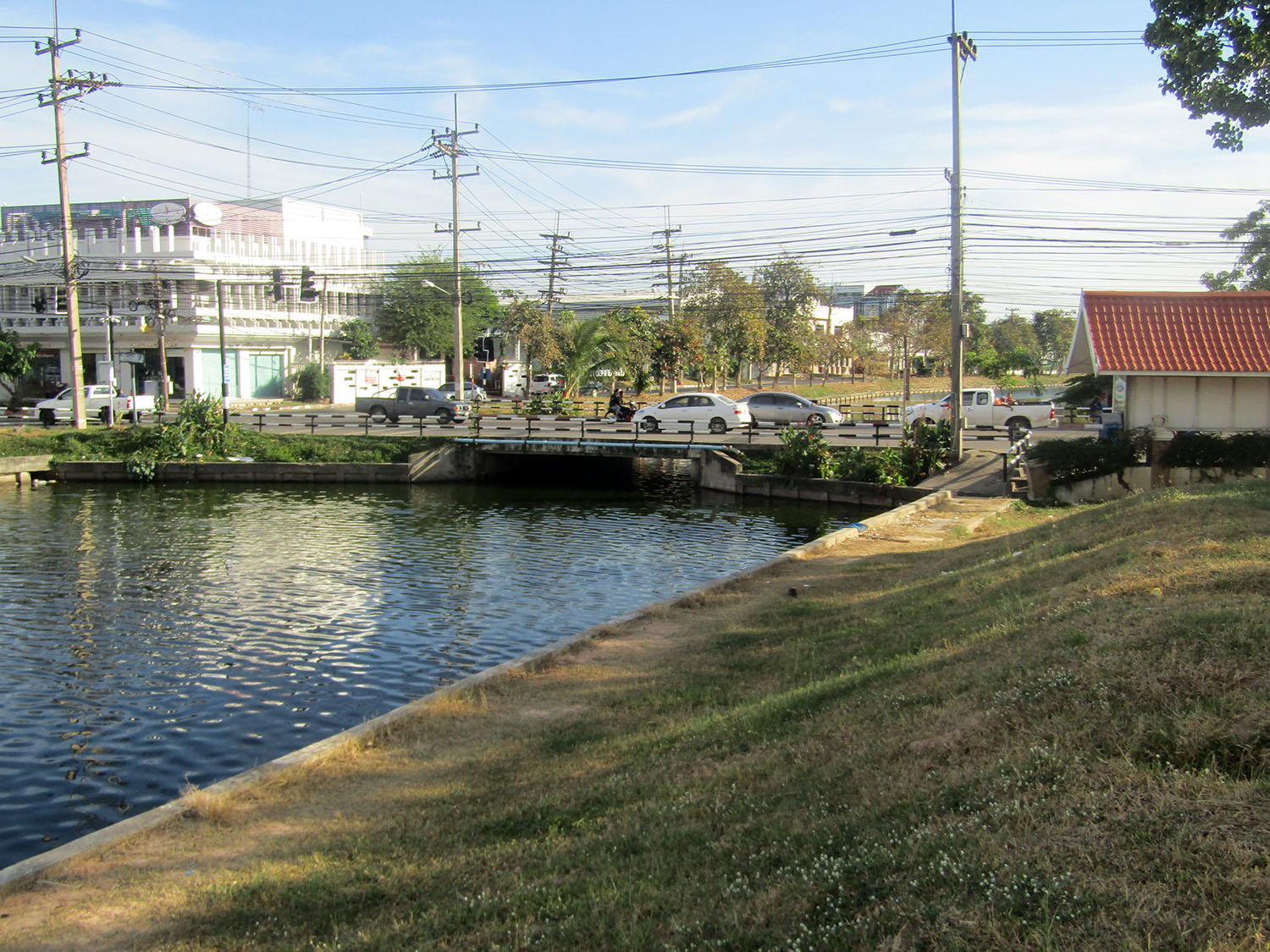
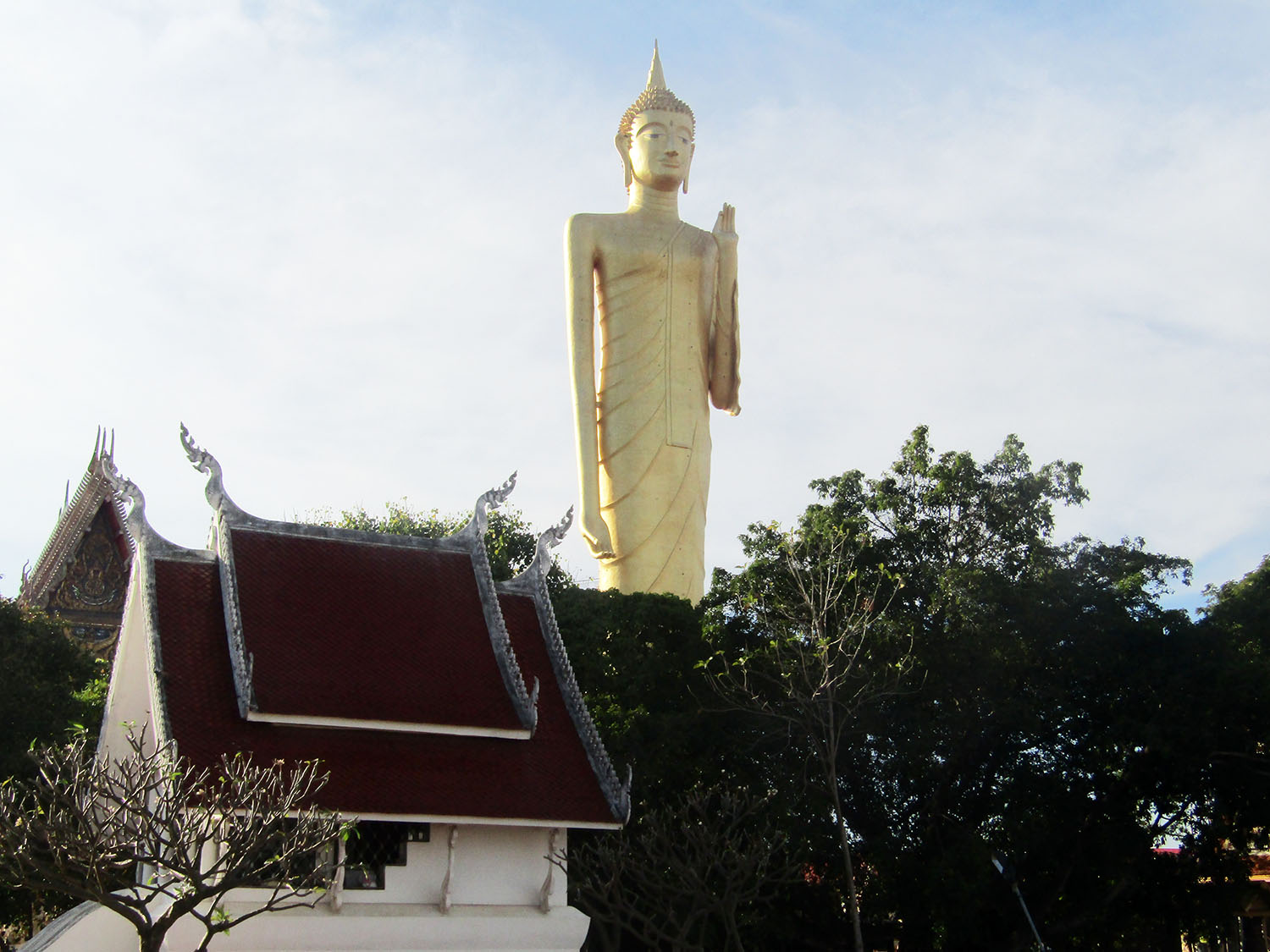
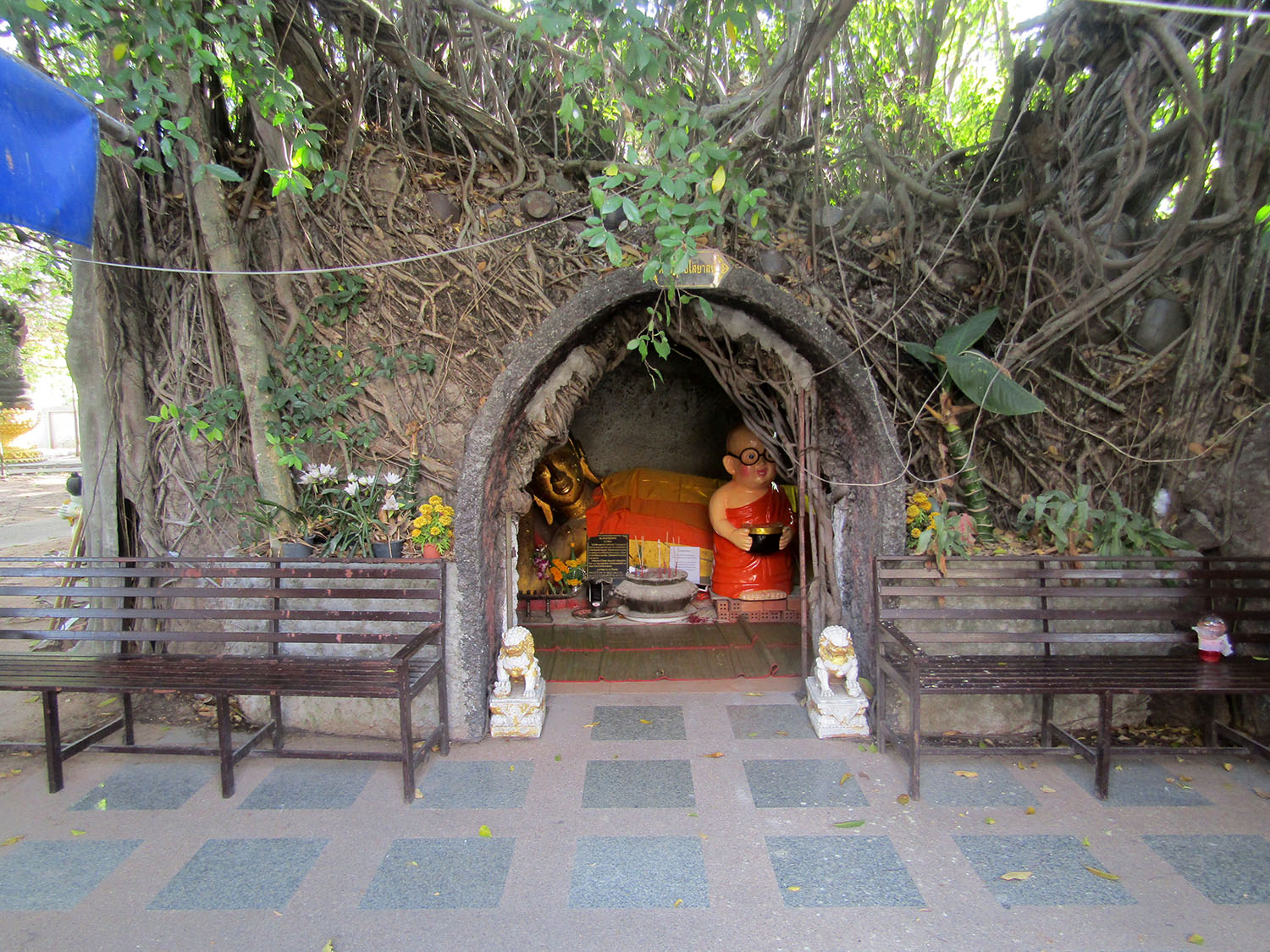
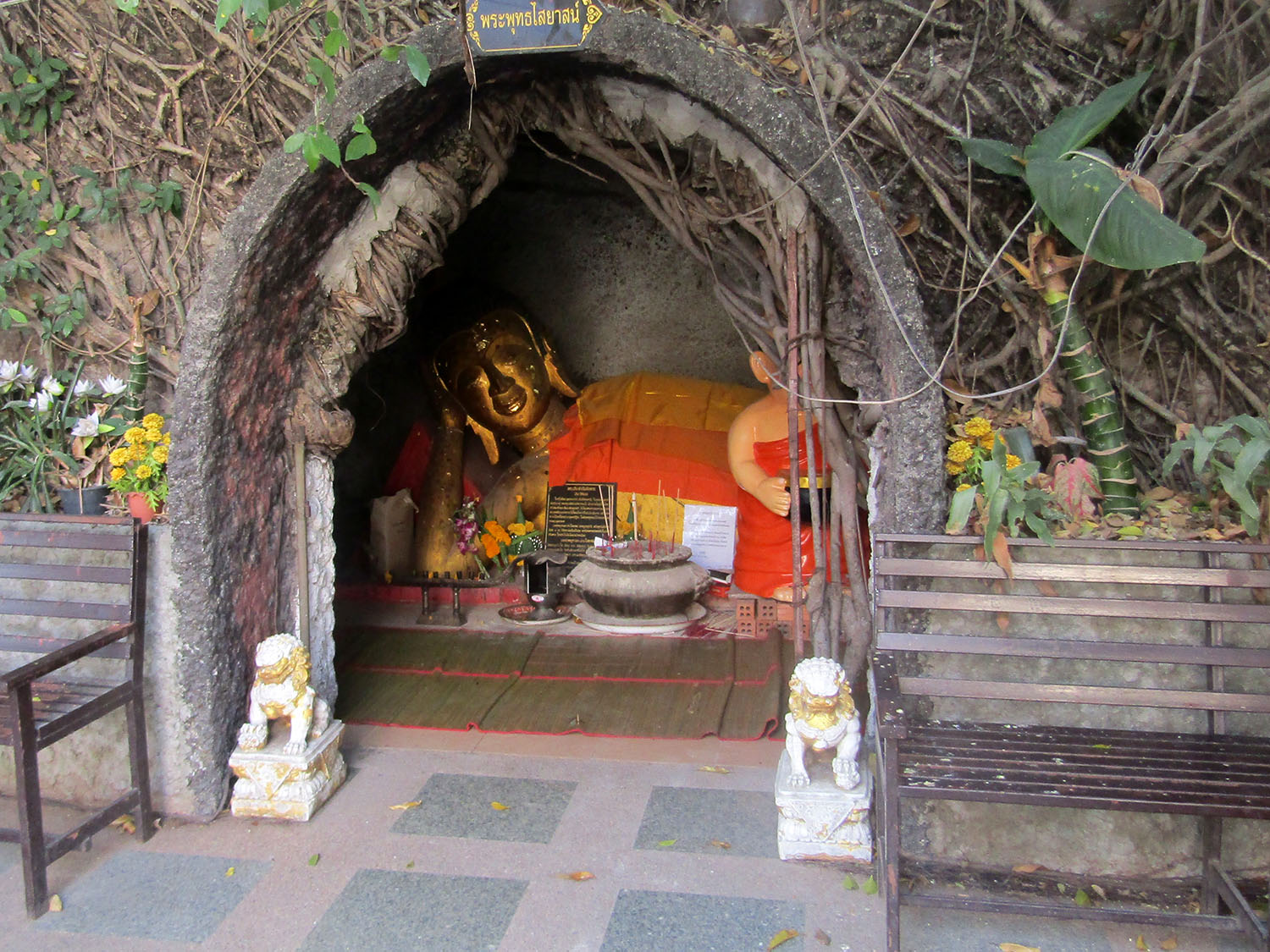 Wat Burapha Phiram and the Eastern Gate, Roi-Et
Wat Burapha Phiram and the Eastern Gate, Roi-Et
Wat Nuea……..From information Katoon is given at this temple, she plans a visit to another temple further in the city. Locating Wat Nuea, this temple in the northwest quarter of town has a peaceful ambience. It's known for its 1200-year-old brick chedi from the Dvaravati period, which has an unusual four-cornered bell-shaped form that's rare in Thailand. Also inside the cloister (these are common in most of Thailand, but rare in Isan) are some old Dvaravati bai săir·mah (Buddhist boundary stones) and a giant bodhi tree. Also in the cloister is a shrine containing a stone pillar.
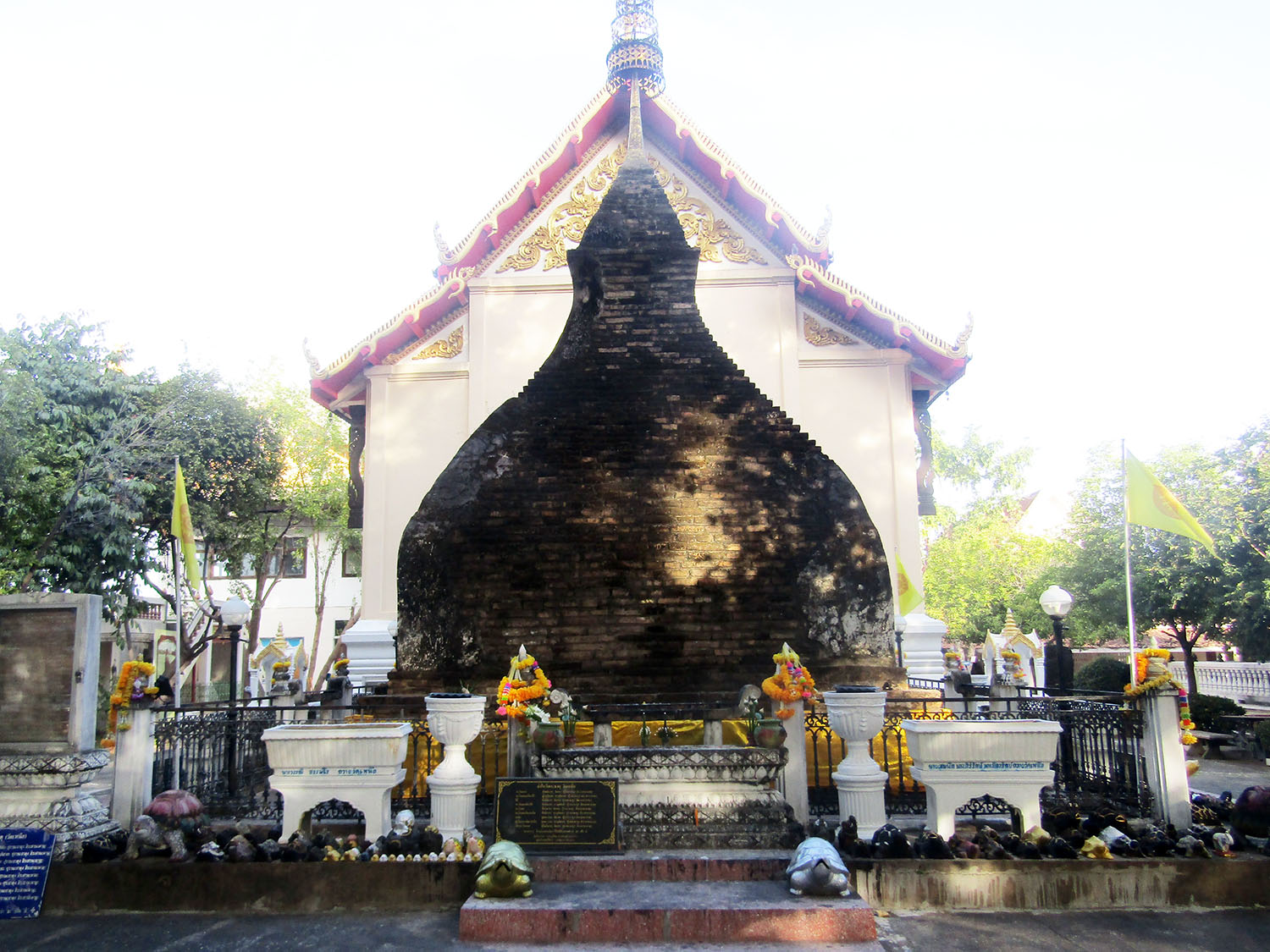
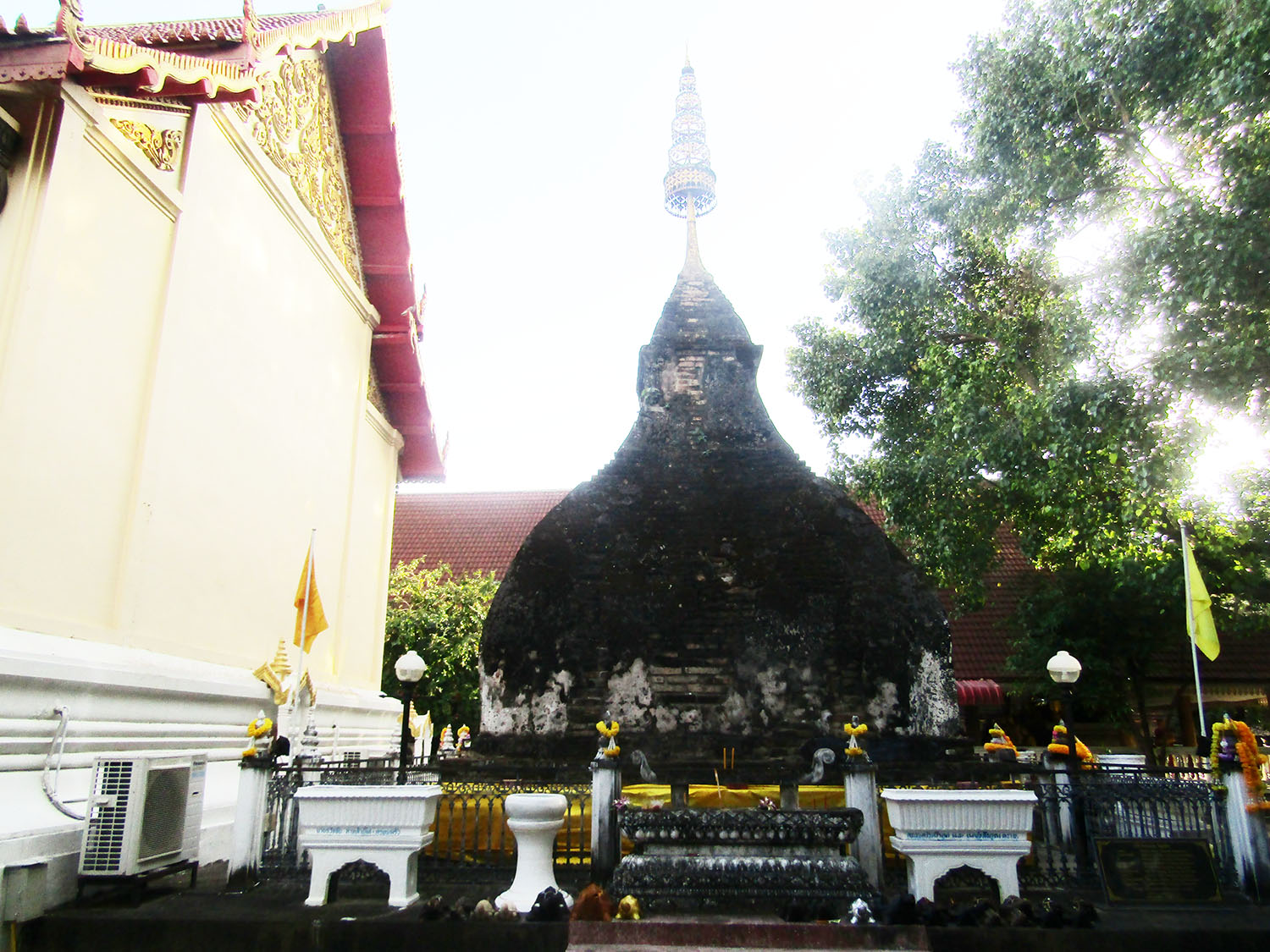
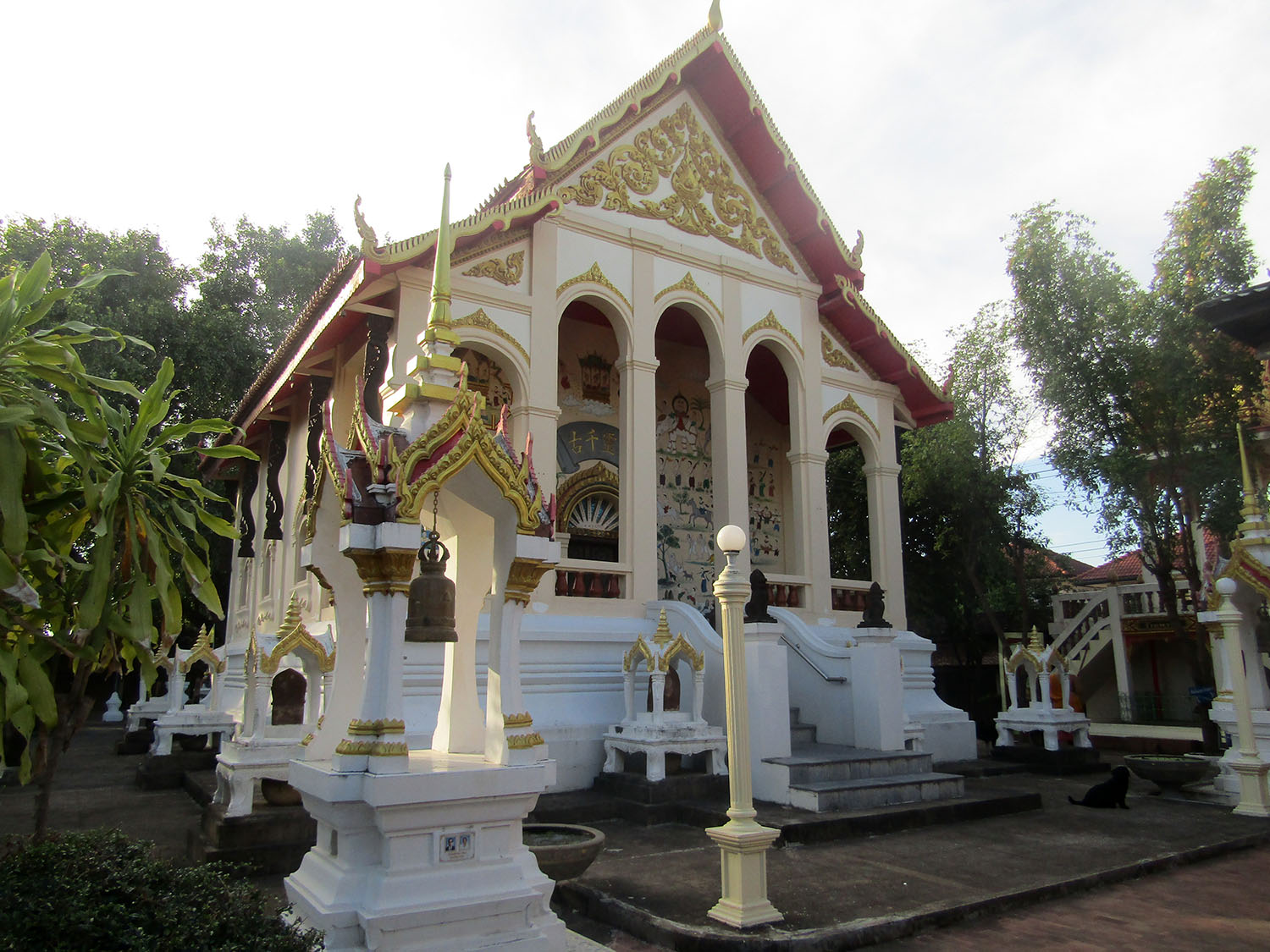
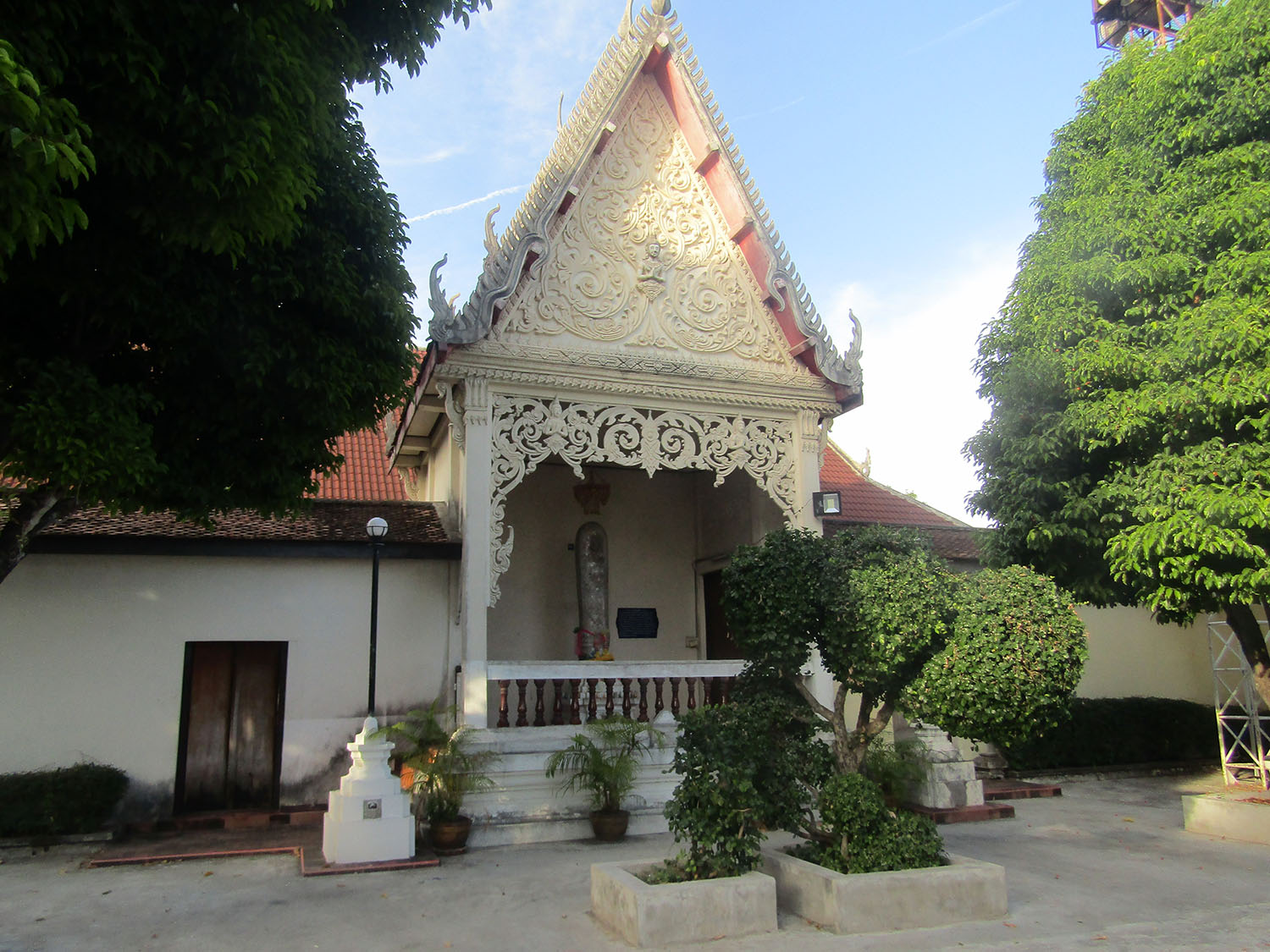
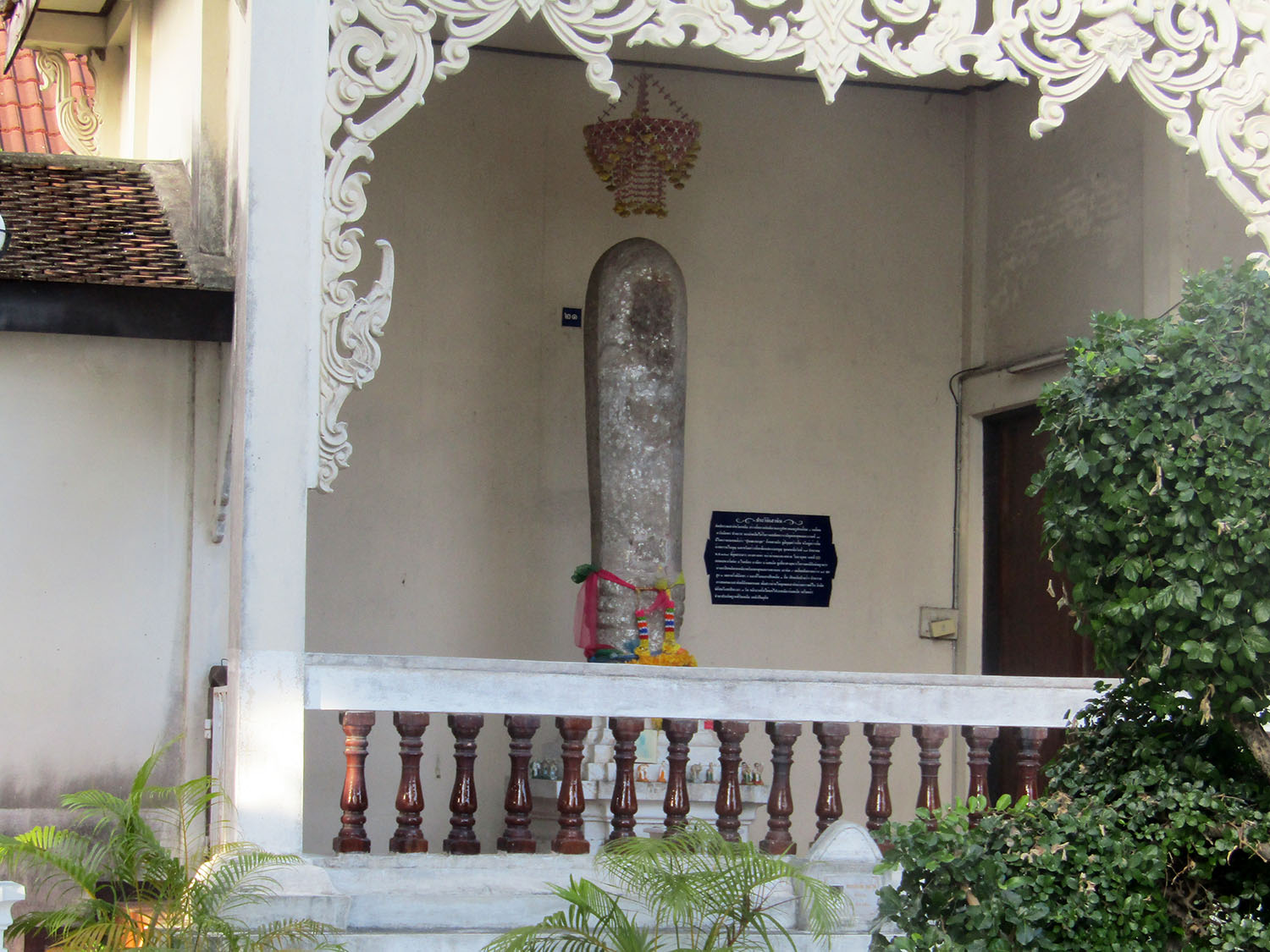
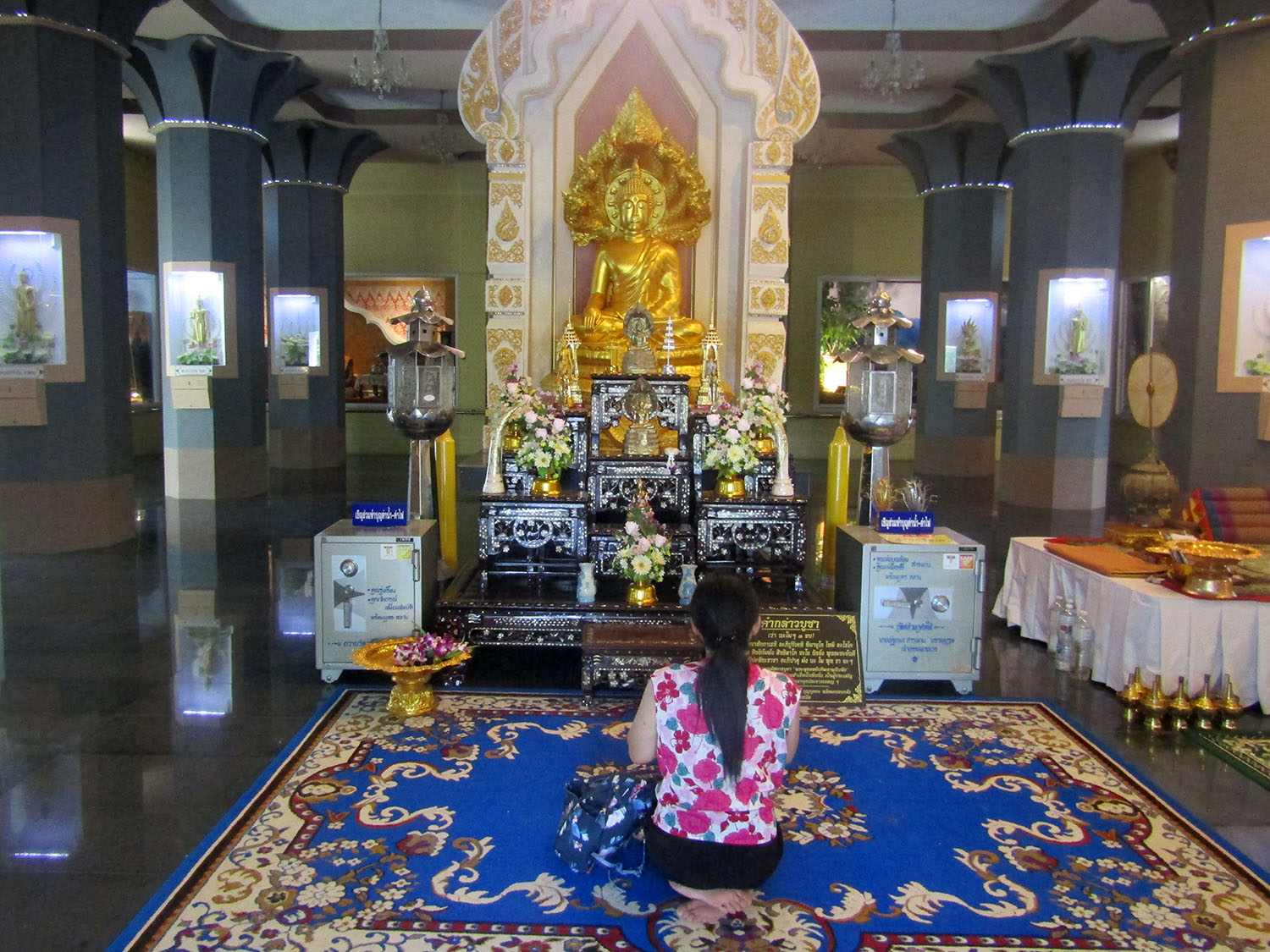 Wat Nuea, City District, Roi-Et Province
Wat Nuea, City District, Roi-Et Province
Kantima Hotel……..With the beginnings of a city tour underway, it’s not necessary to complete the tour today, so at around 5pm, I logon to a hotel that Katoon has seen advertised in a magazine. Located outside the city to the west near the ring road, Kantima Hotel is on a quiet side street at the back of The Robinson retail complex. However the street entrance is rather obscure and we manage to miss it, forcing us to make a complicate maneuver around a major intersection. Arriving at the hotel we check out the room as we normally do and it’s at the high end of our expectations and as regards the price, well I’m dumbfounded. It’s joint cheapest so far this trip and as regards value for money, I just can’t remember anything better on any of my trips.
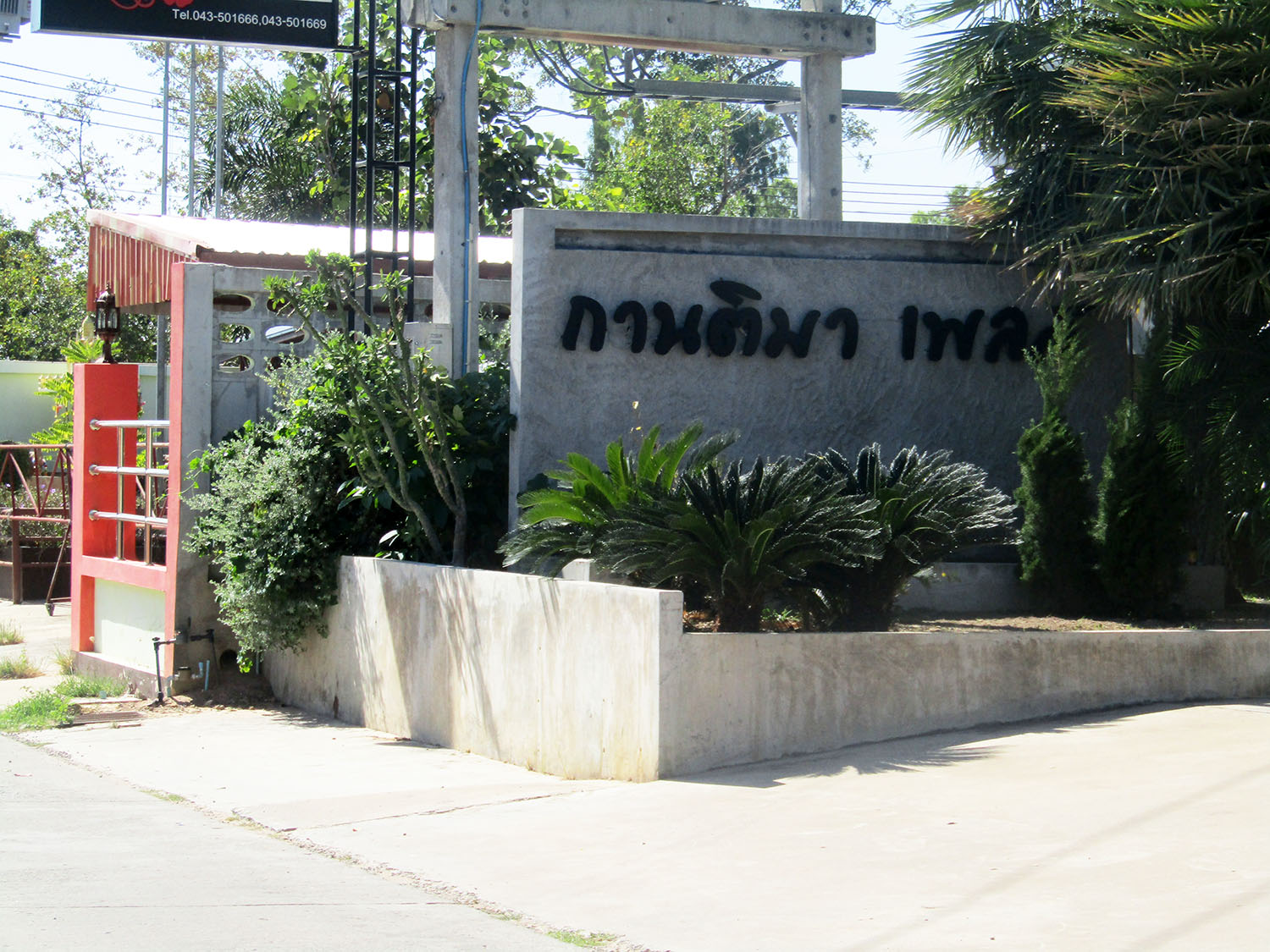
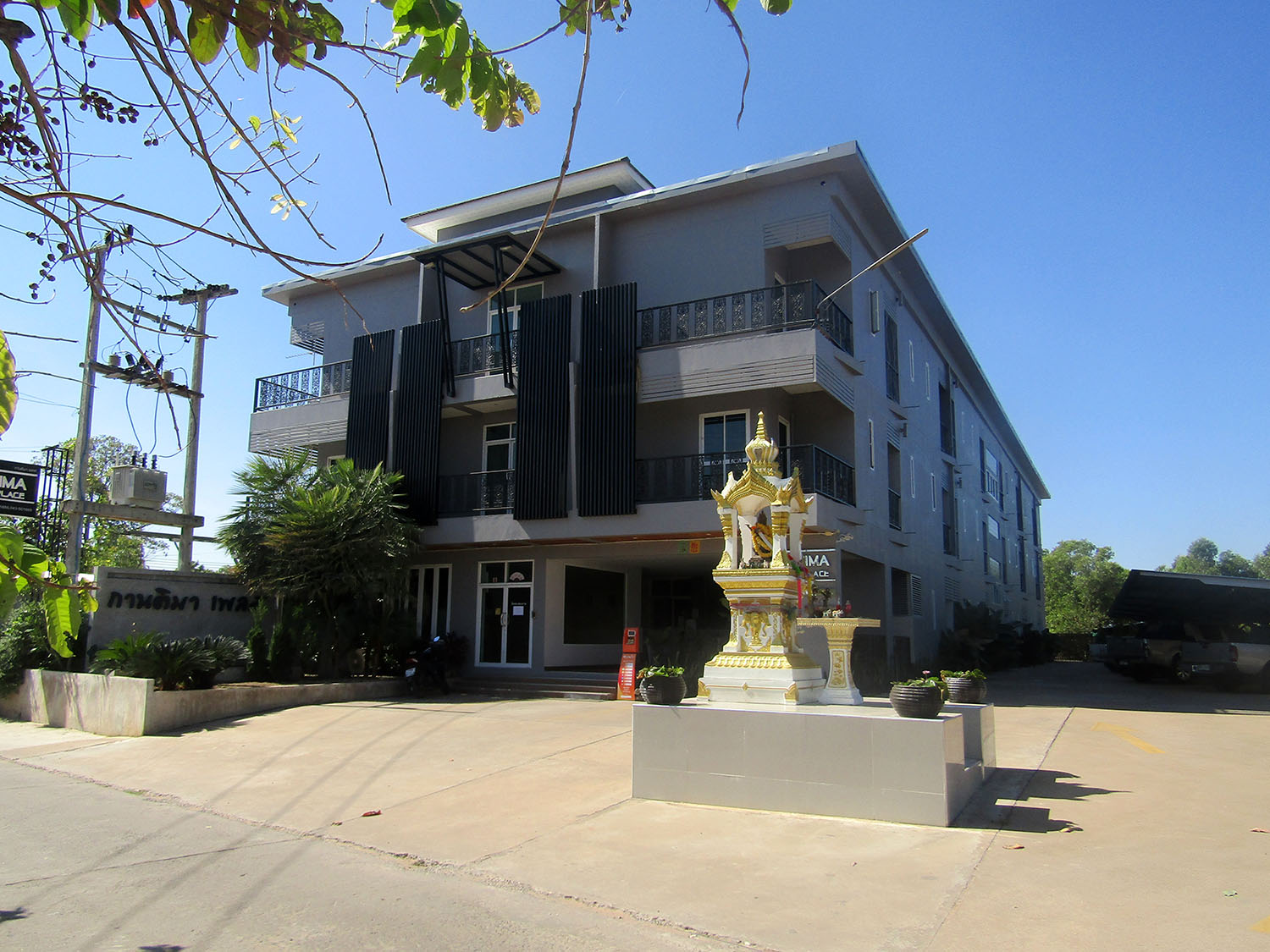
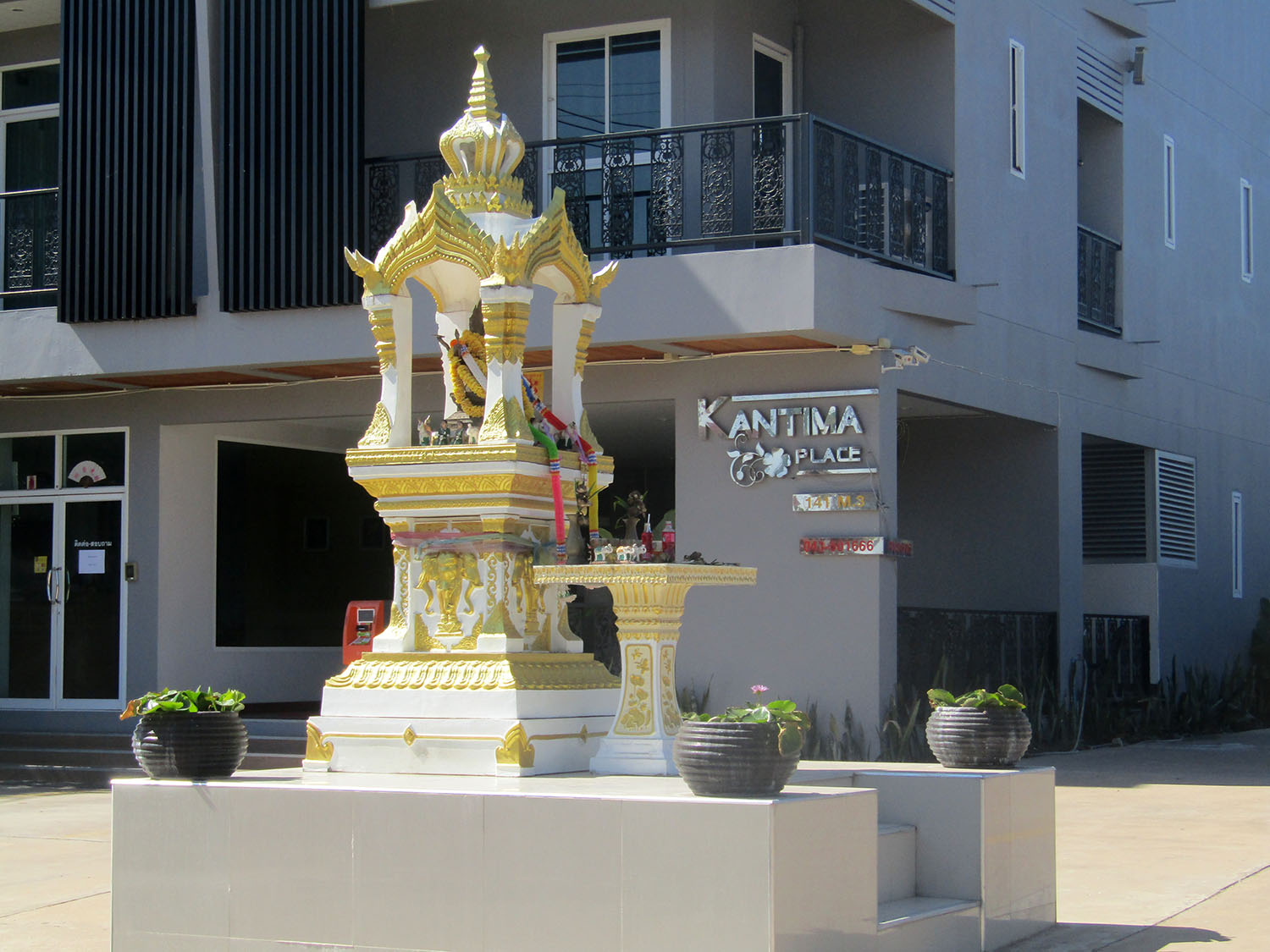 Kantima Hotel, Roi-Et
Kantima Hotel, Roi-Et
Regarding dinner, that issue is soon solved since there is a restaurant just next door. Sitting out looking over a rice field occupied by grazing cows, we find the food here amazing also. It’s not often a day finishes up like this. At 6.30pm there’s plenty of time to work on my notes and I allow myself the rare luxury of just relaxing for a change catching up with the news. Next Page.